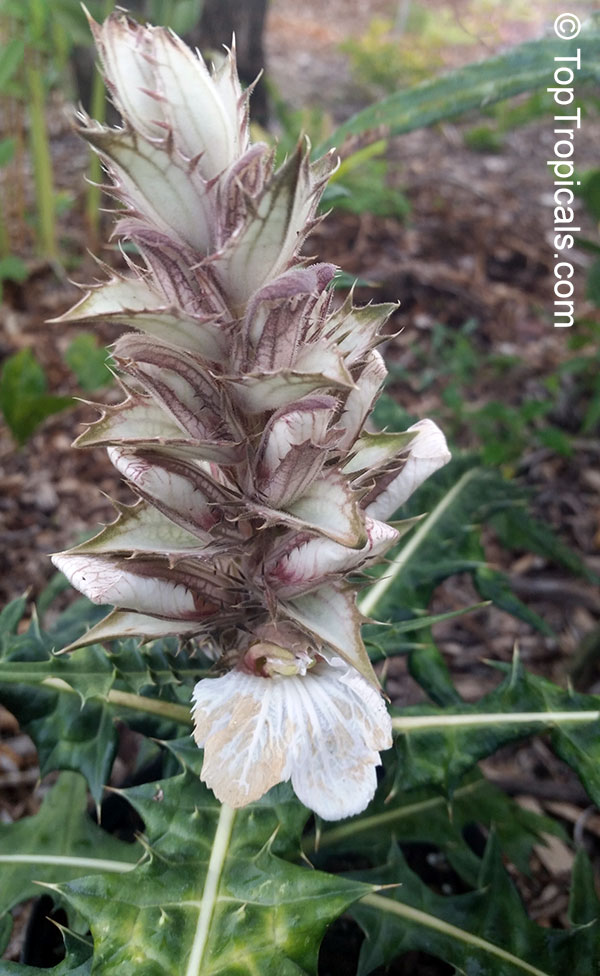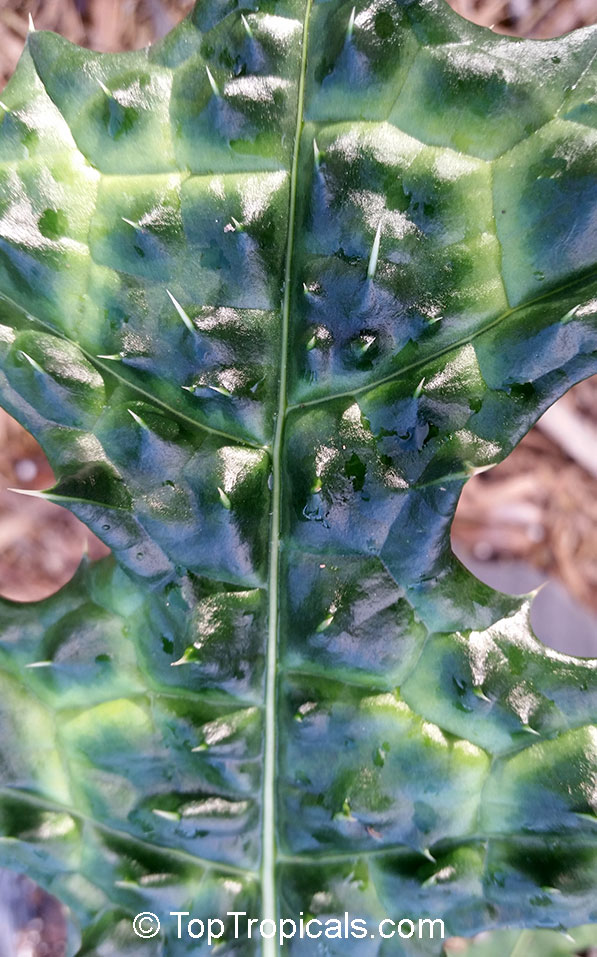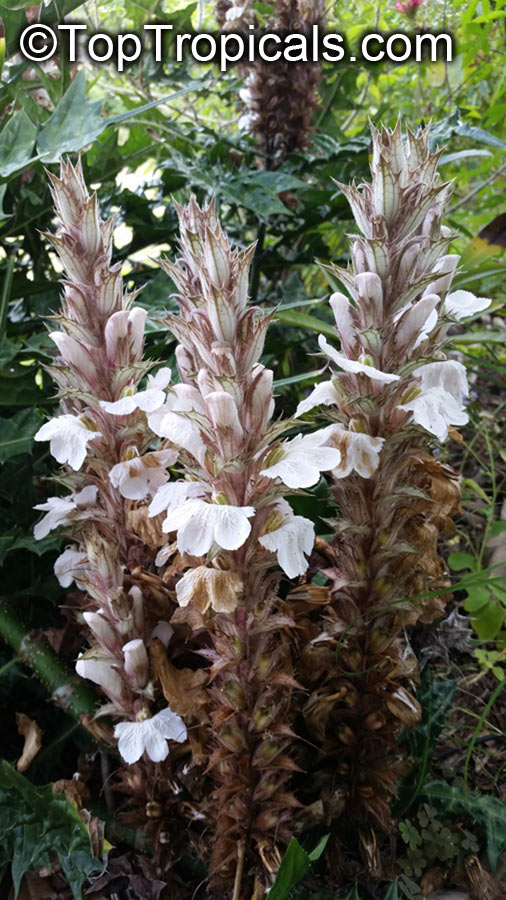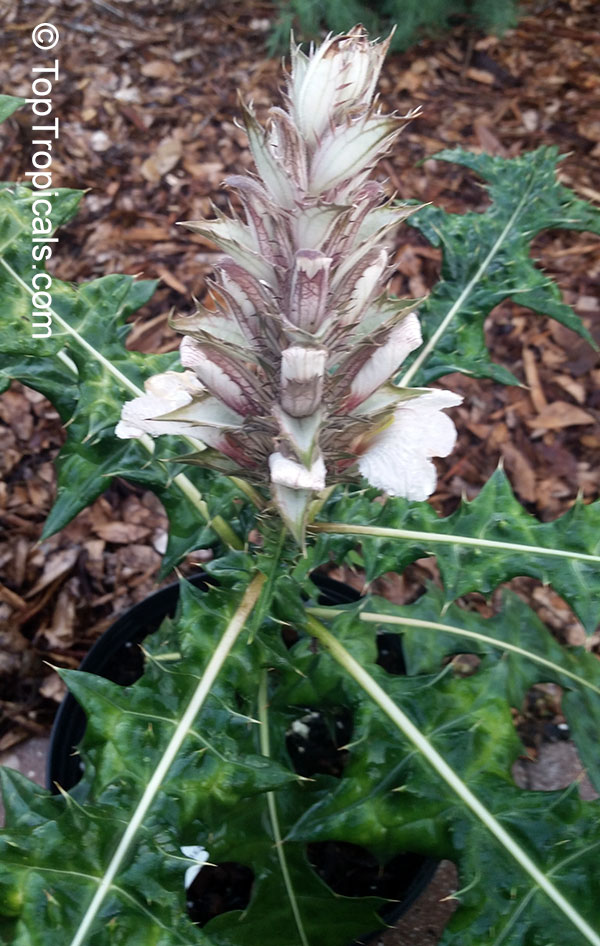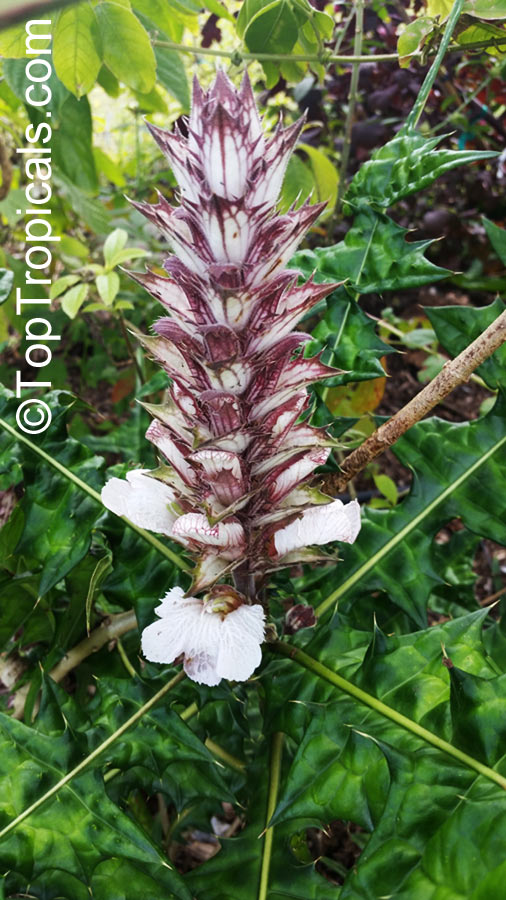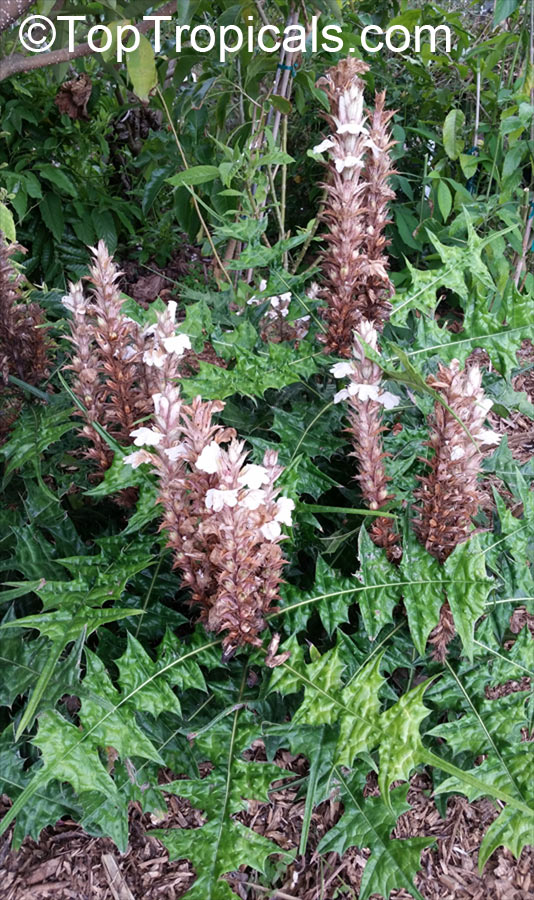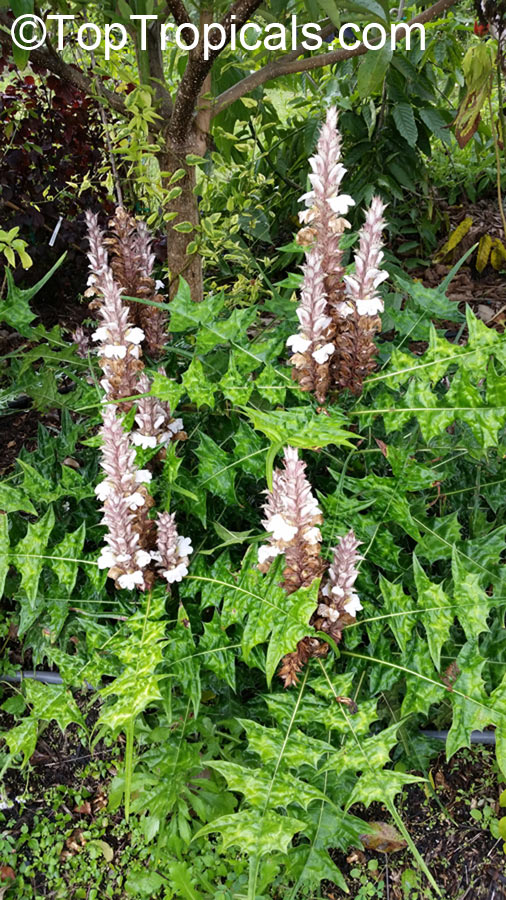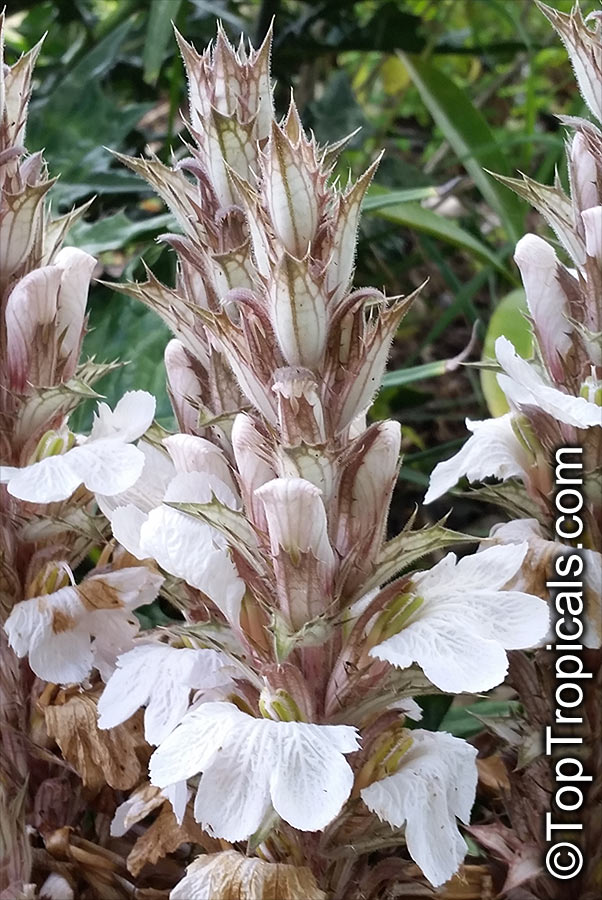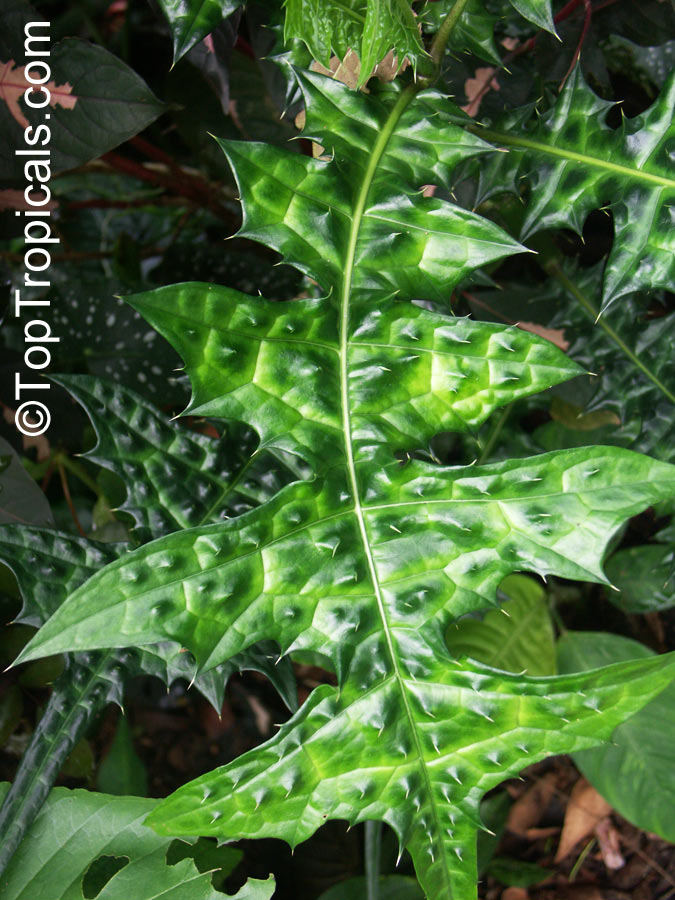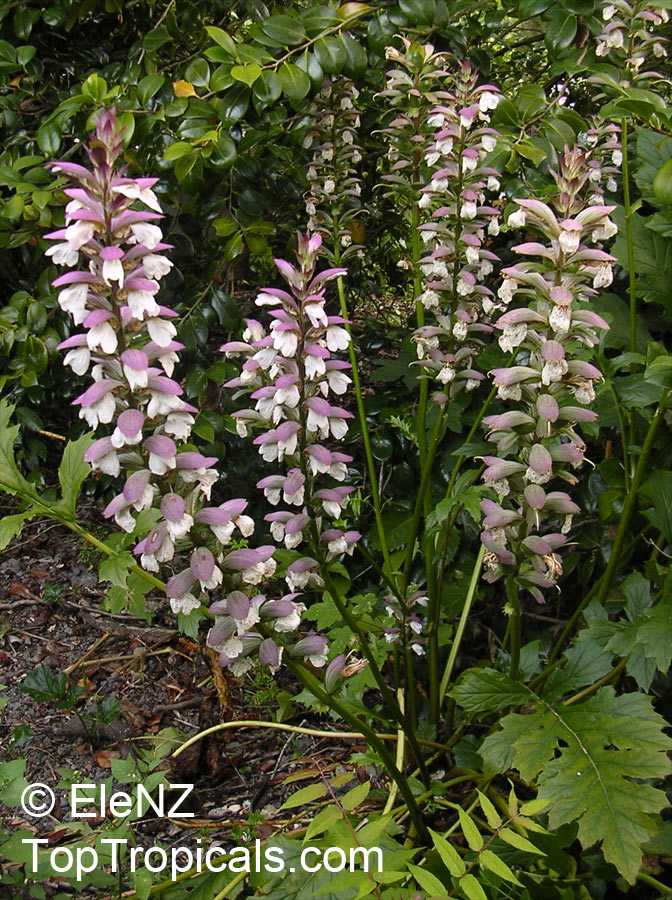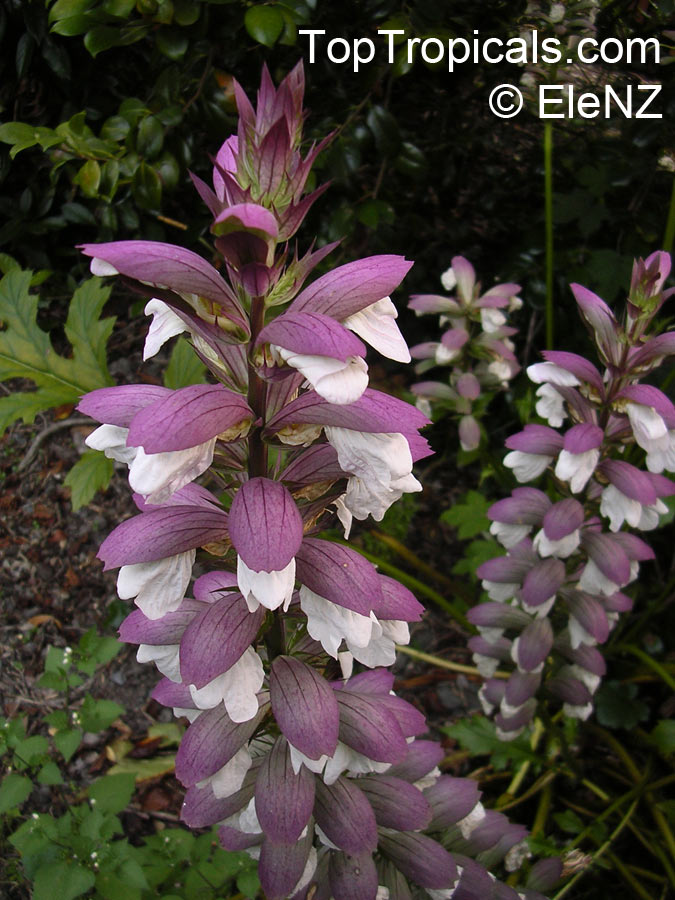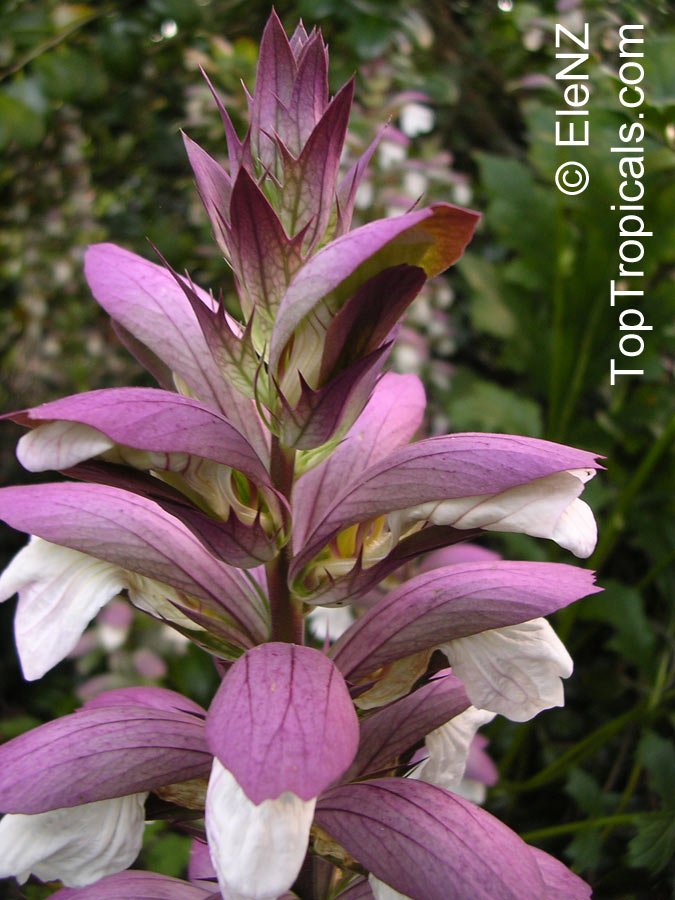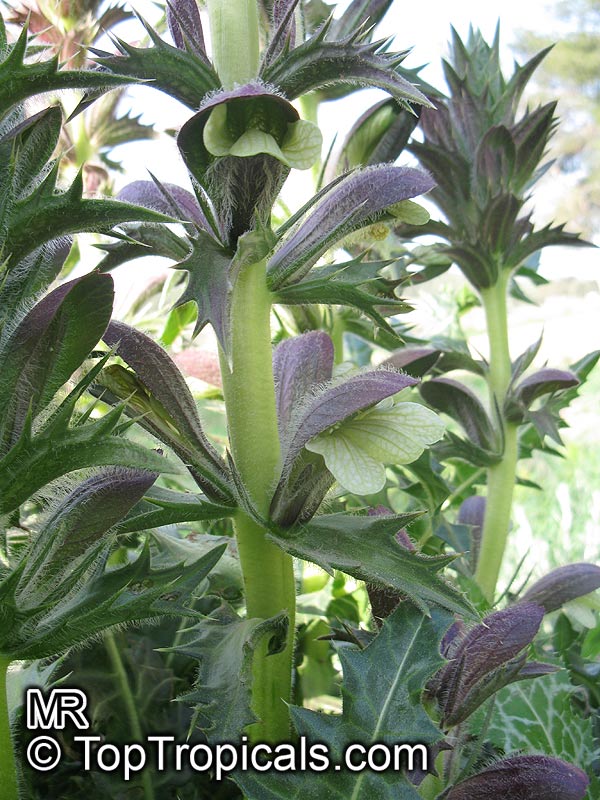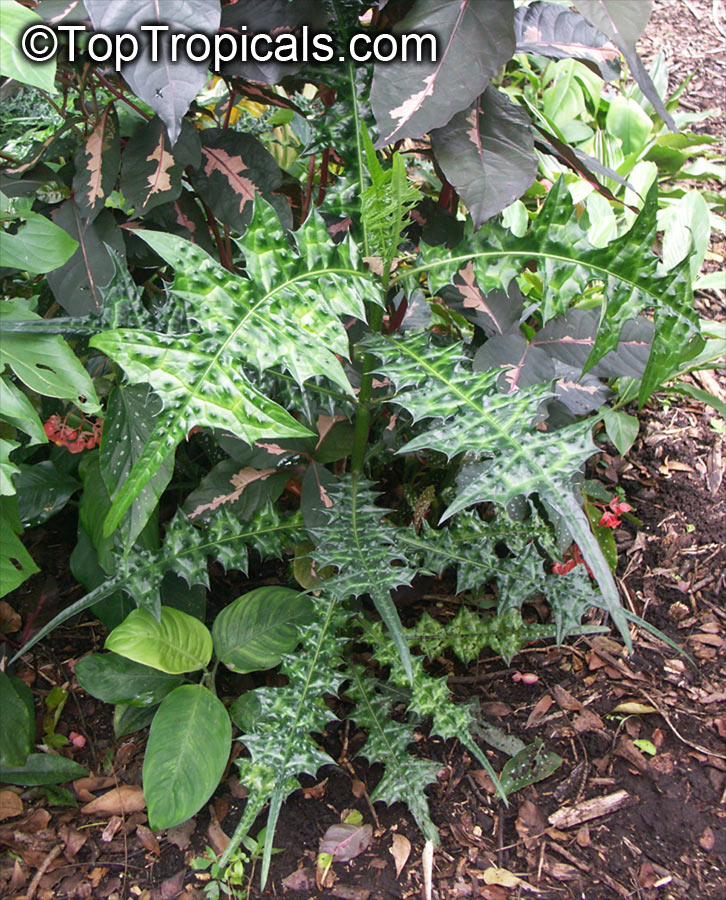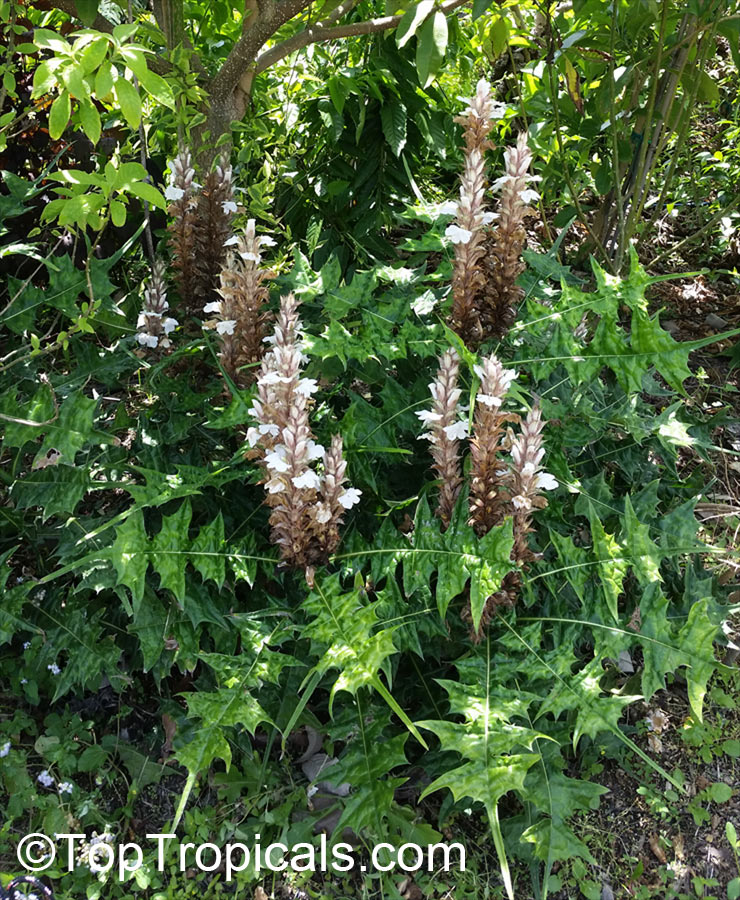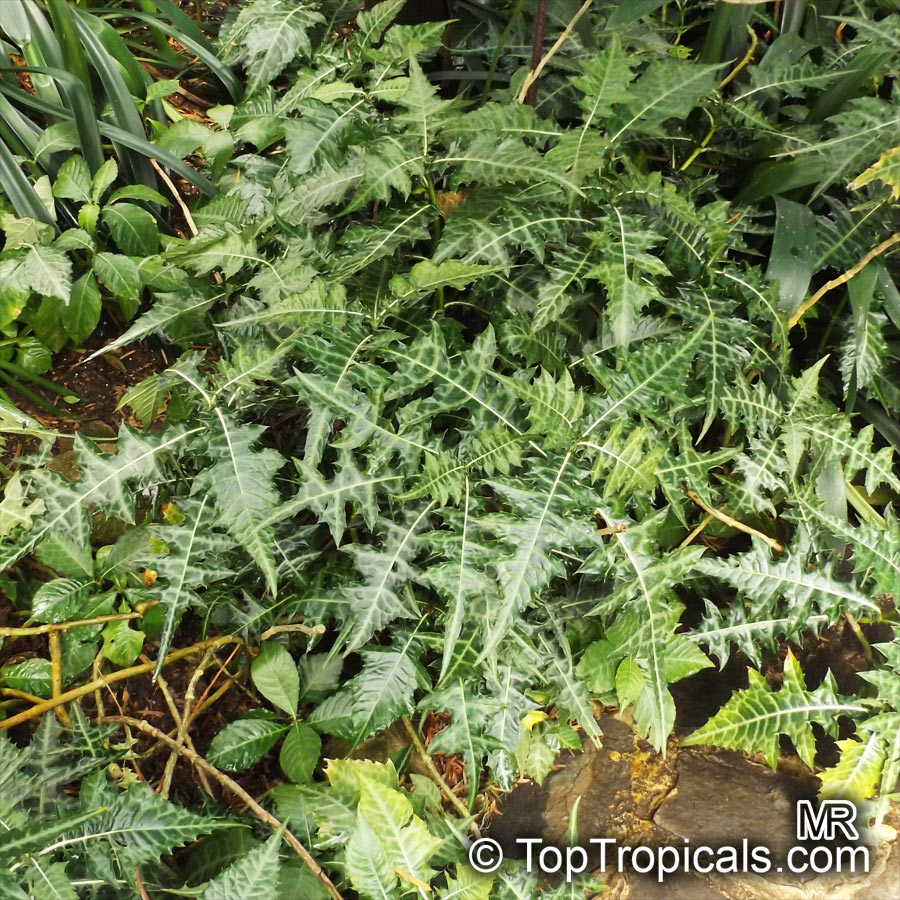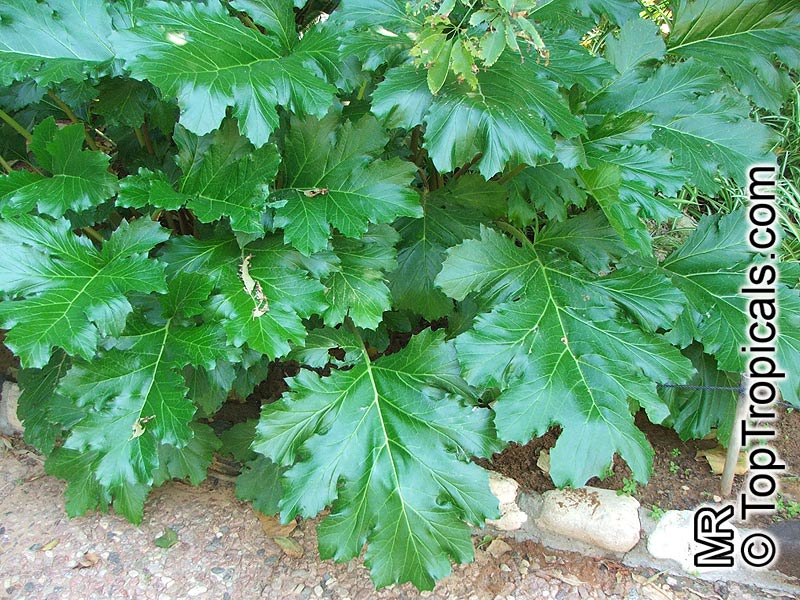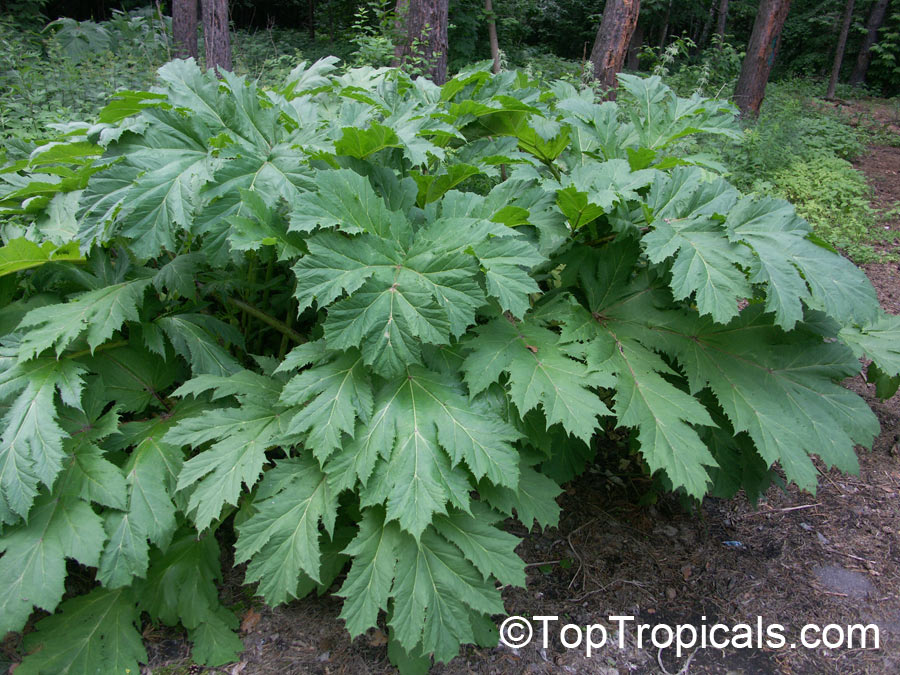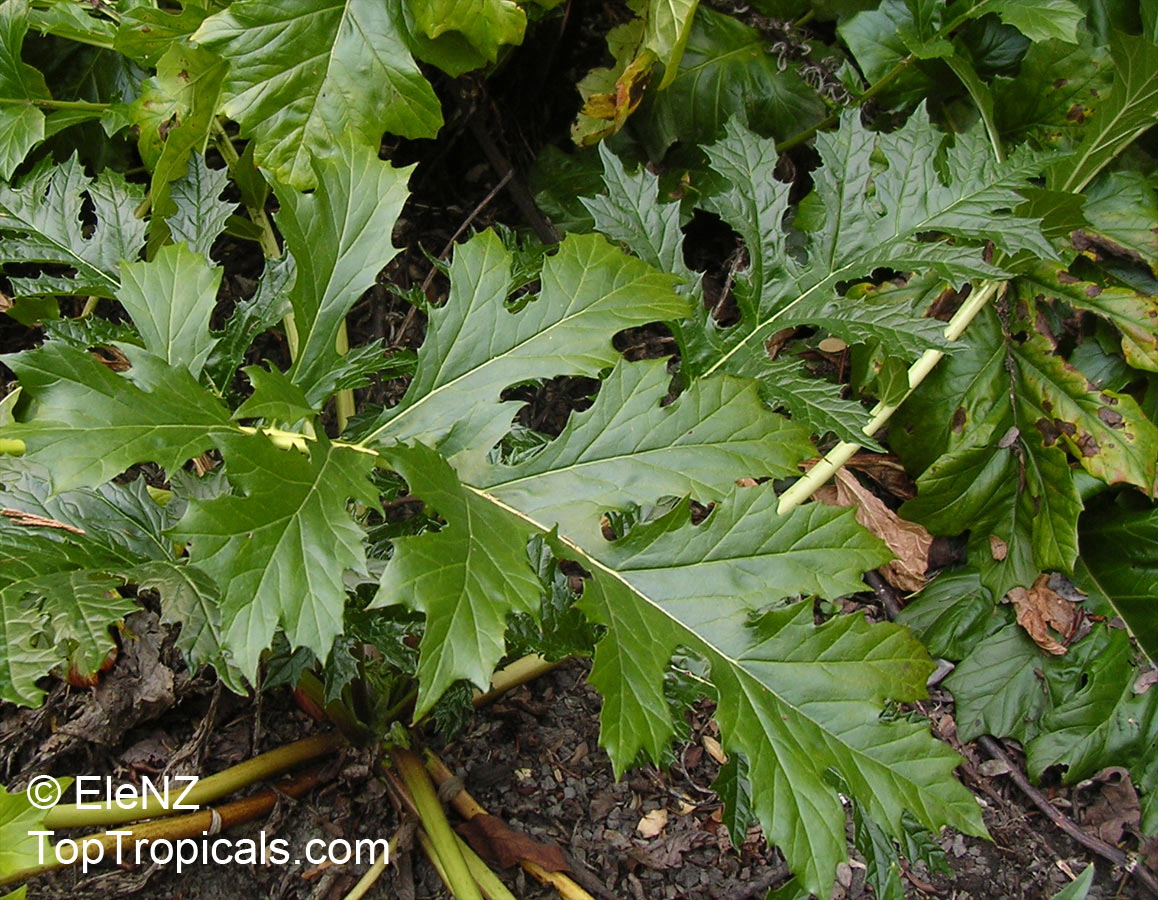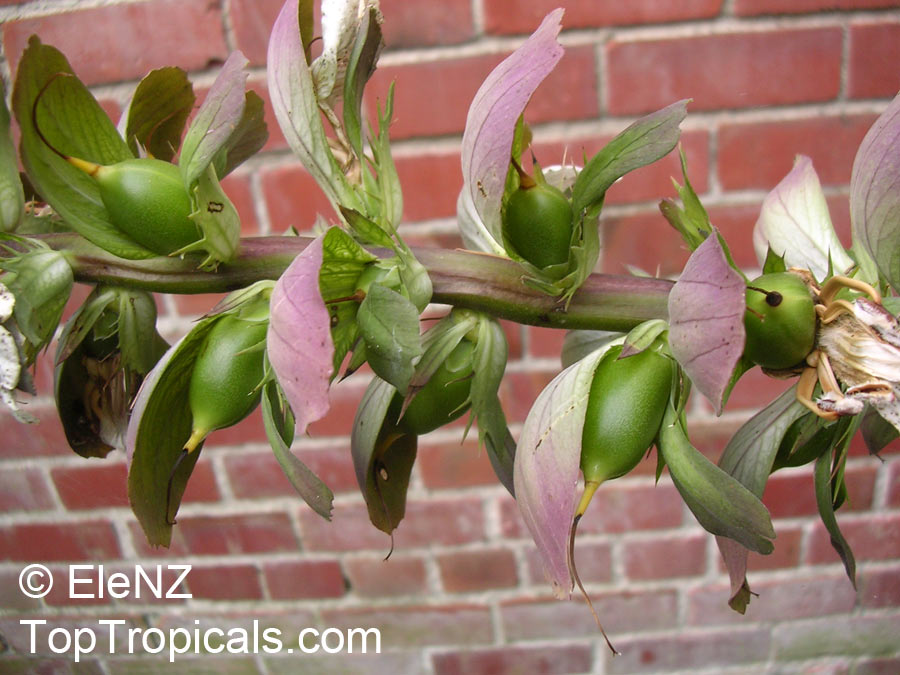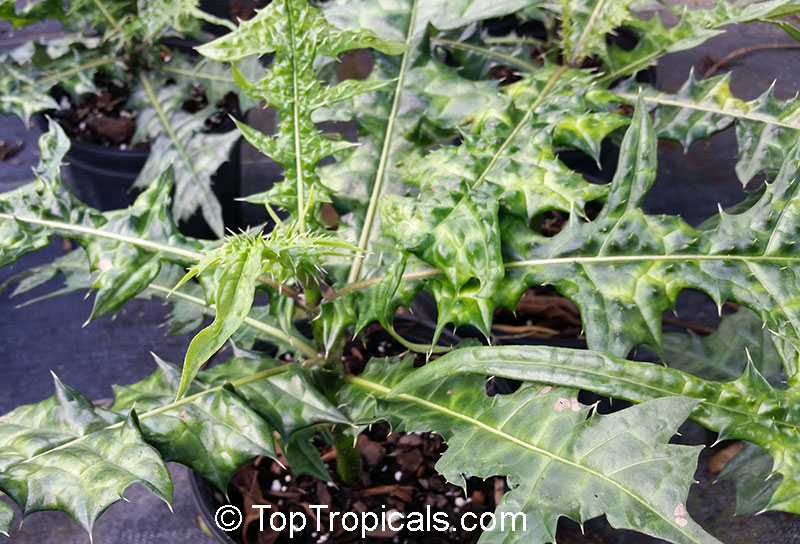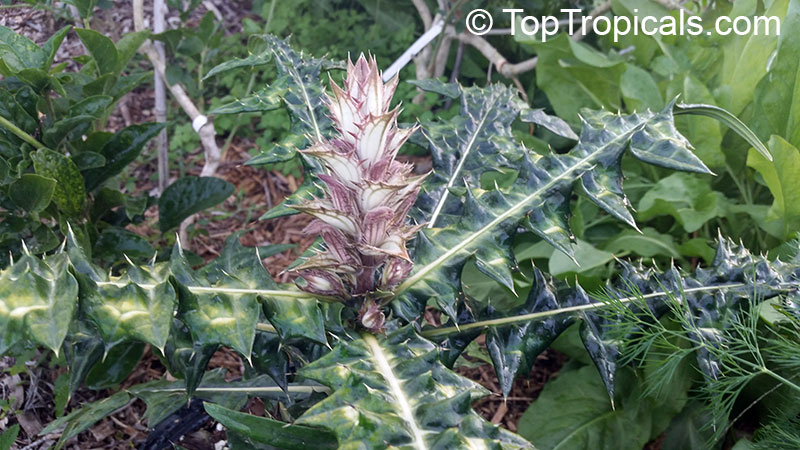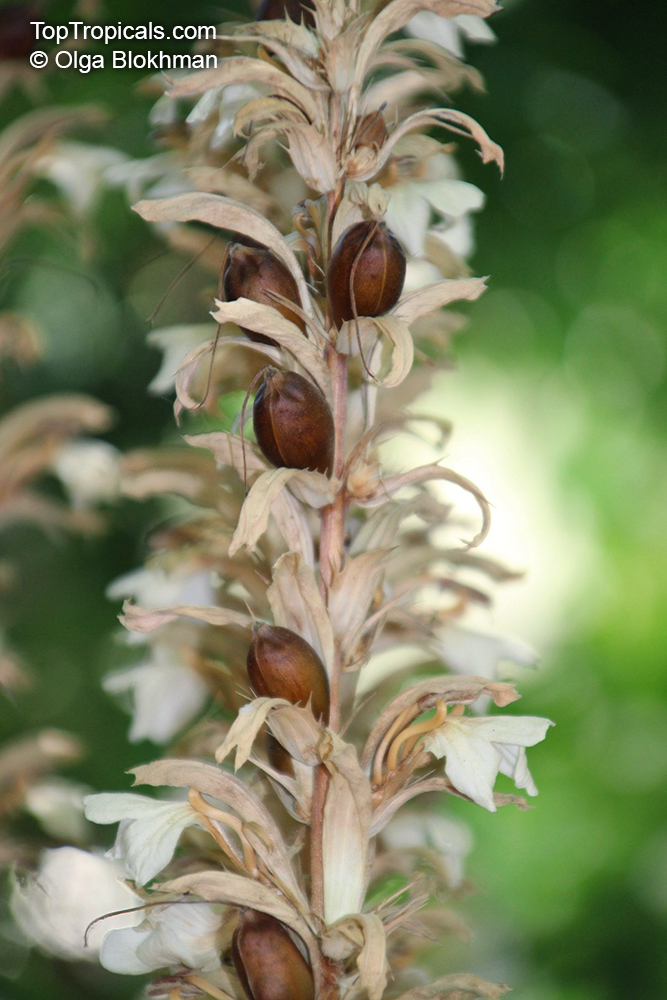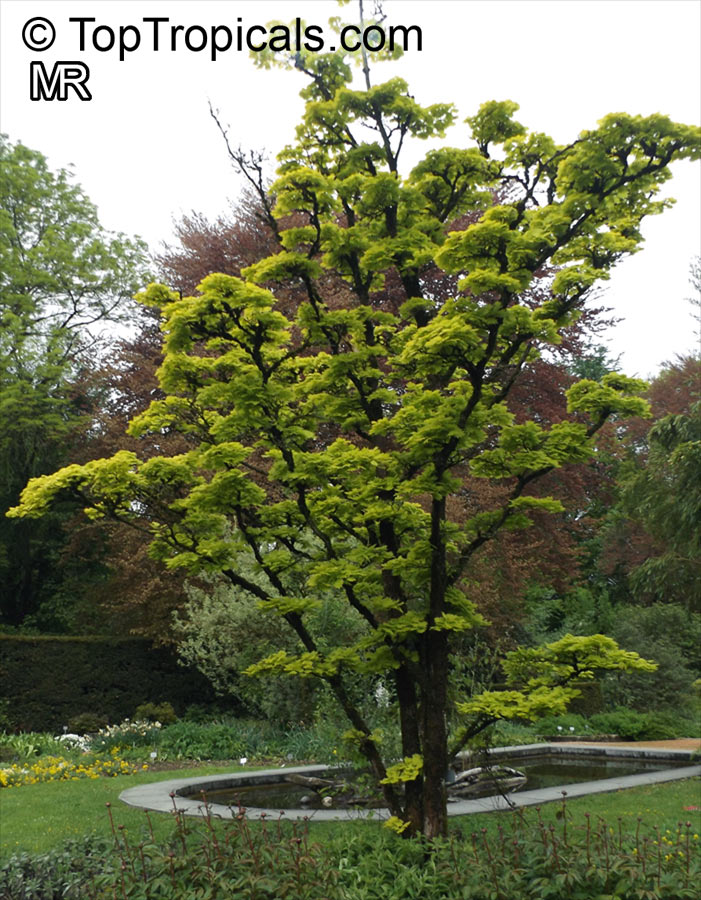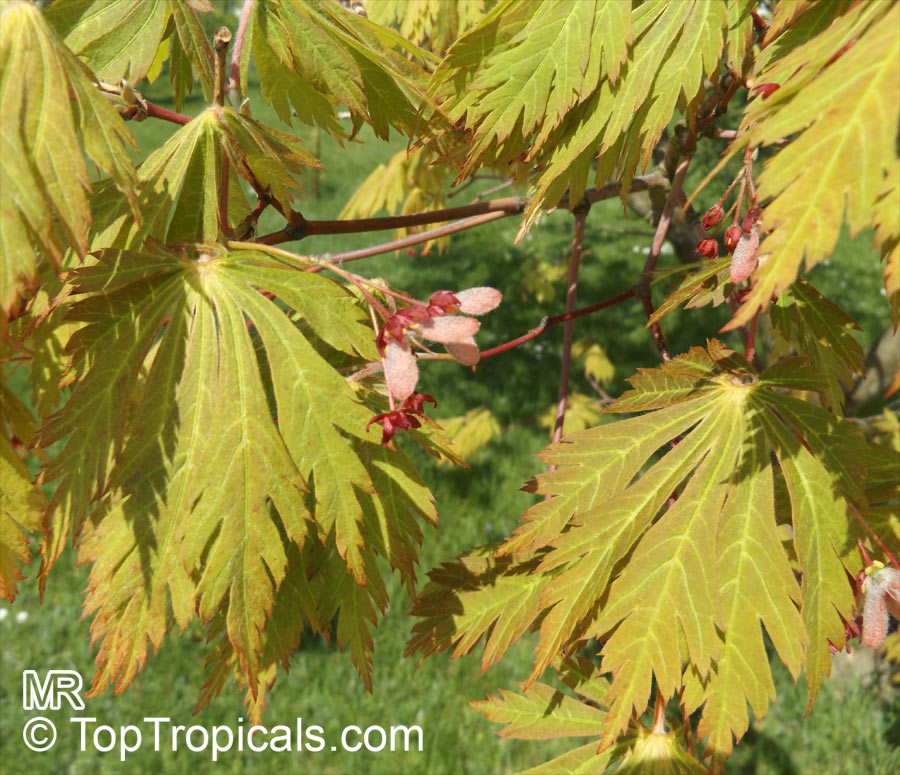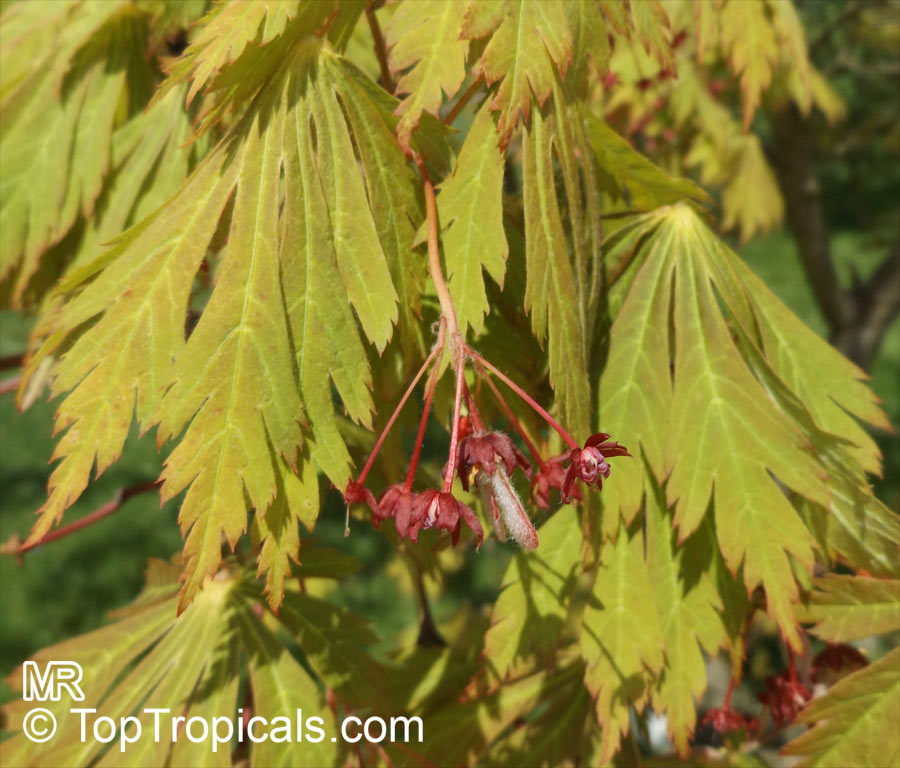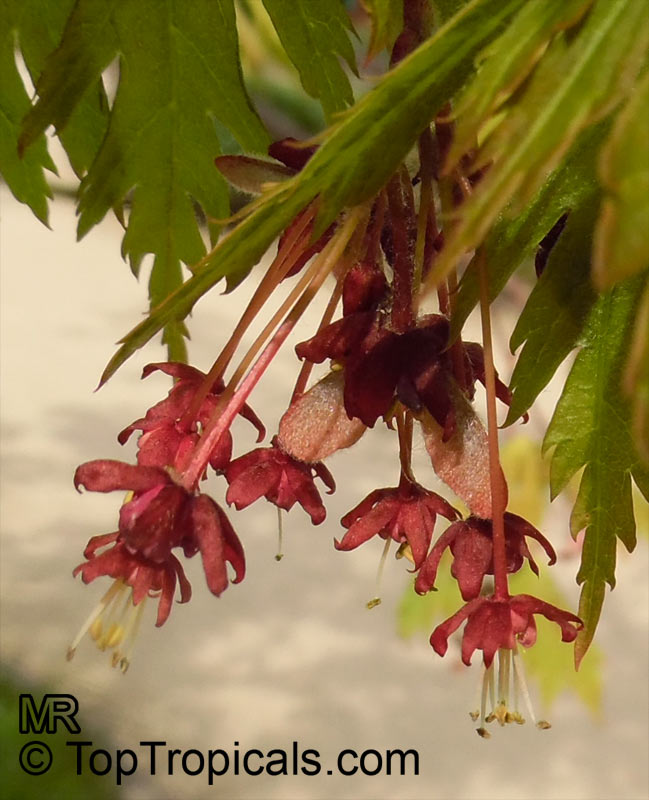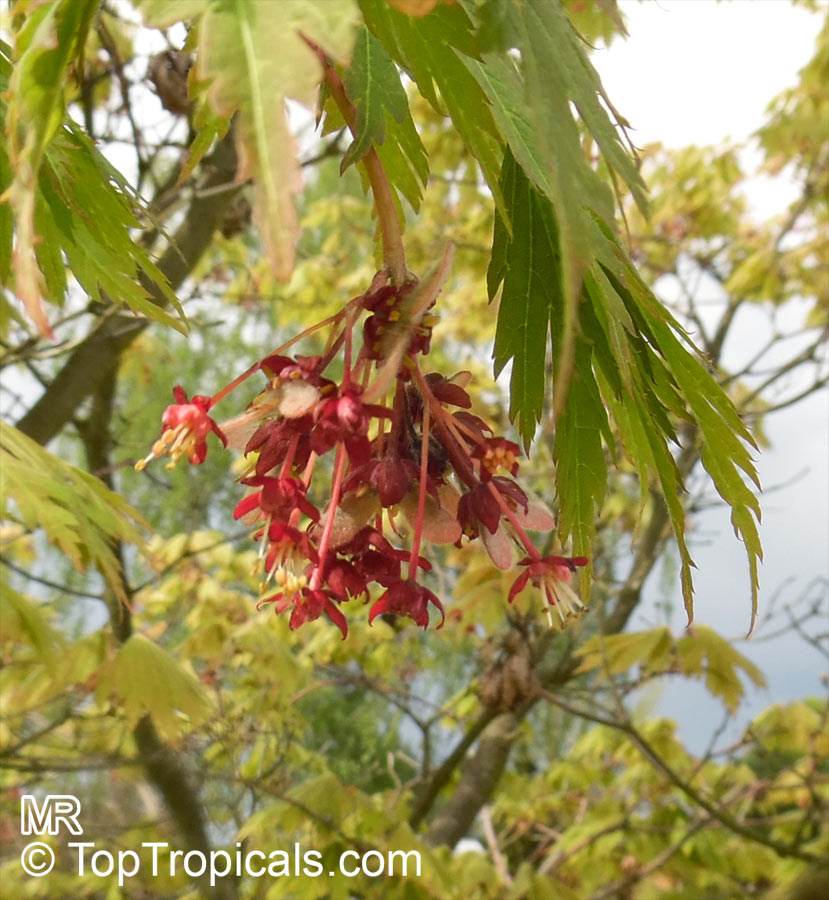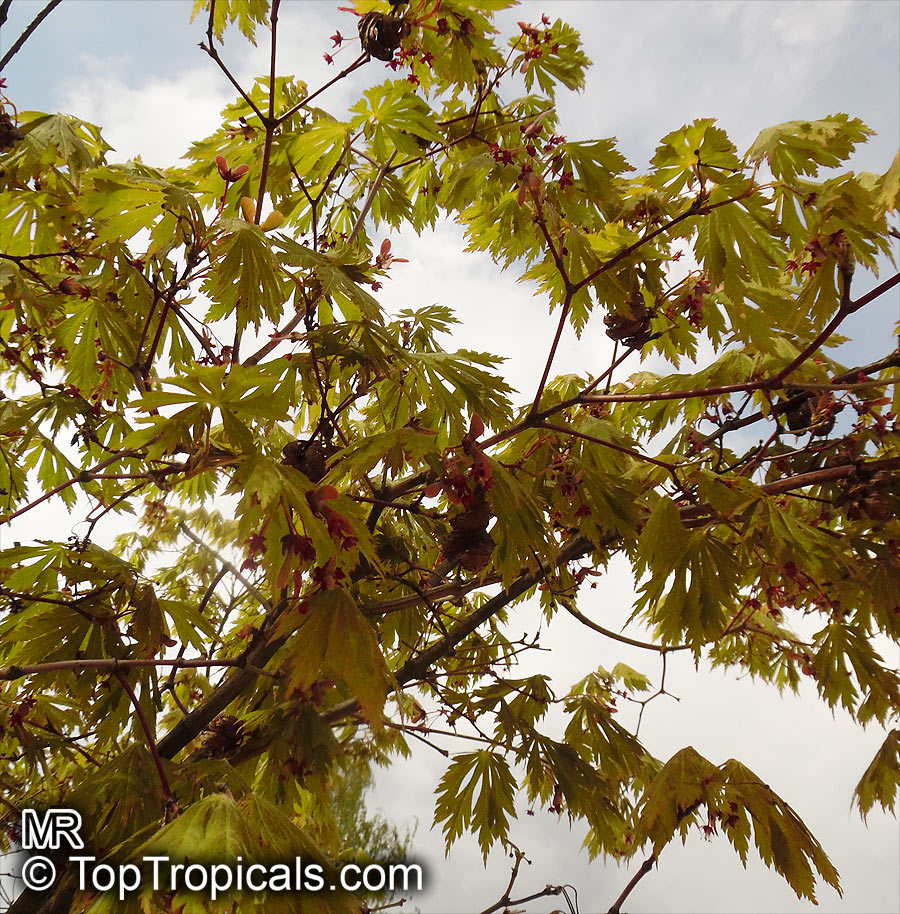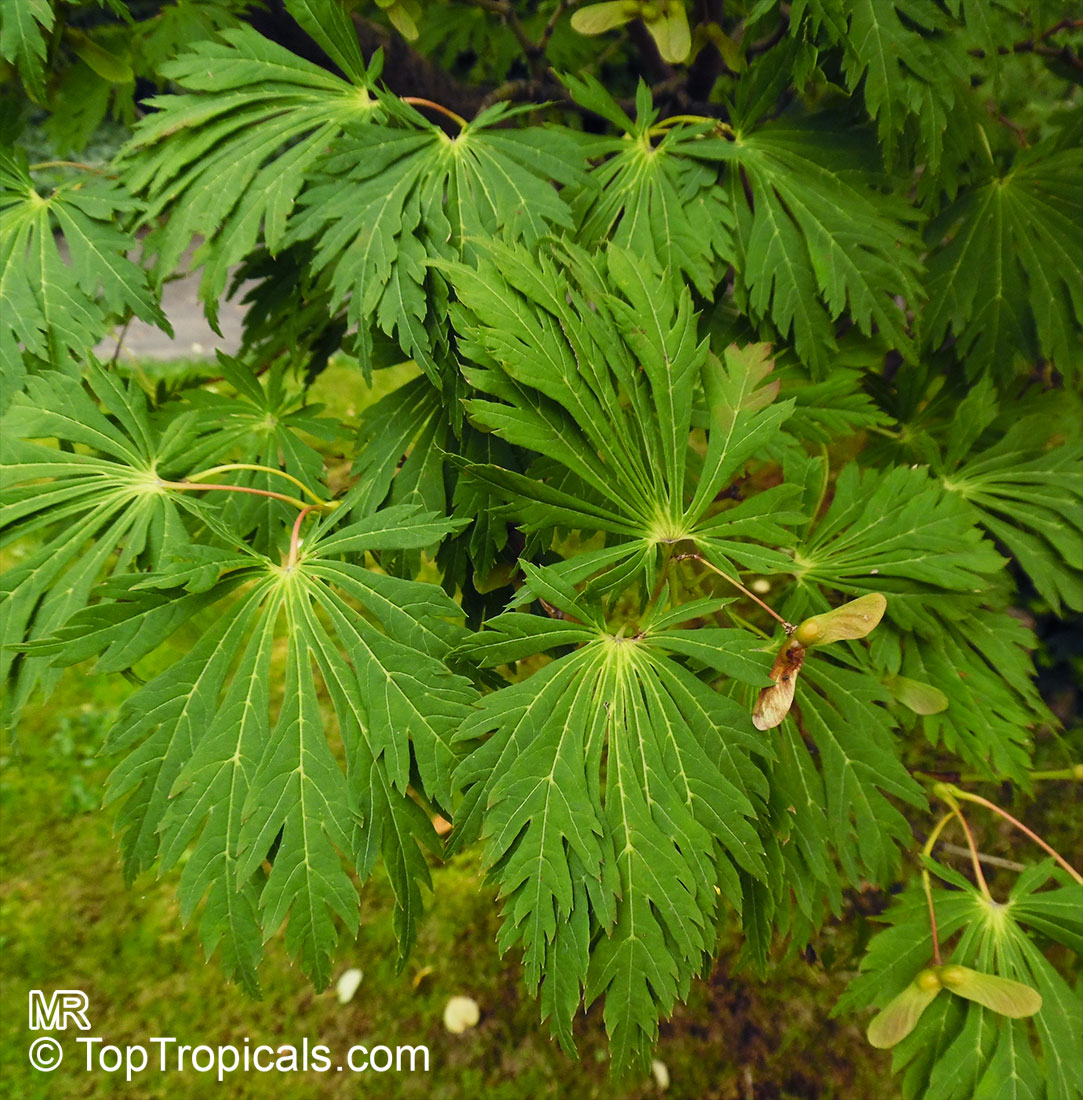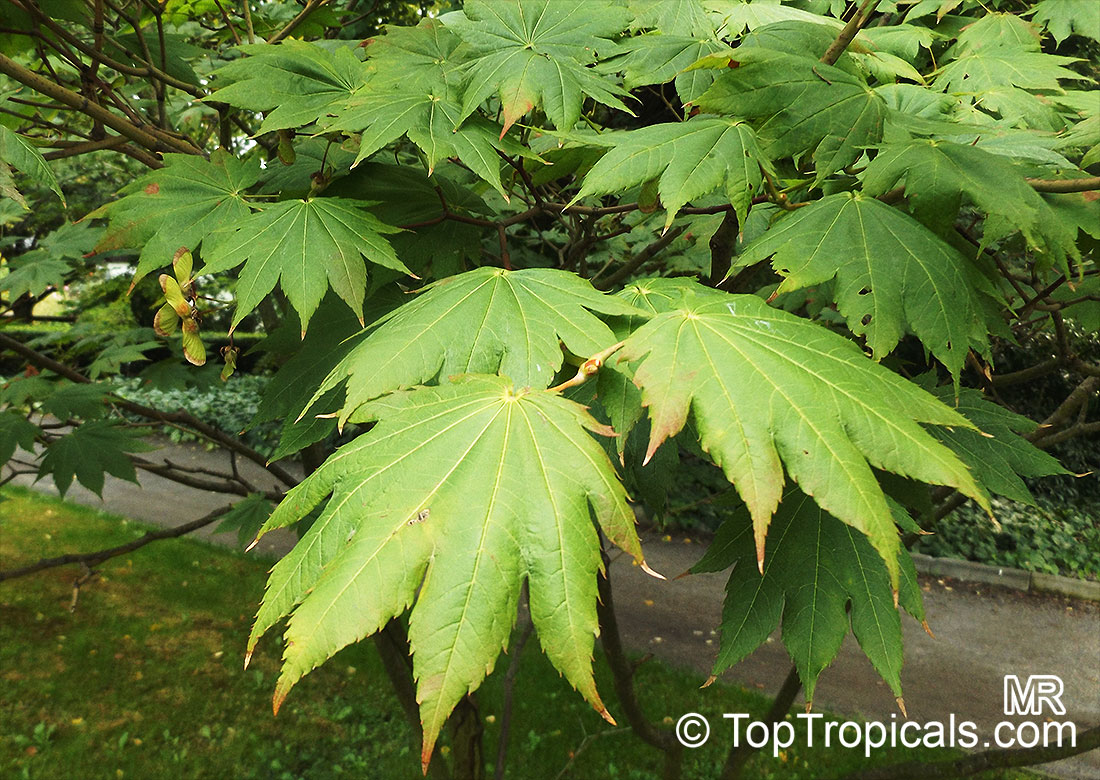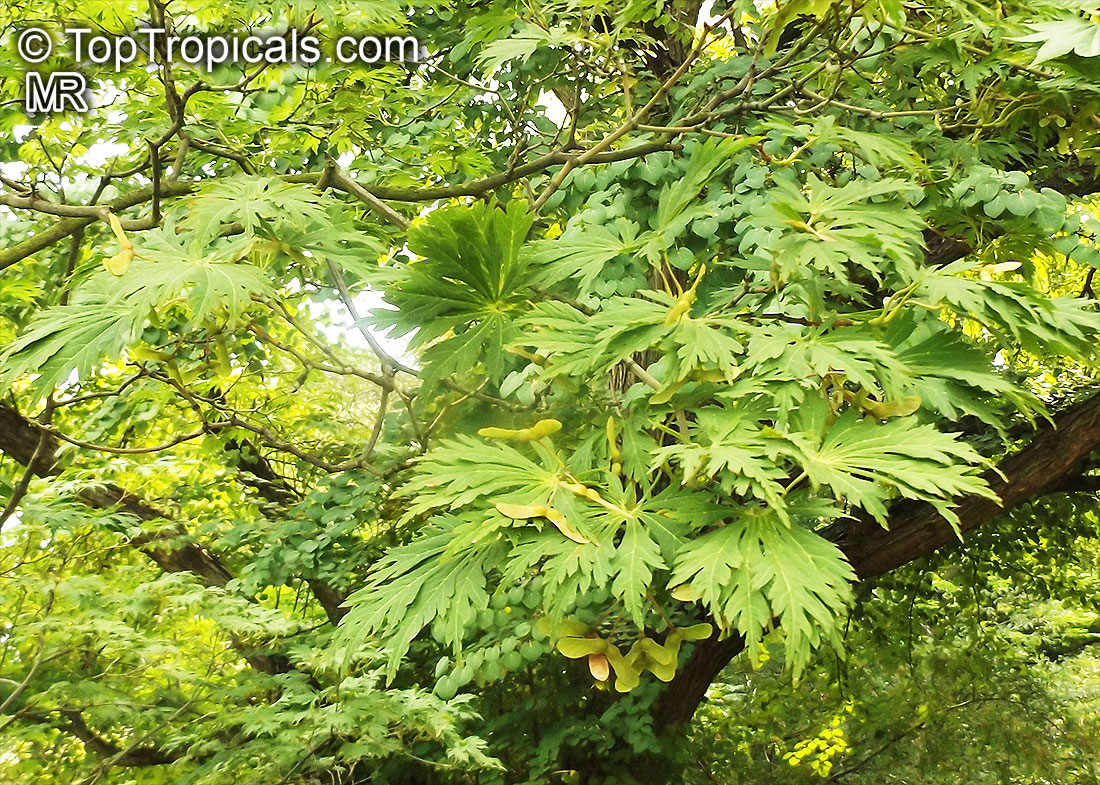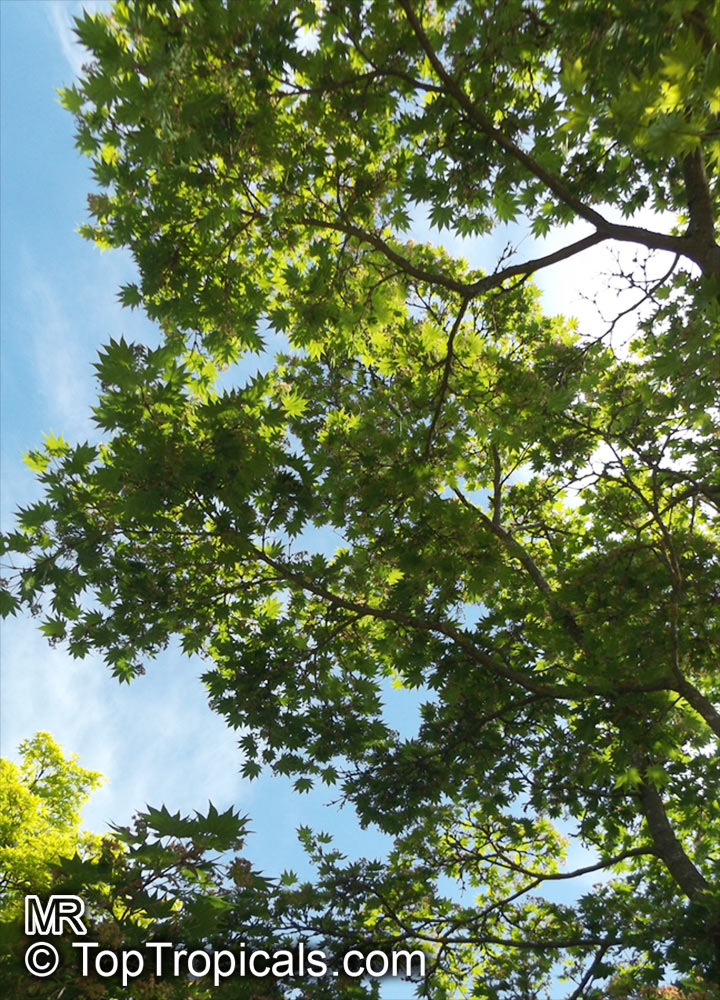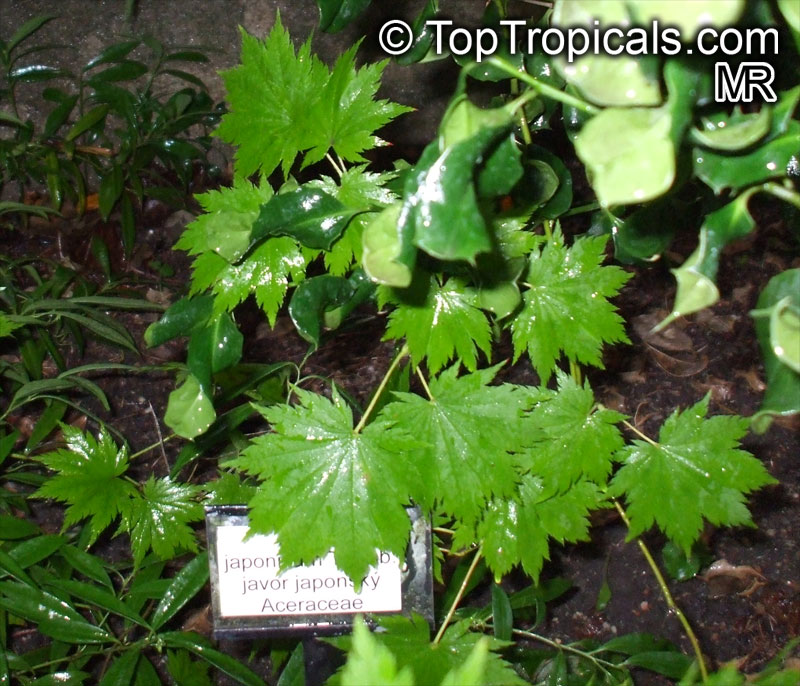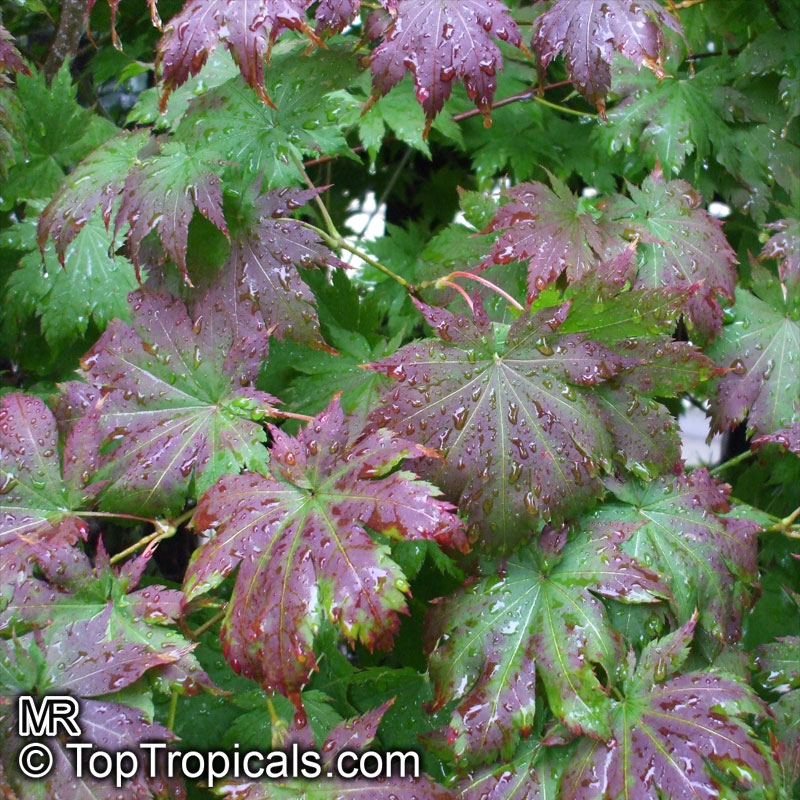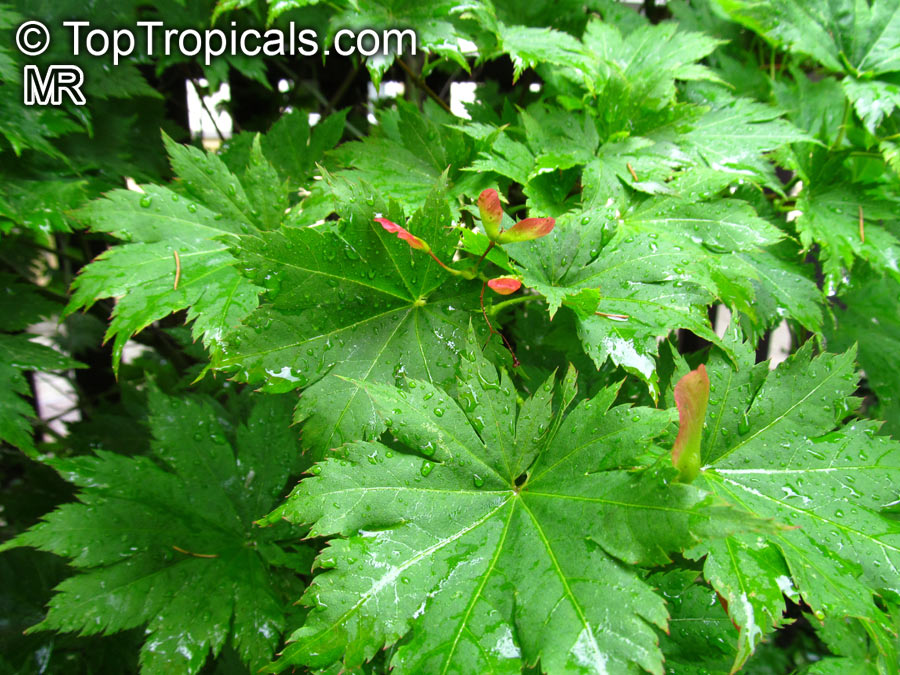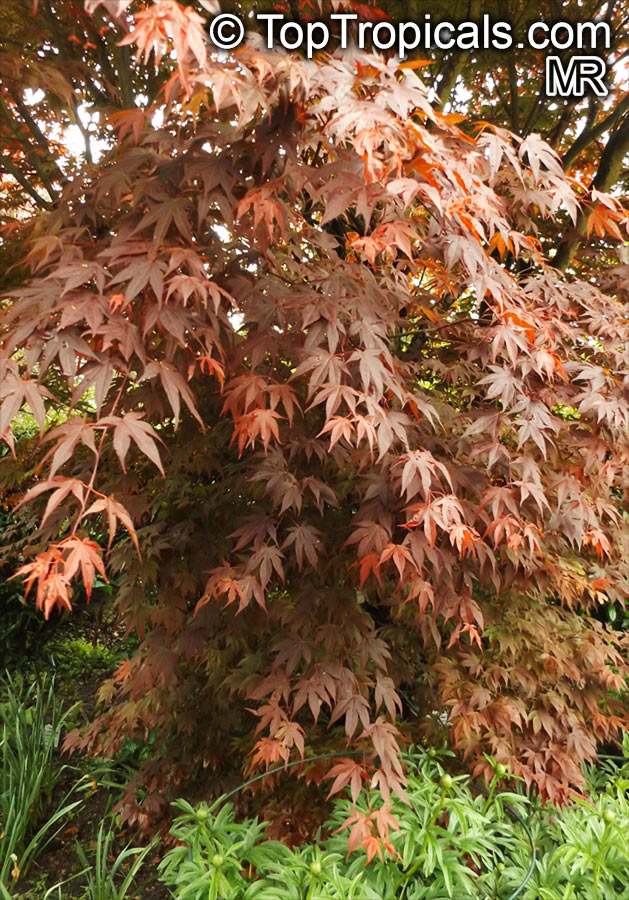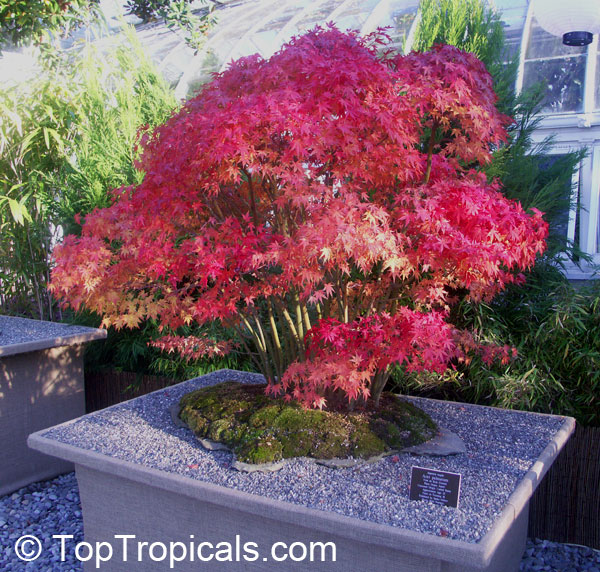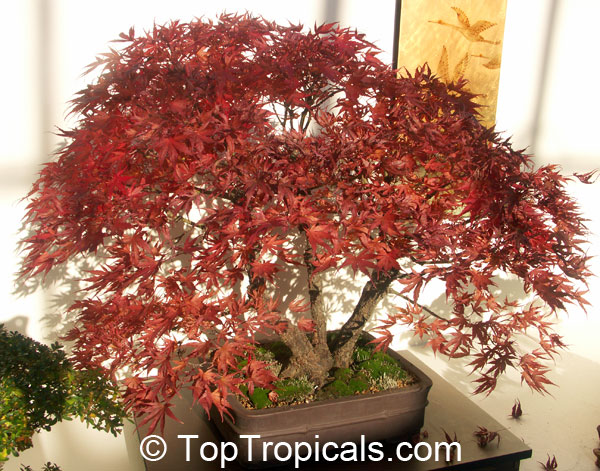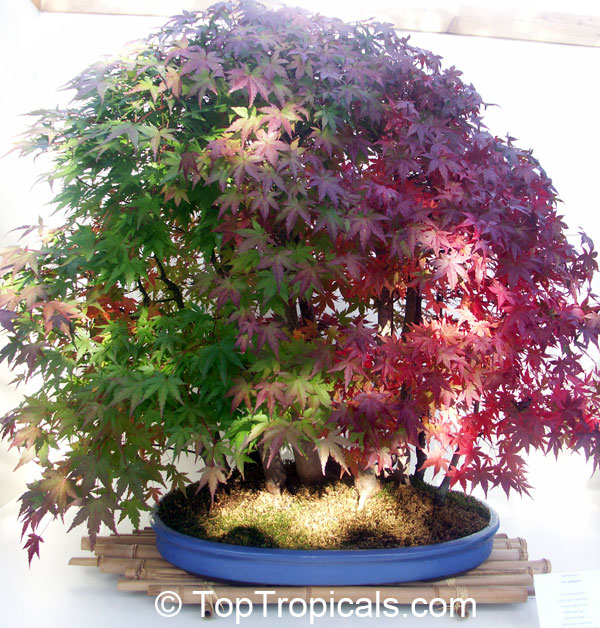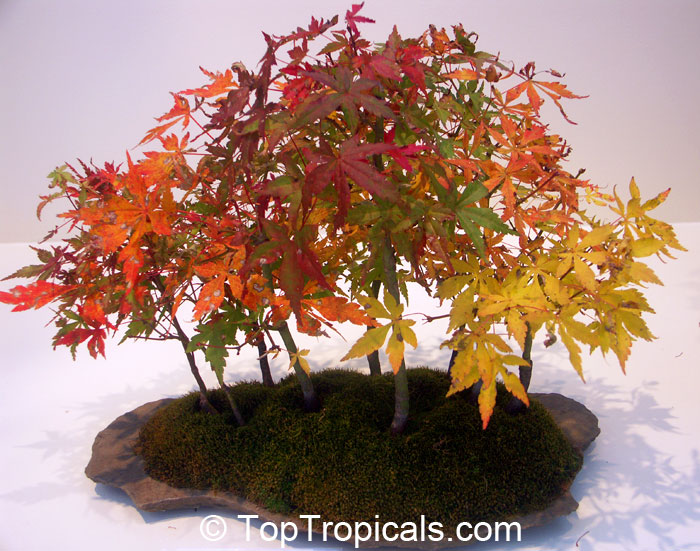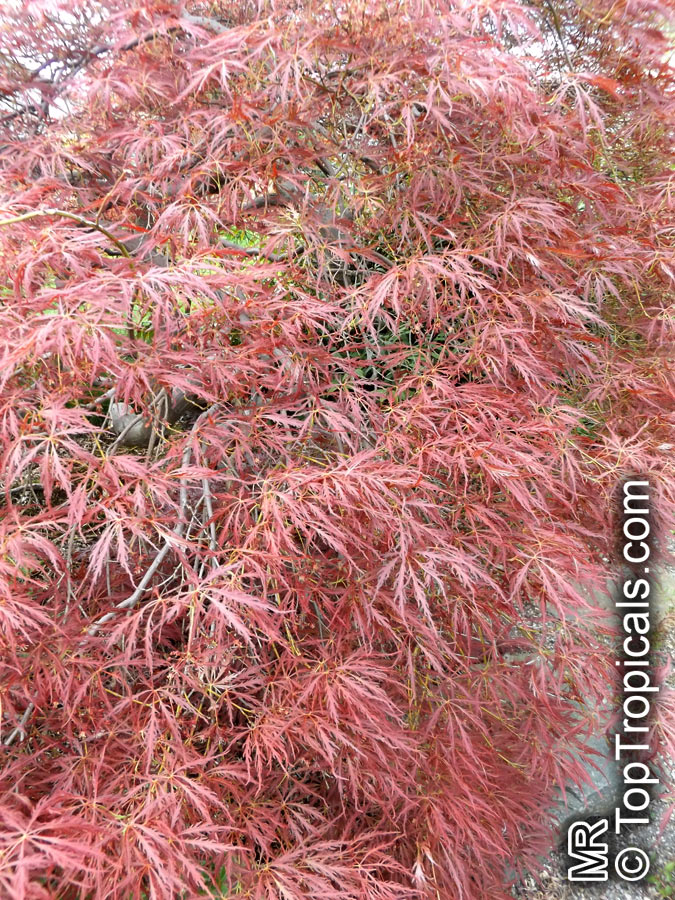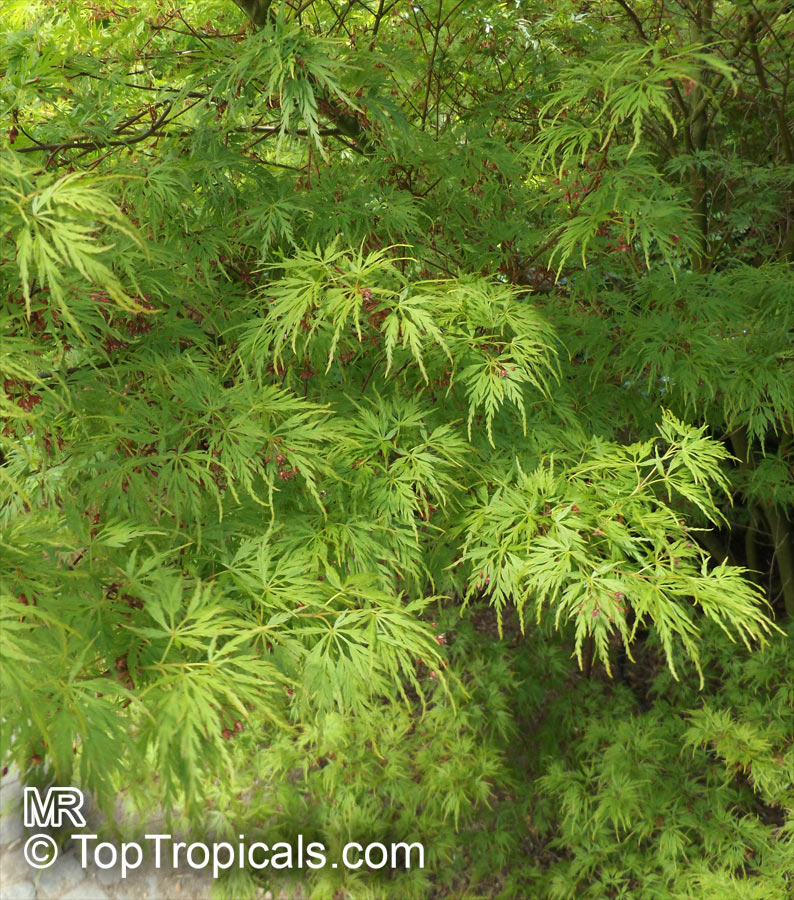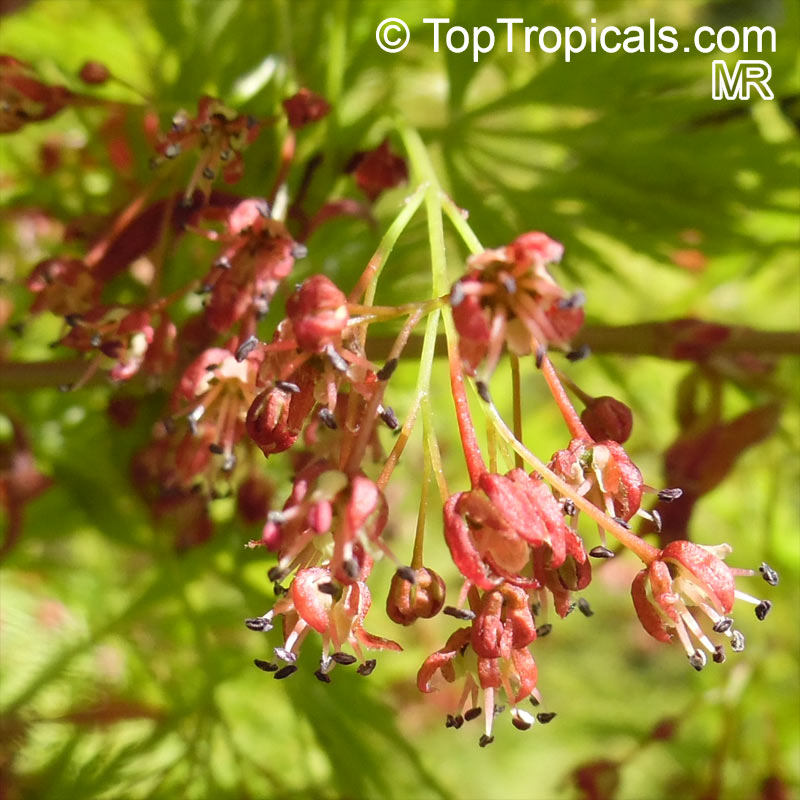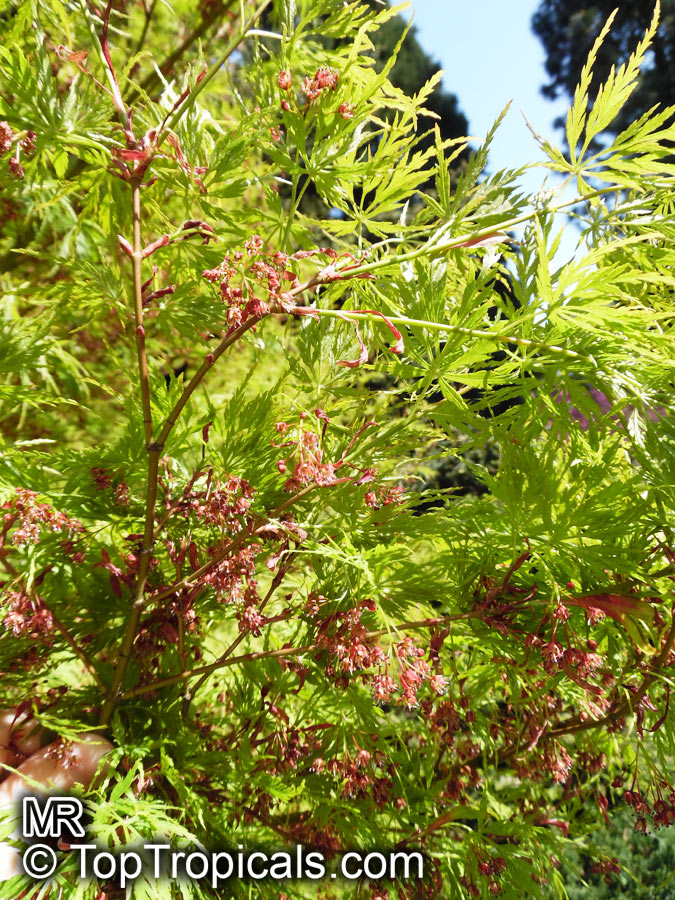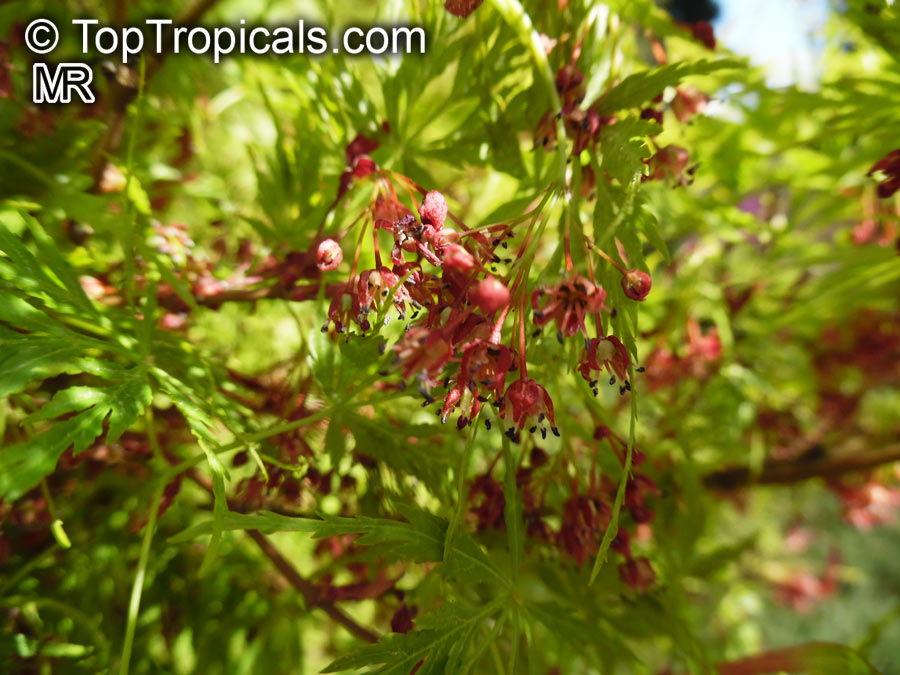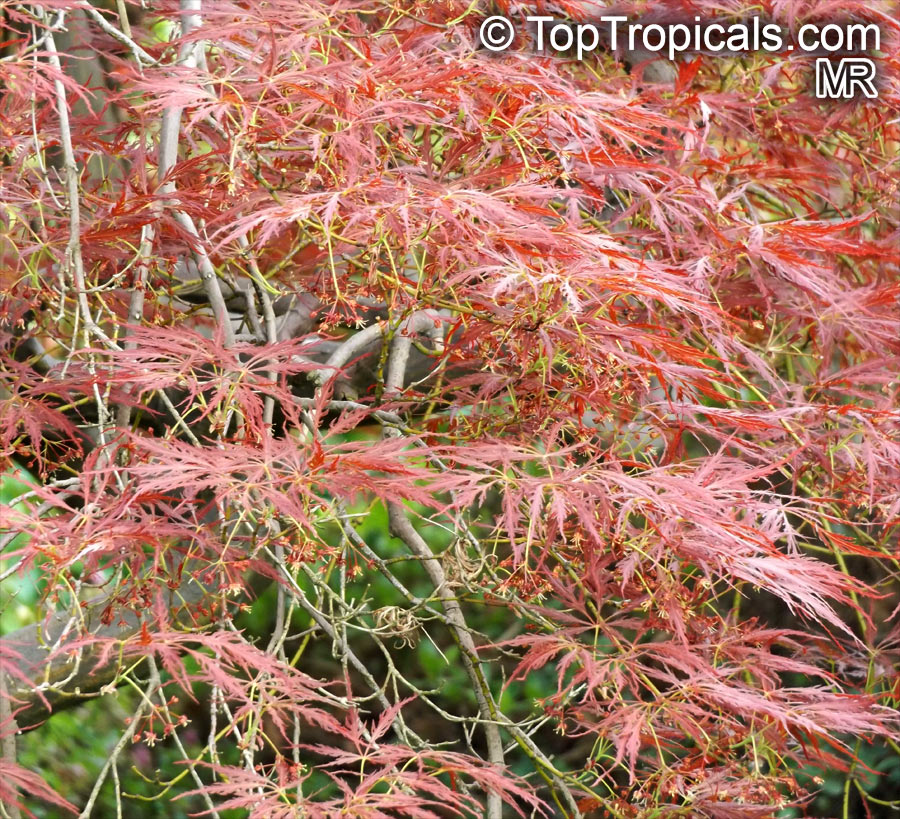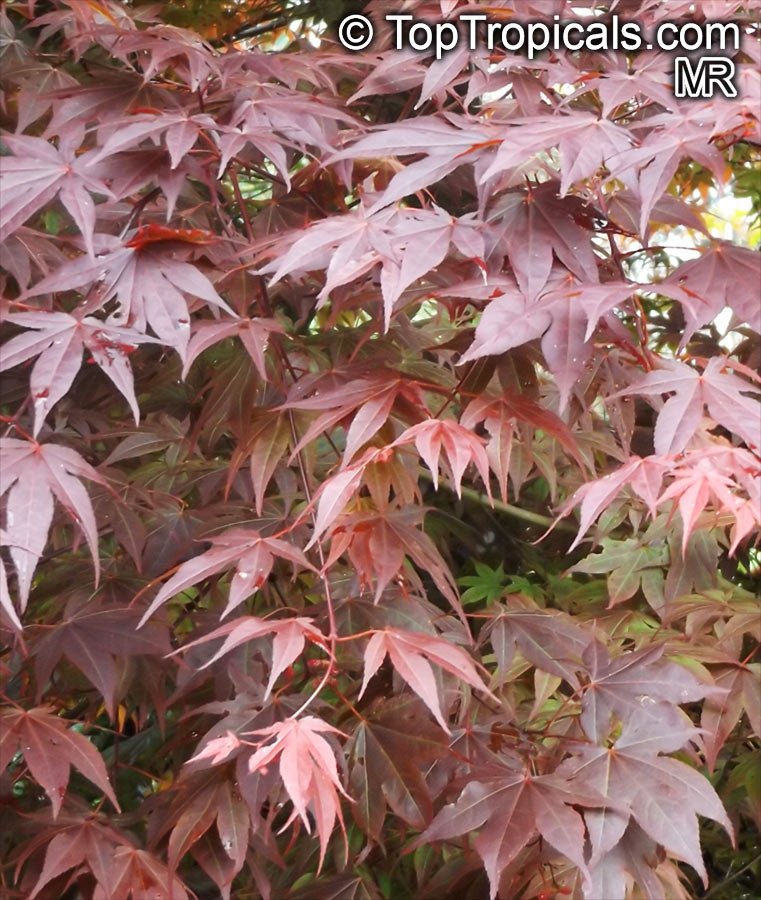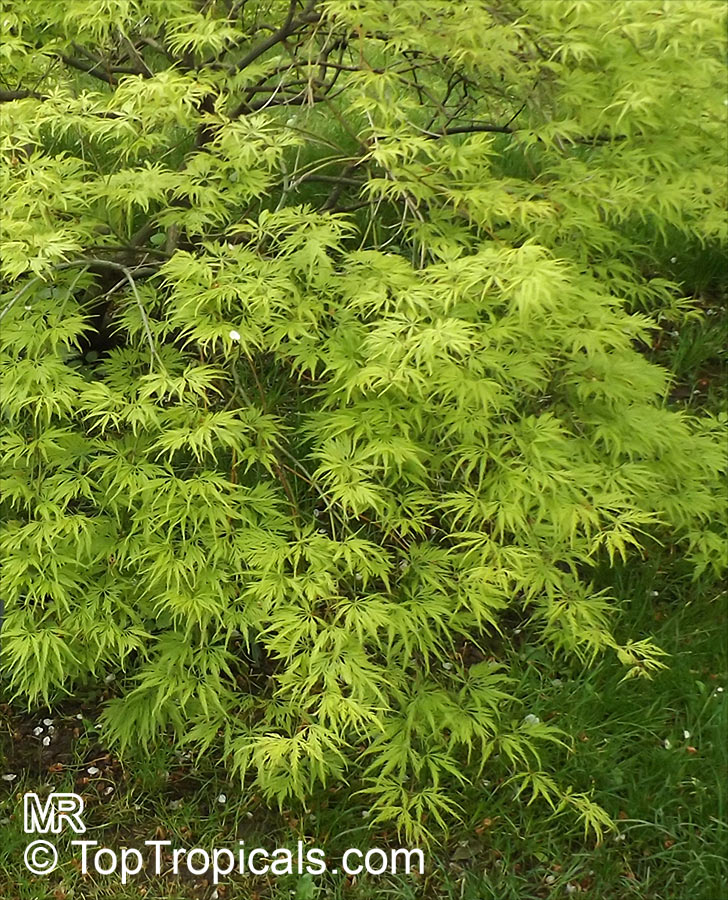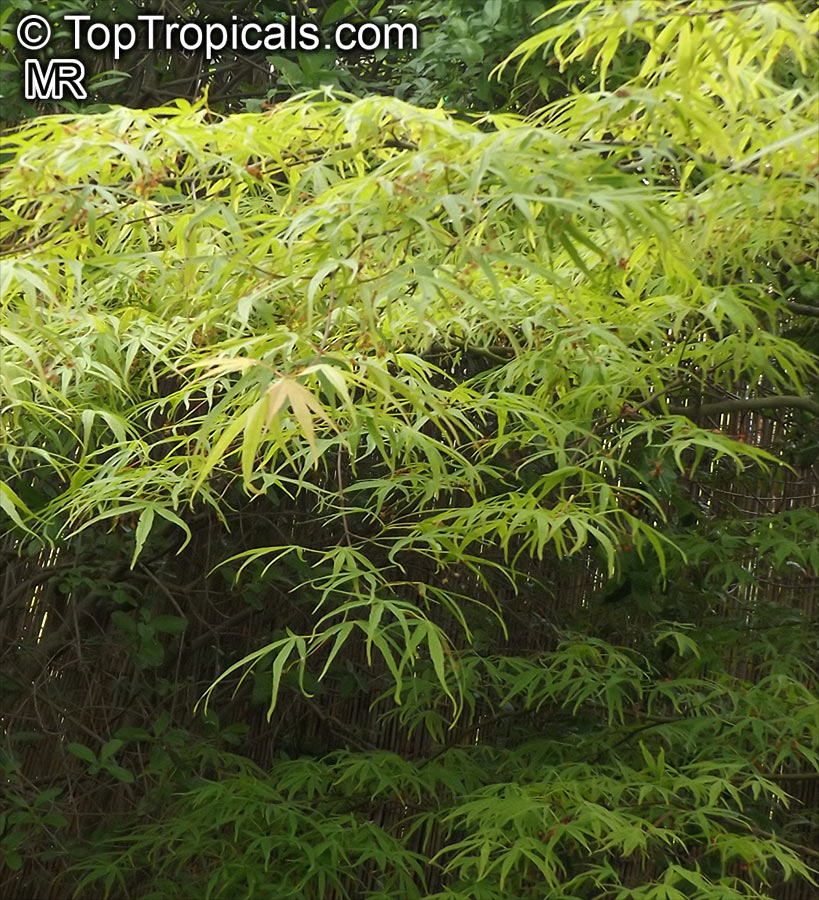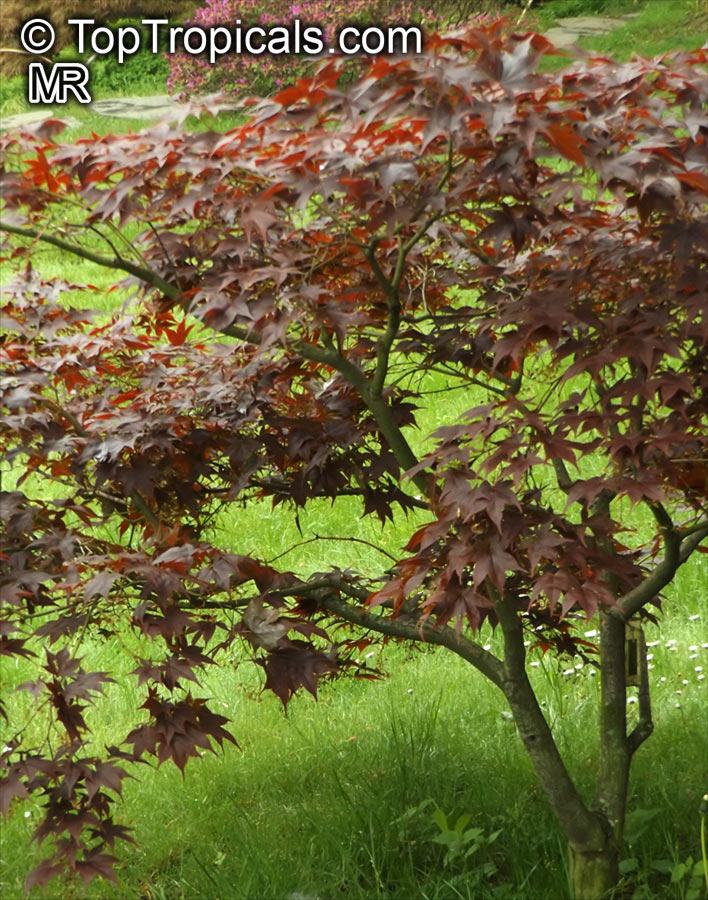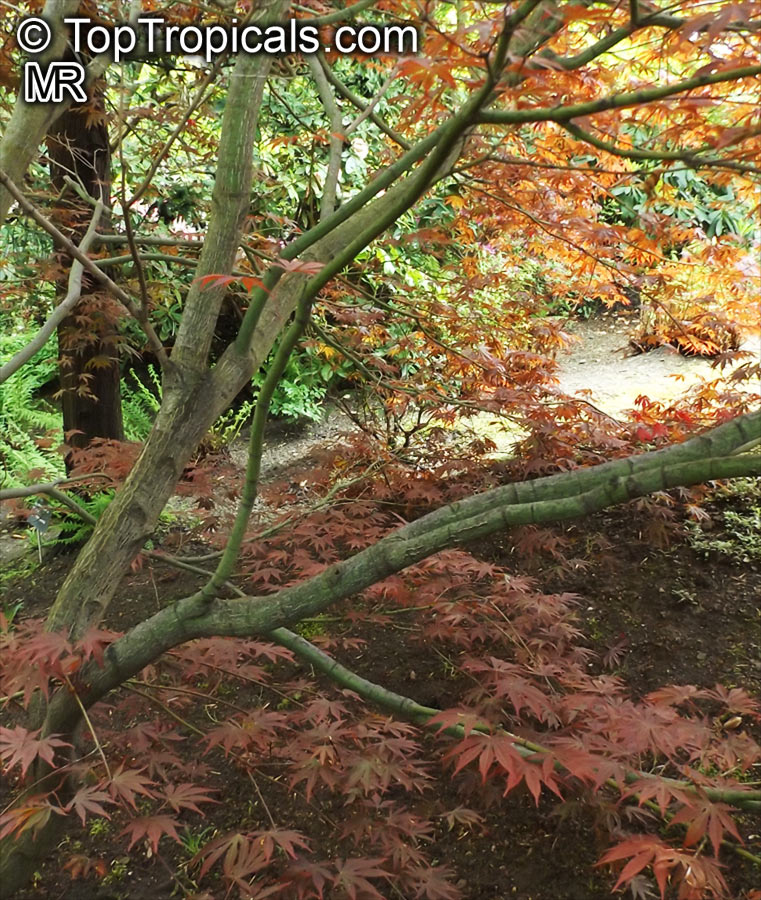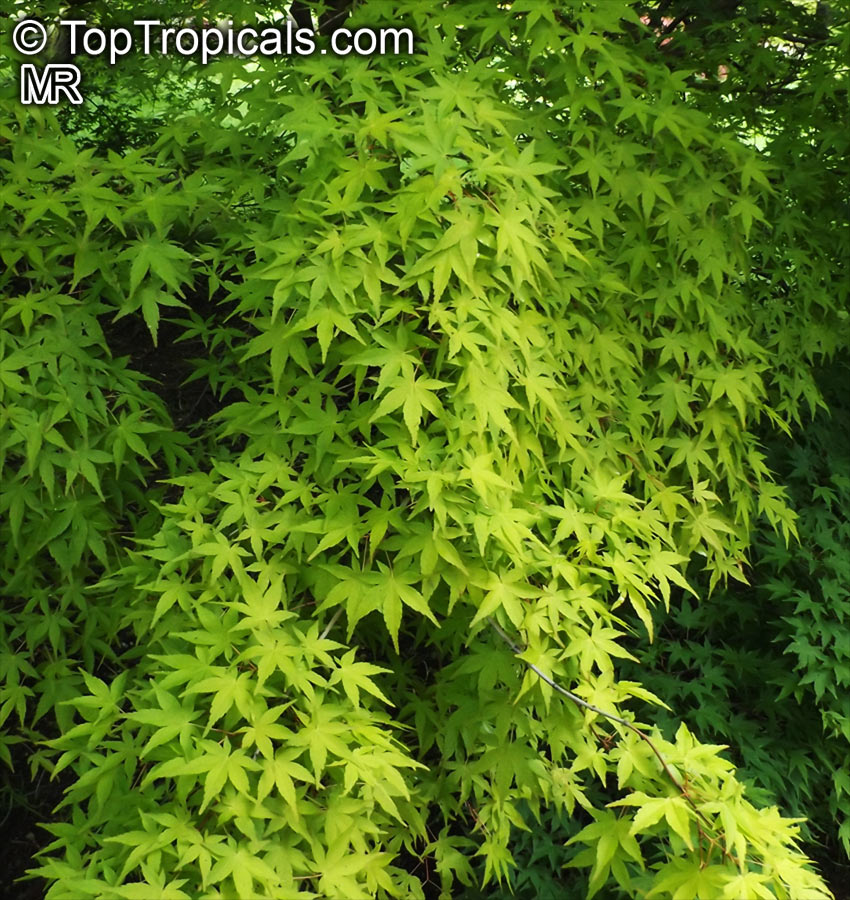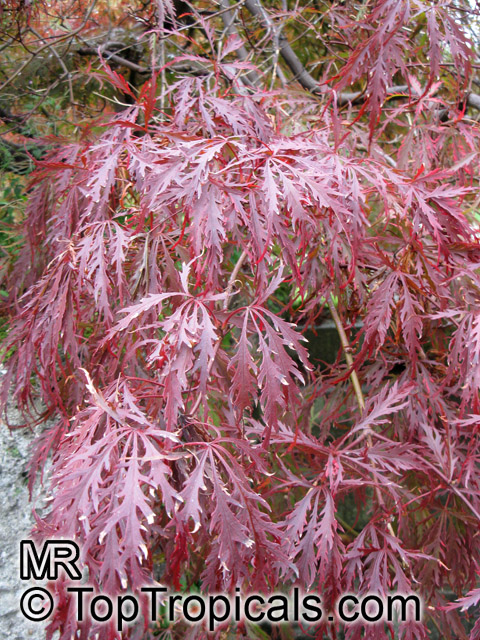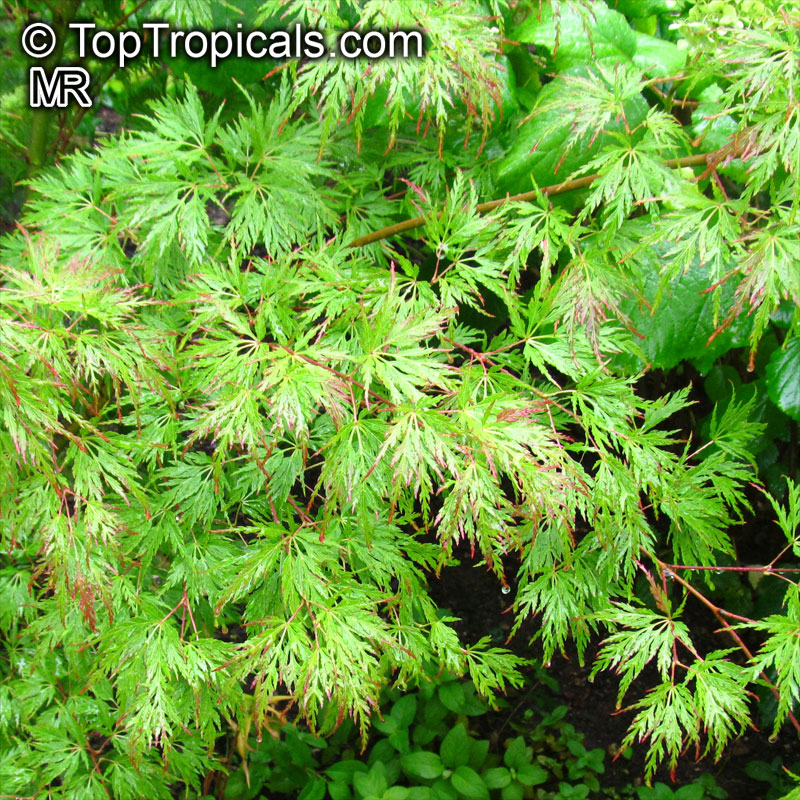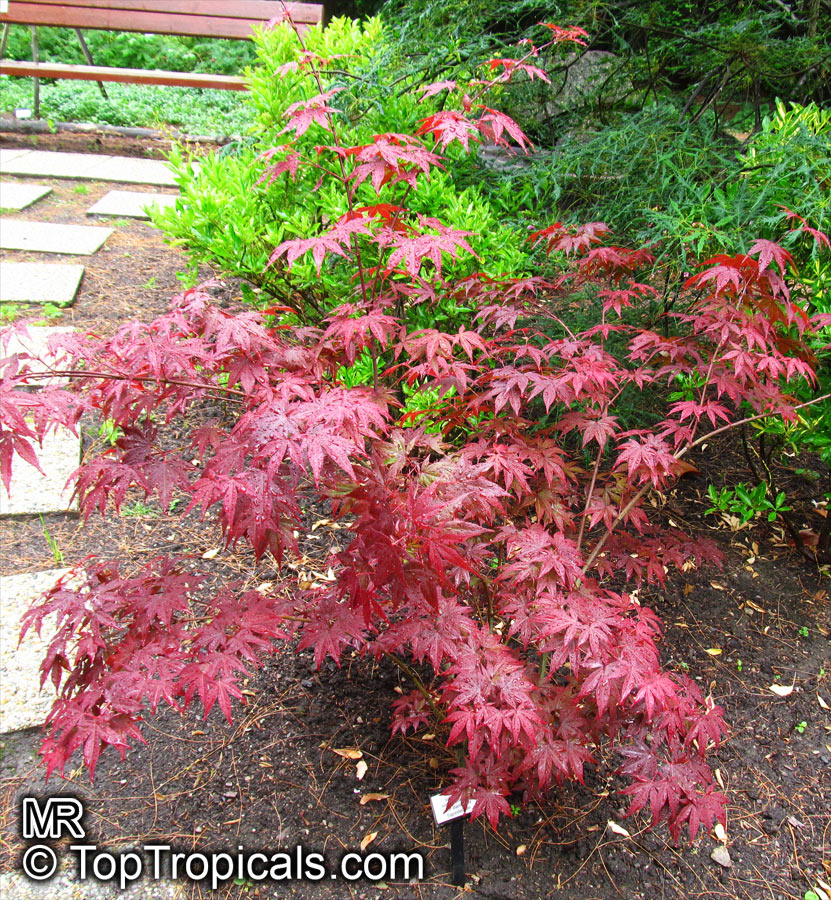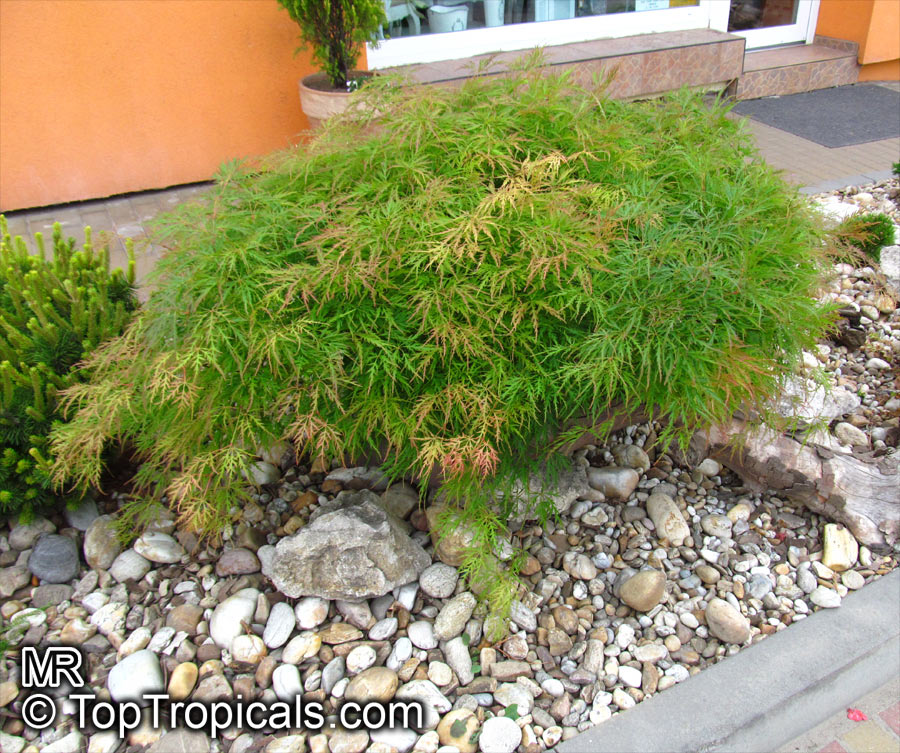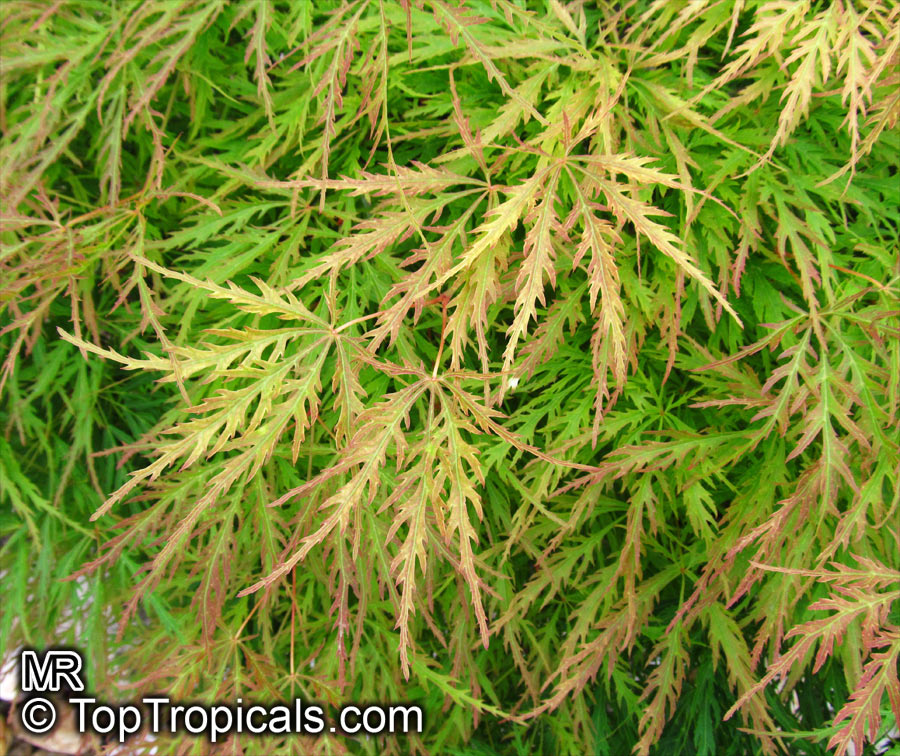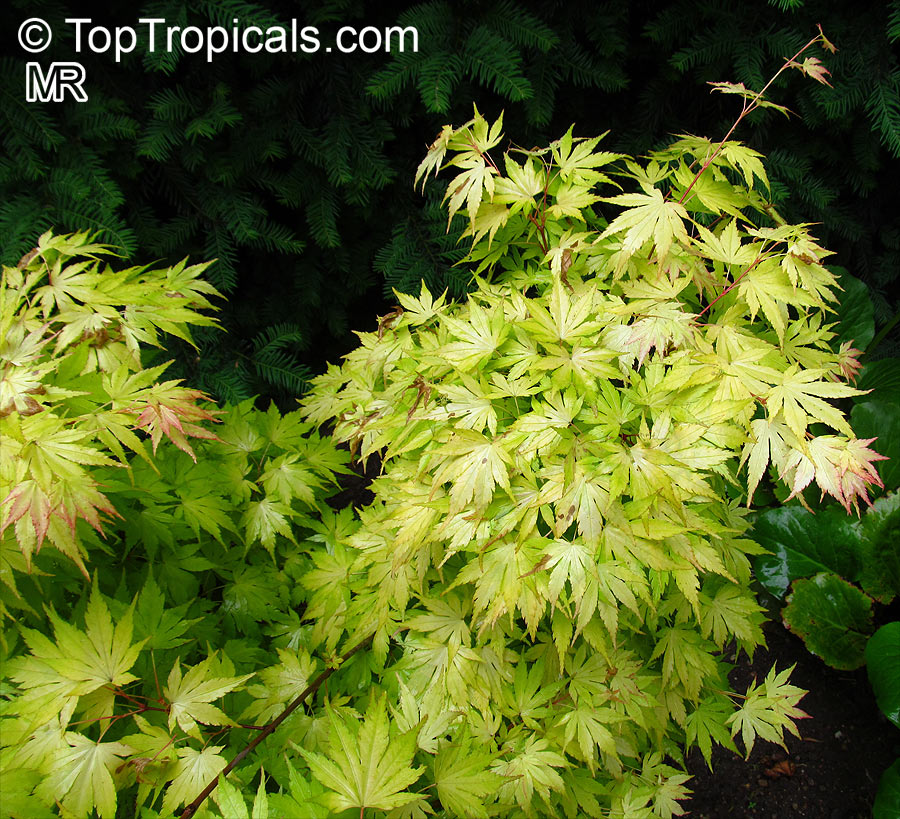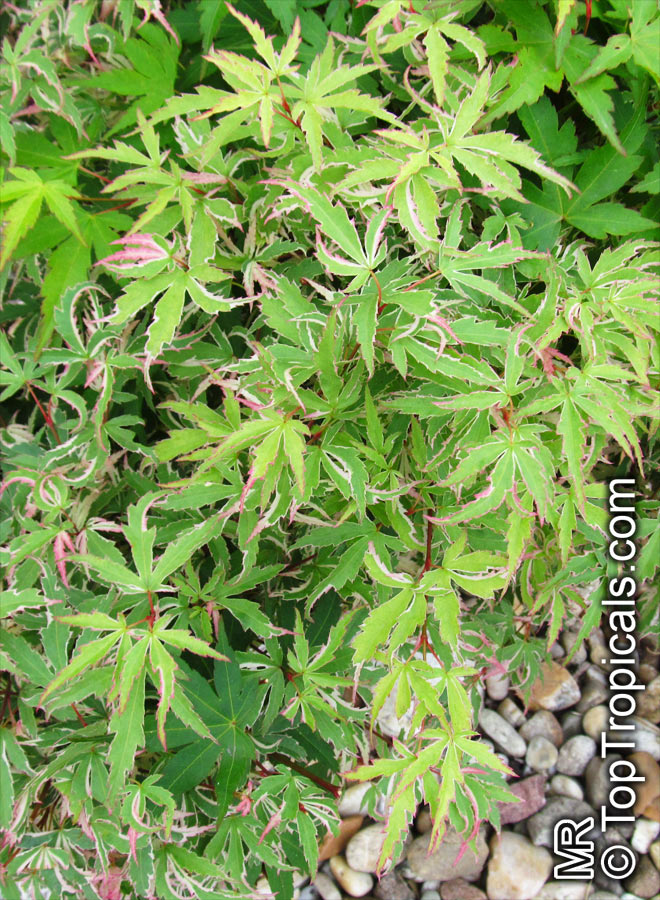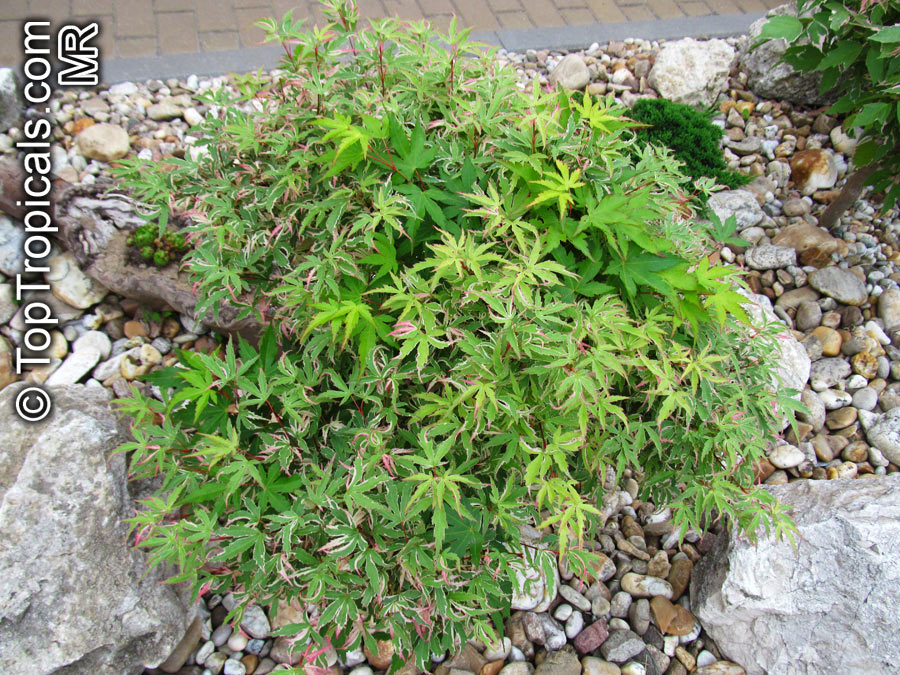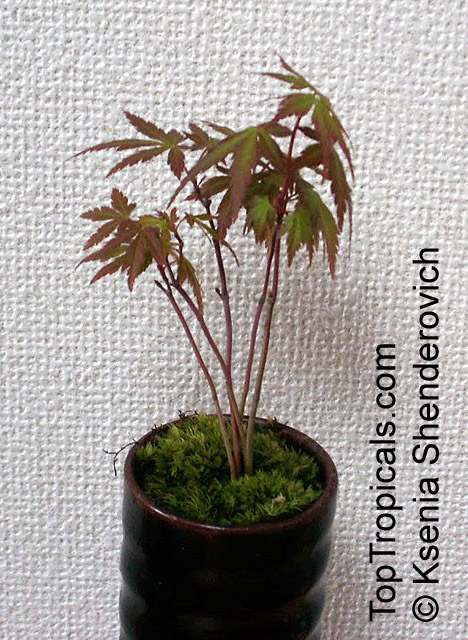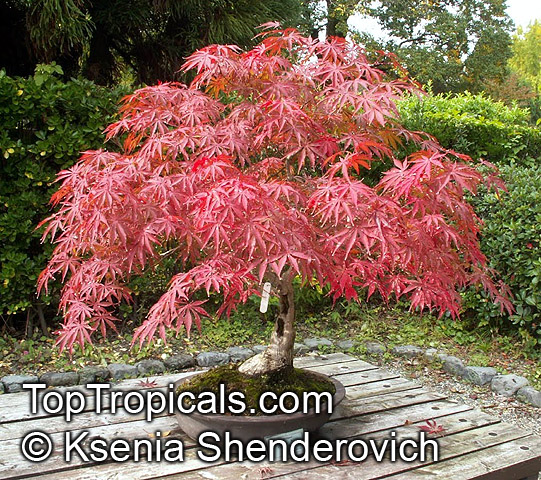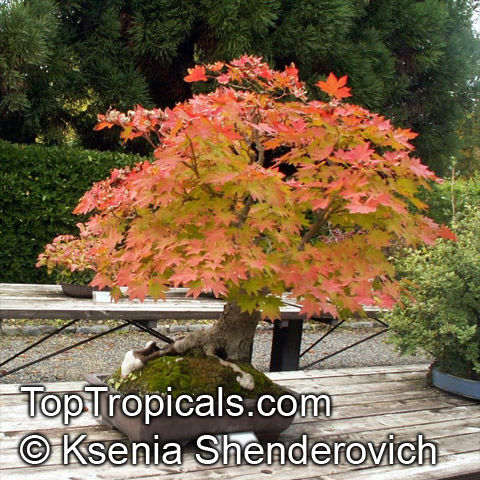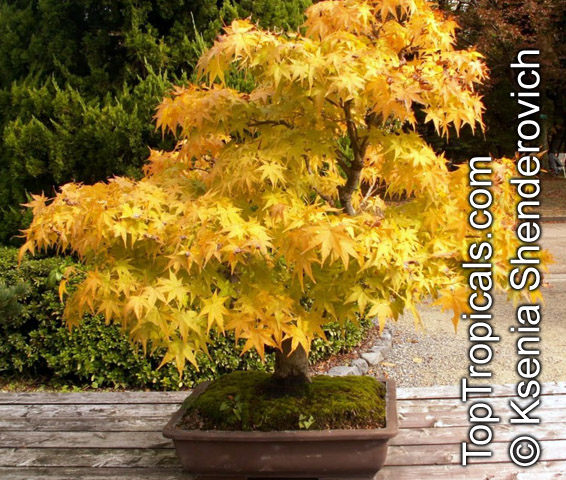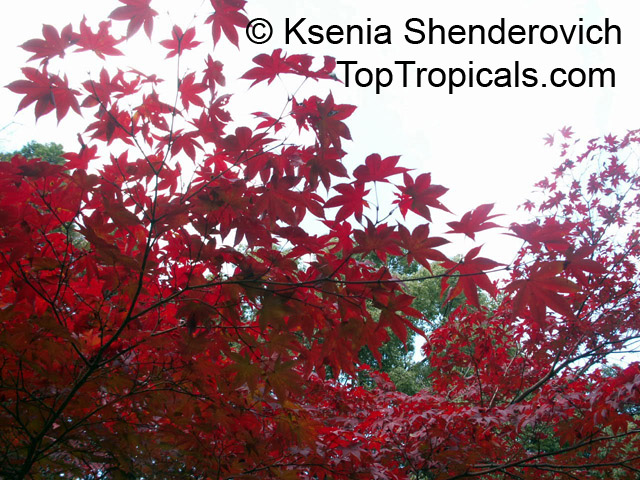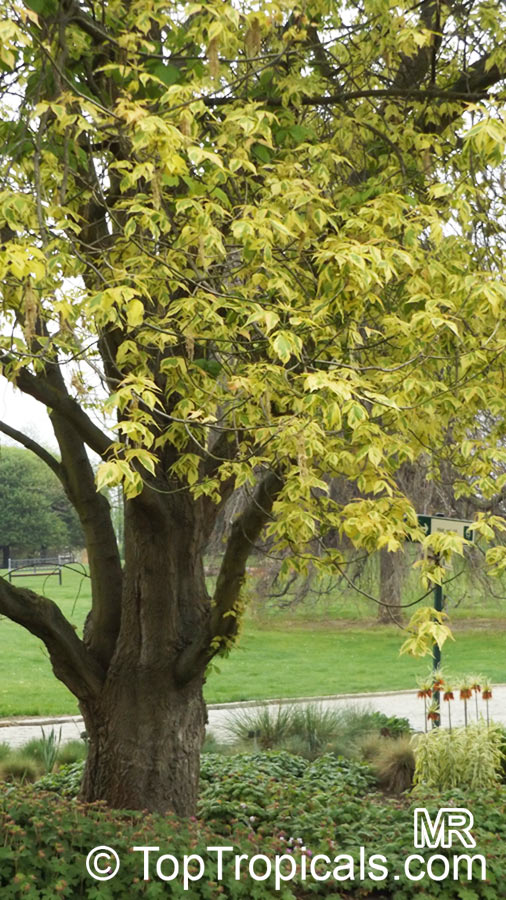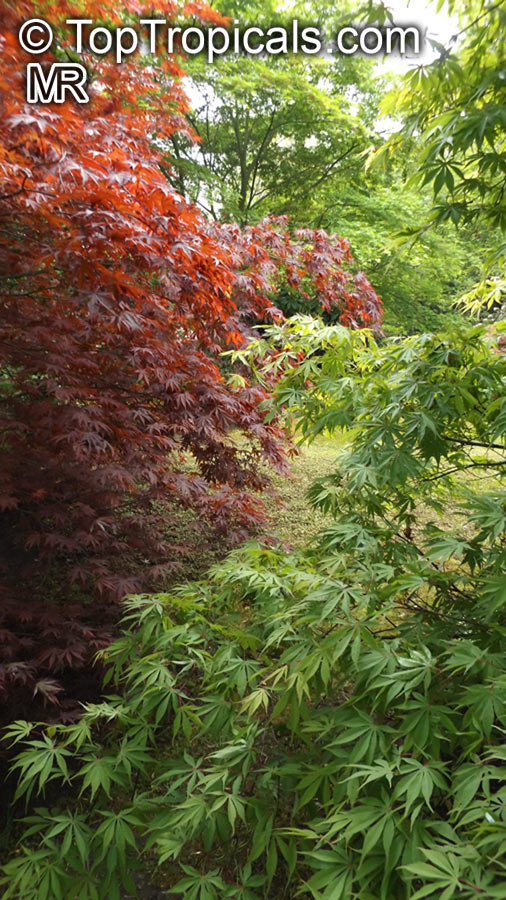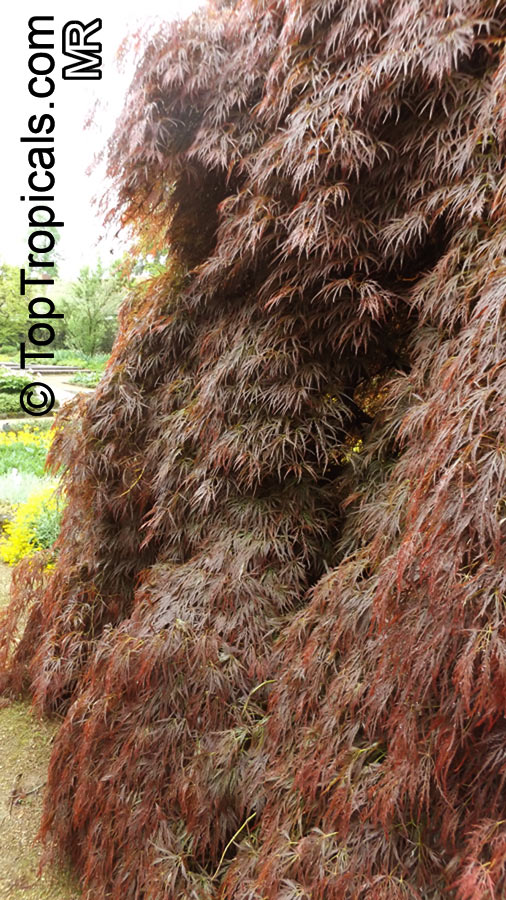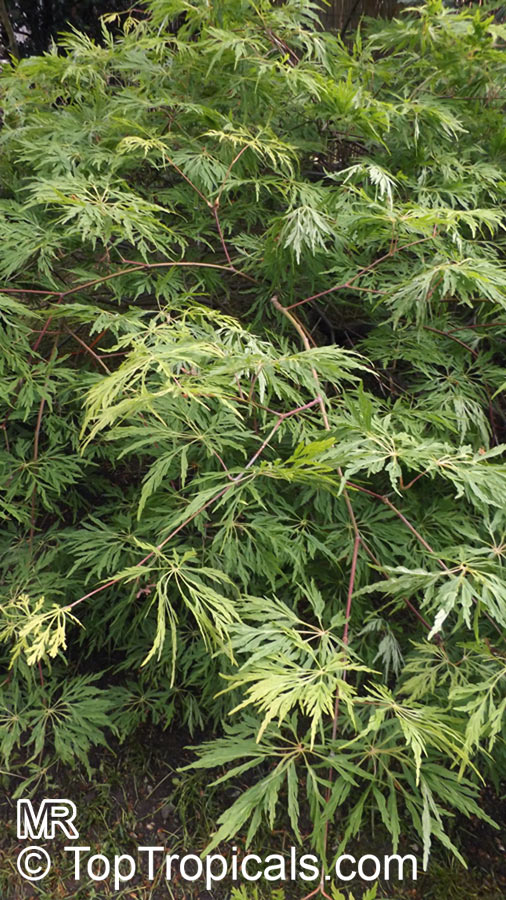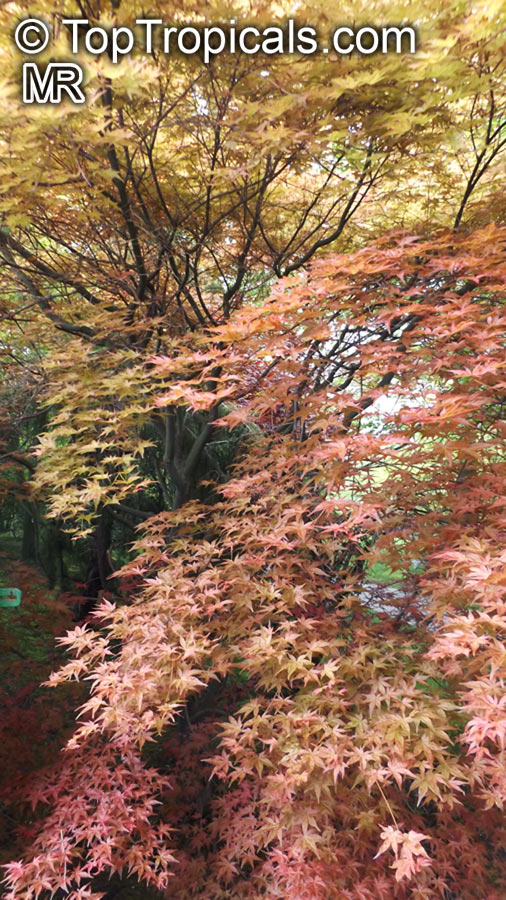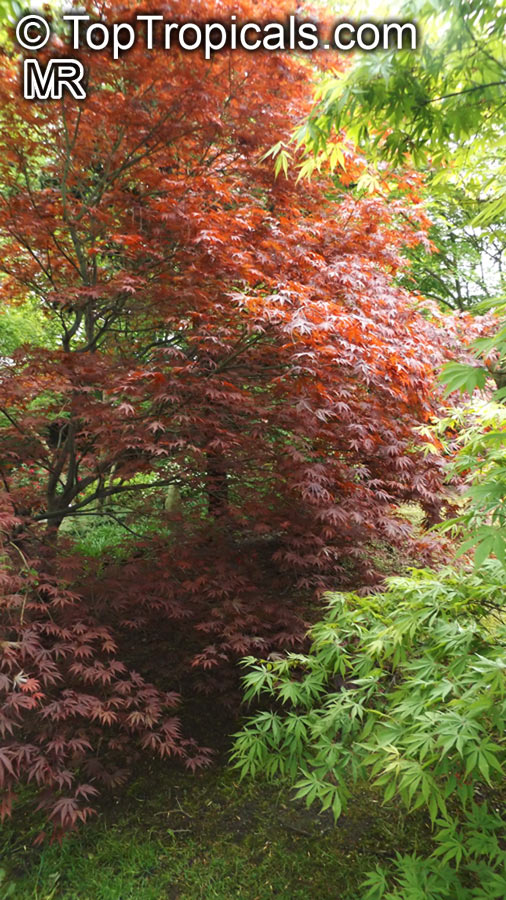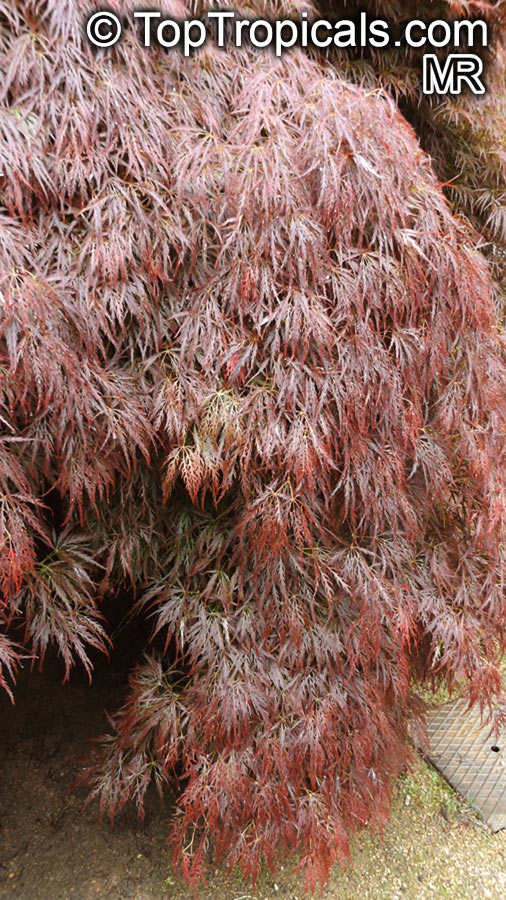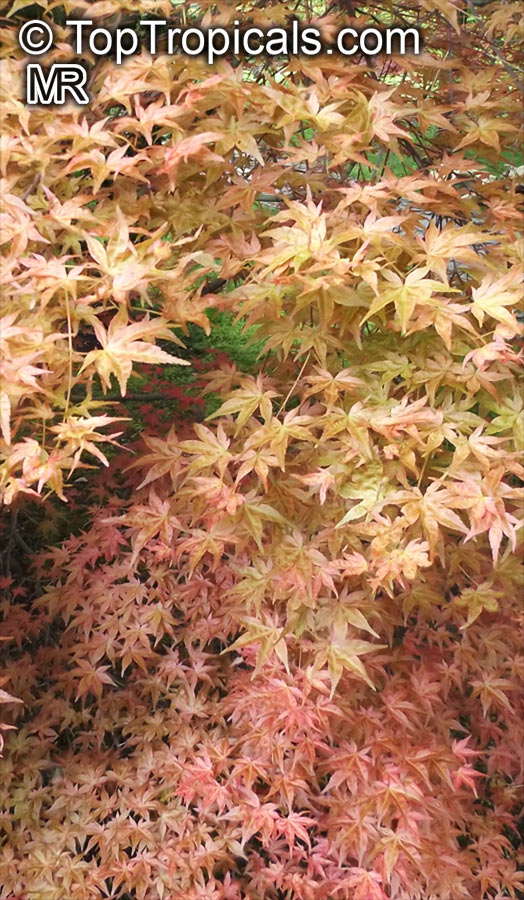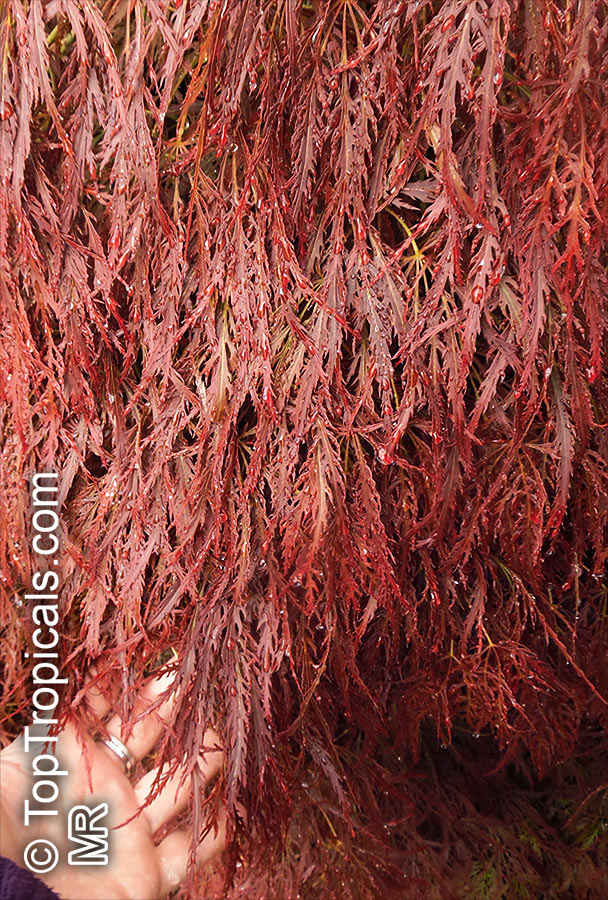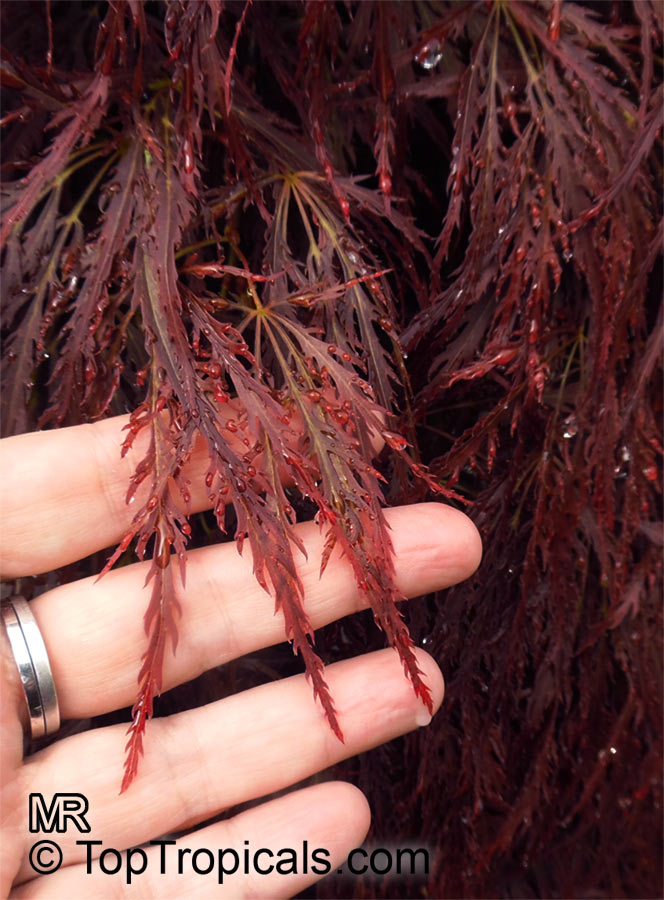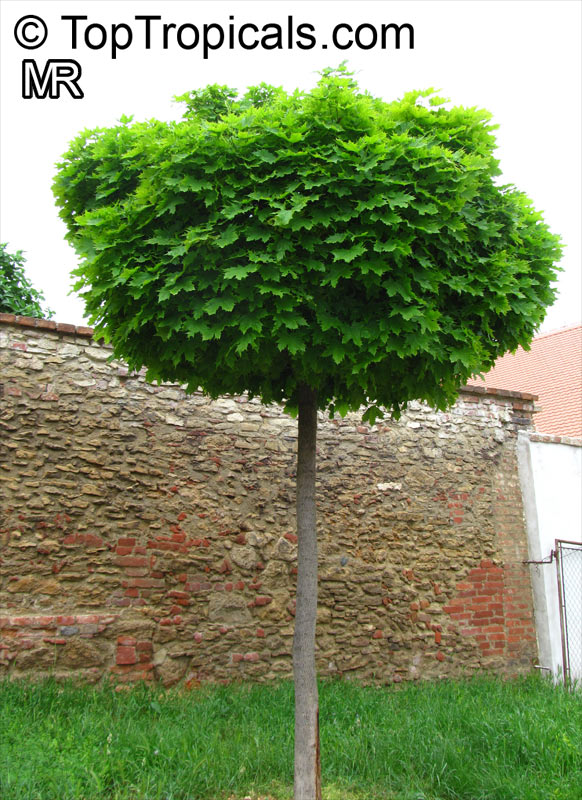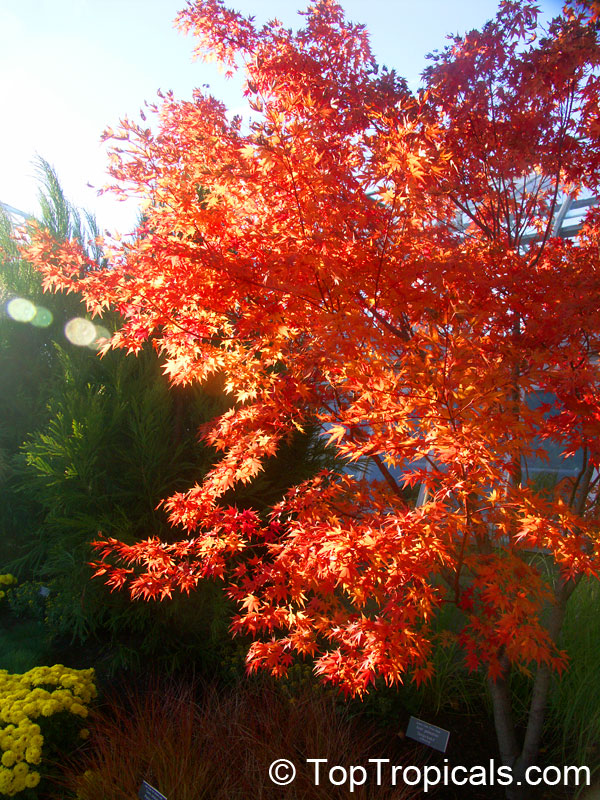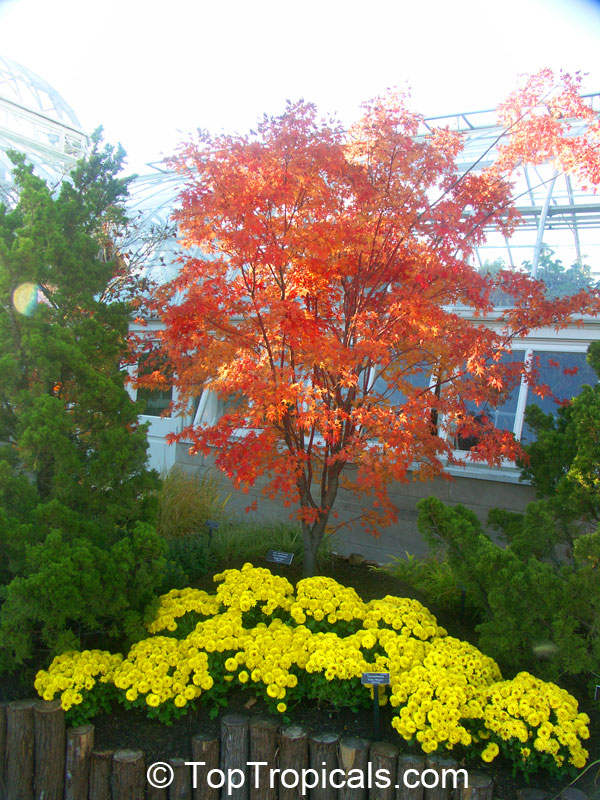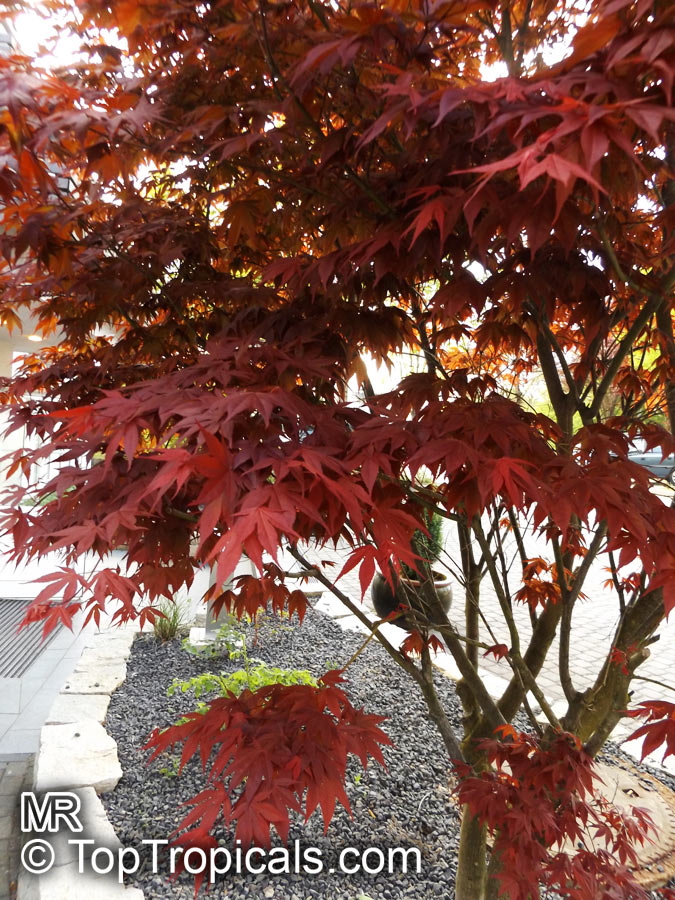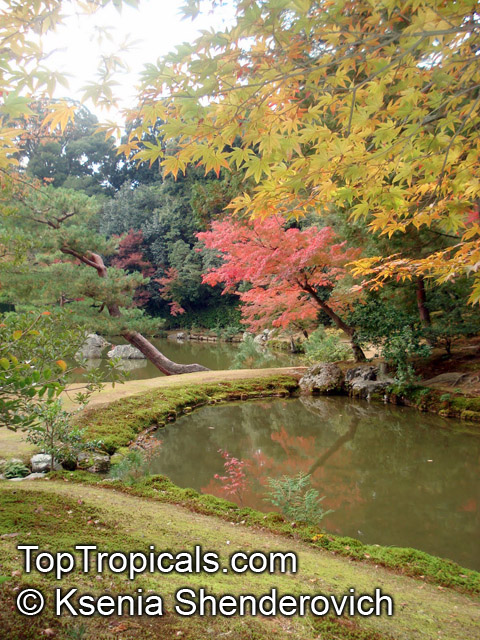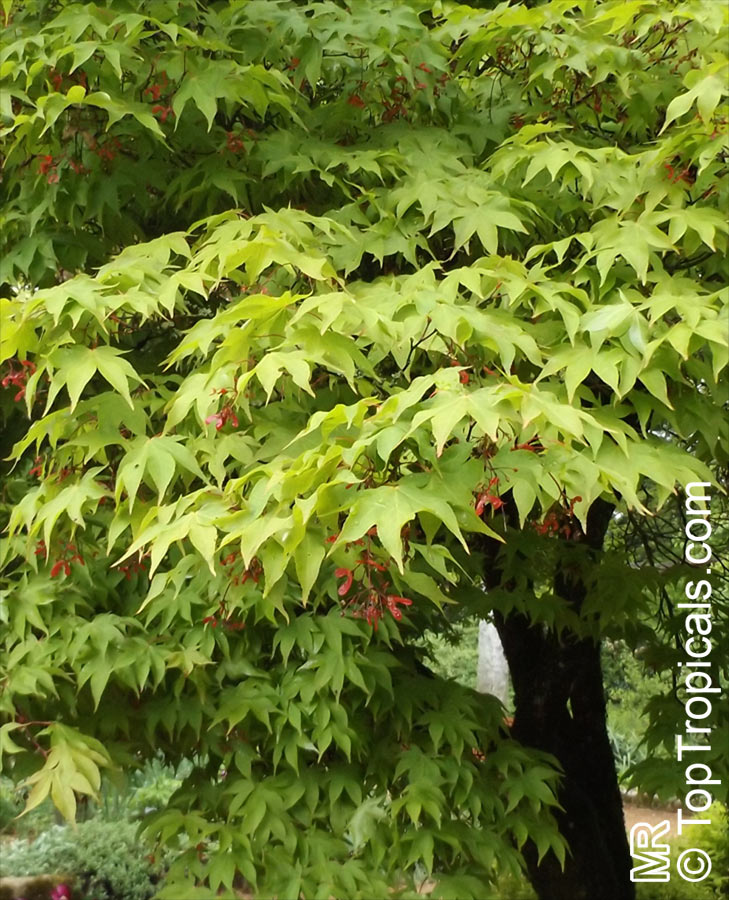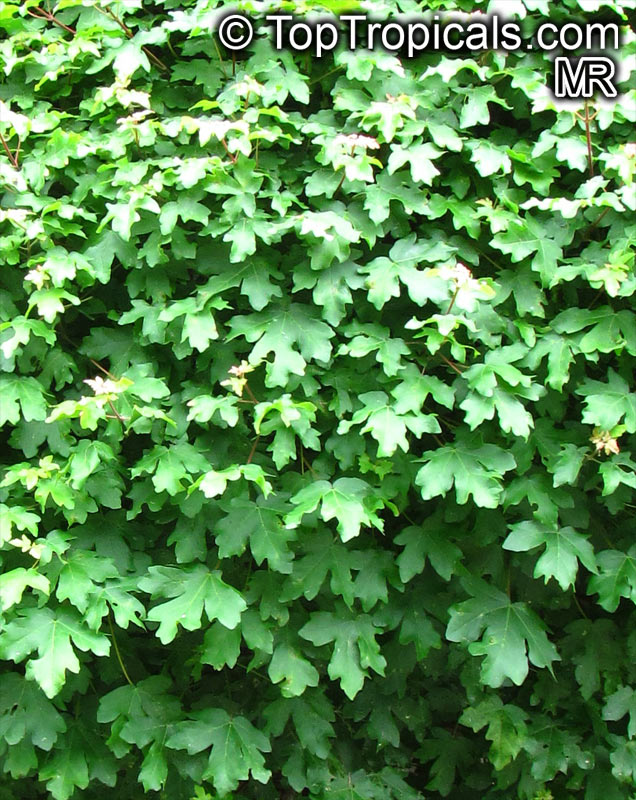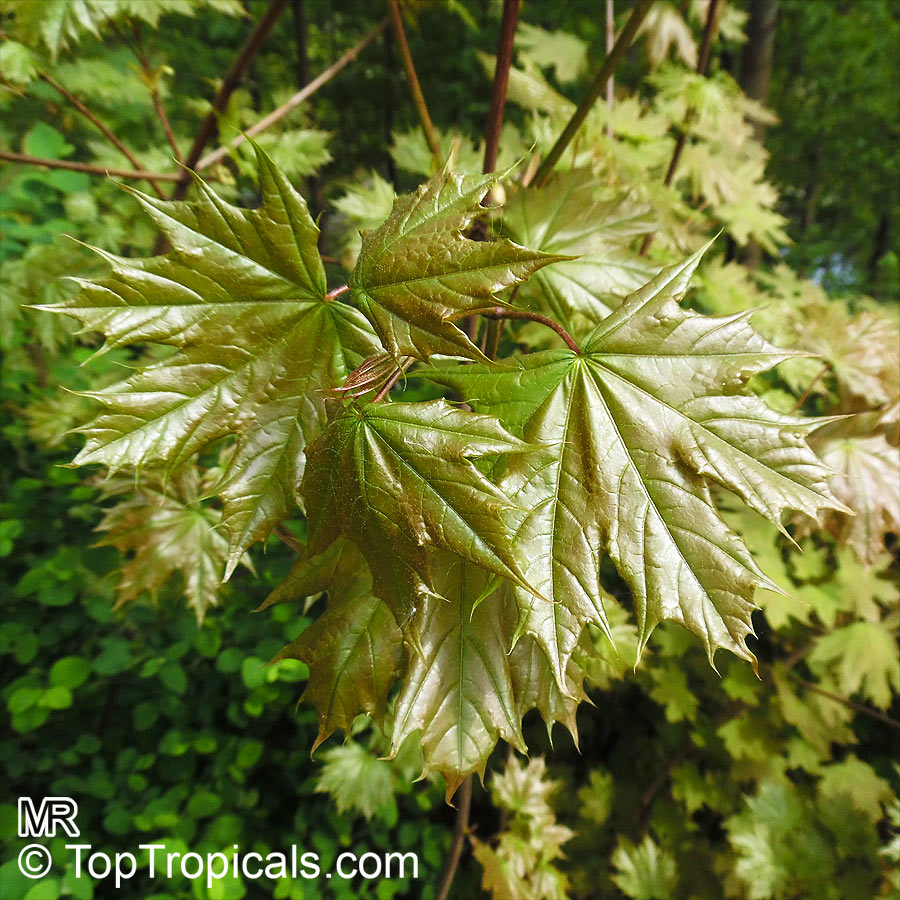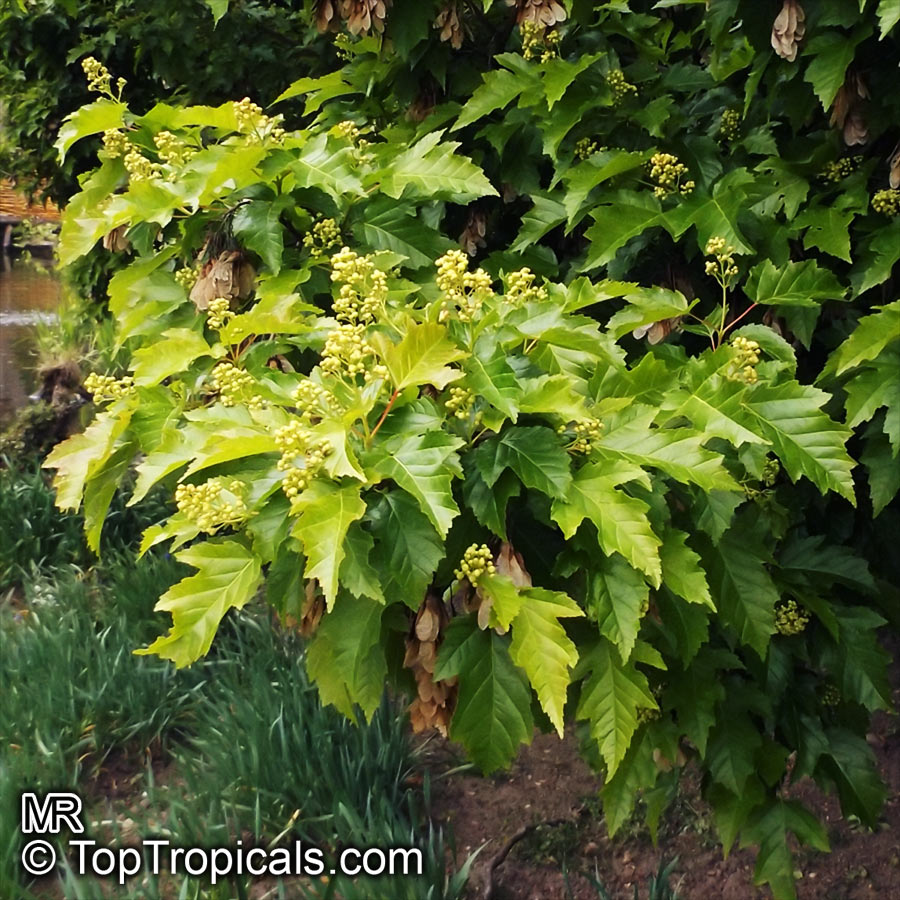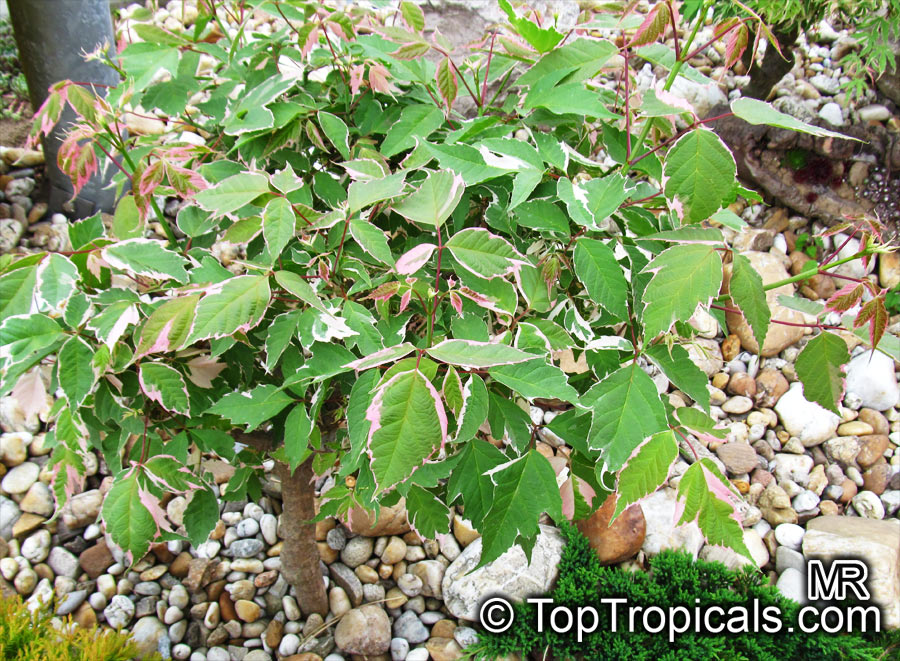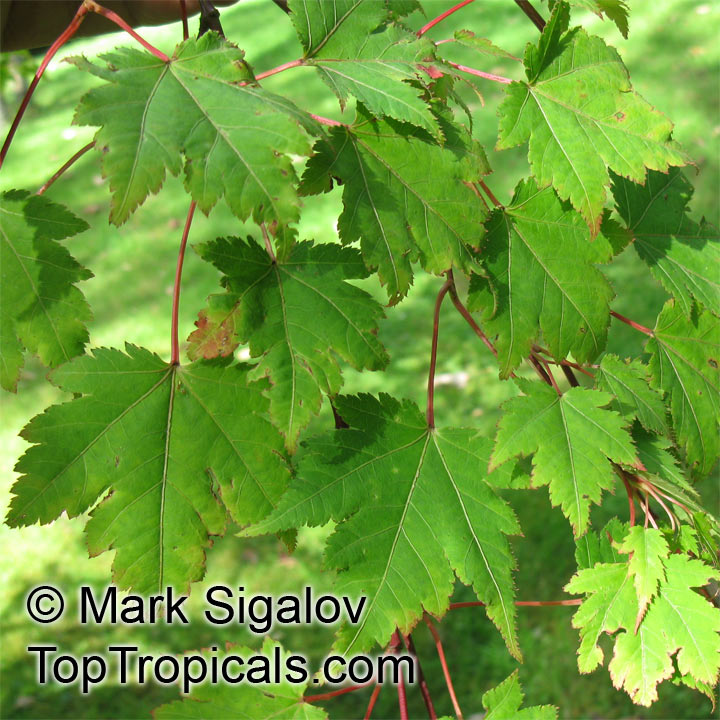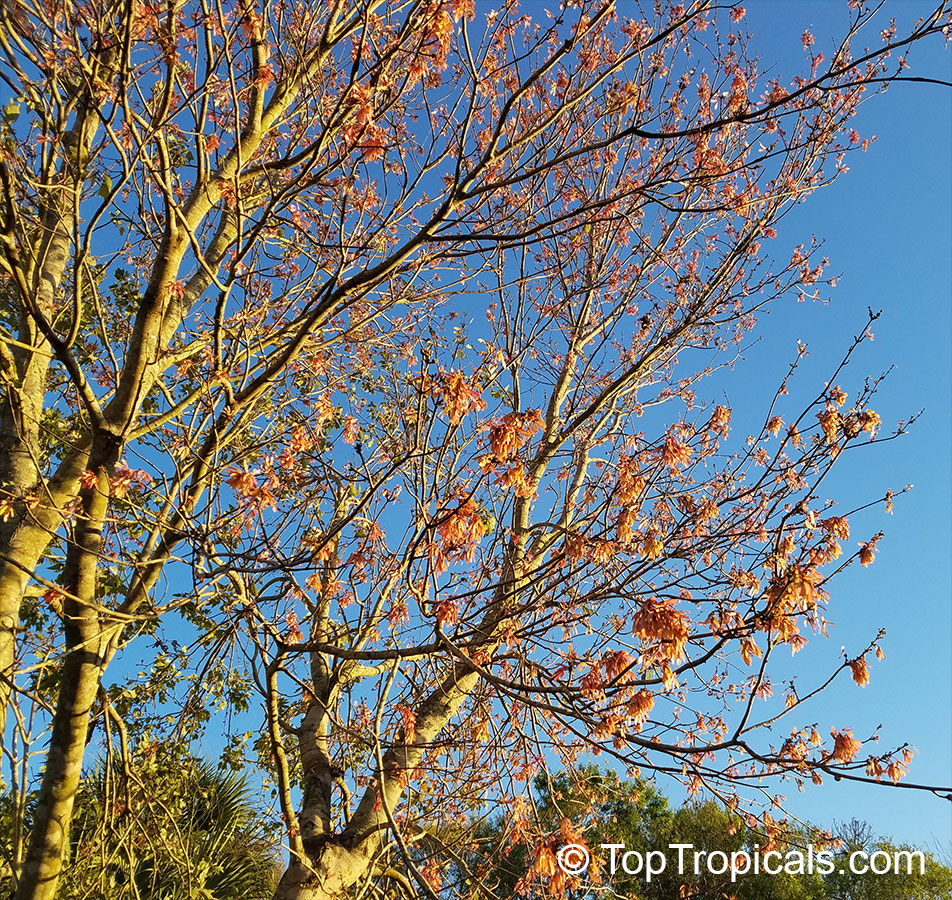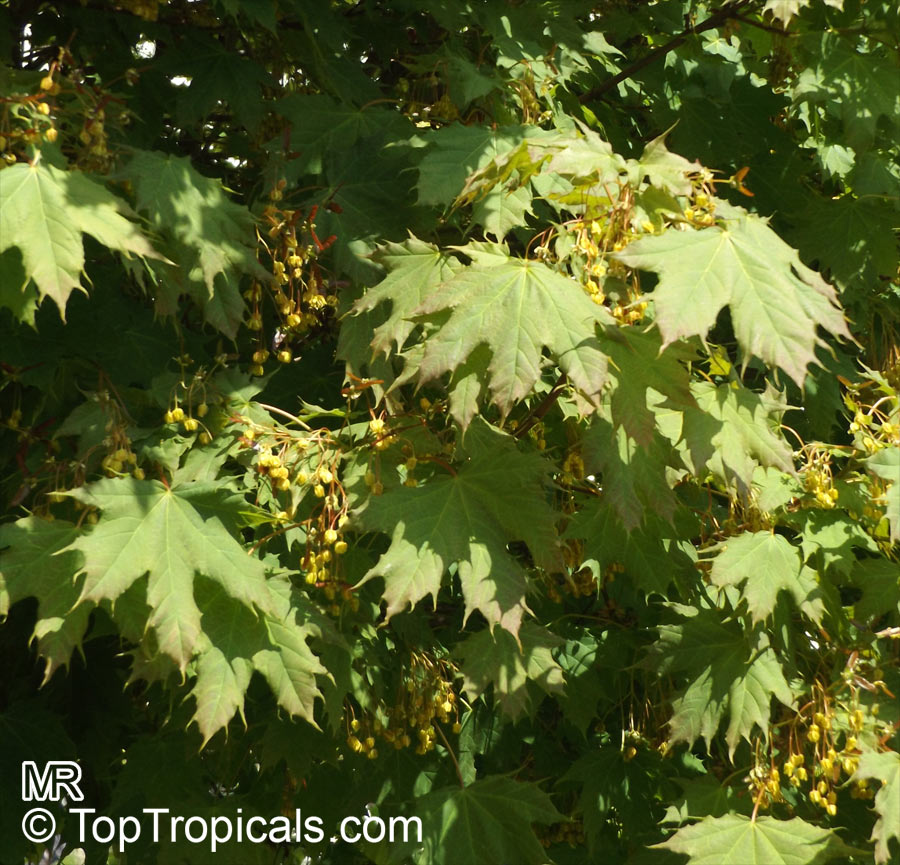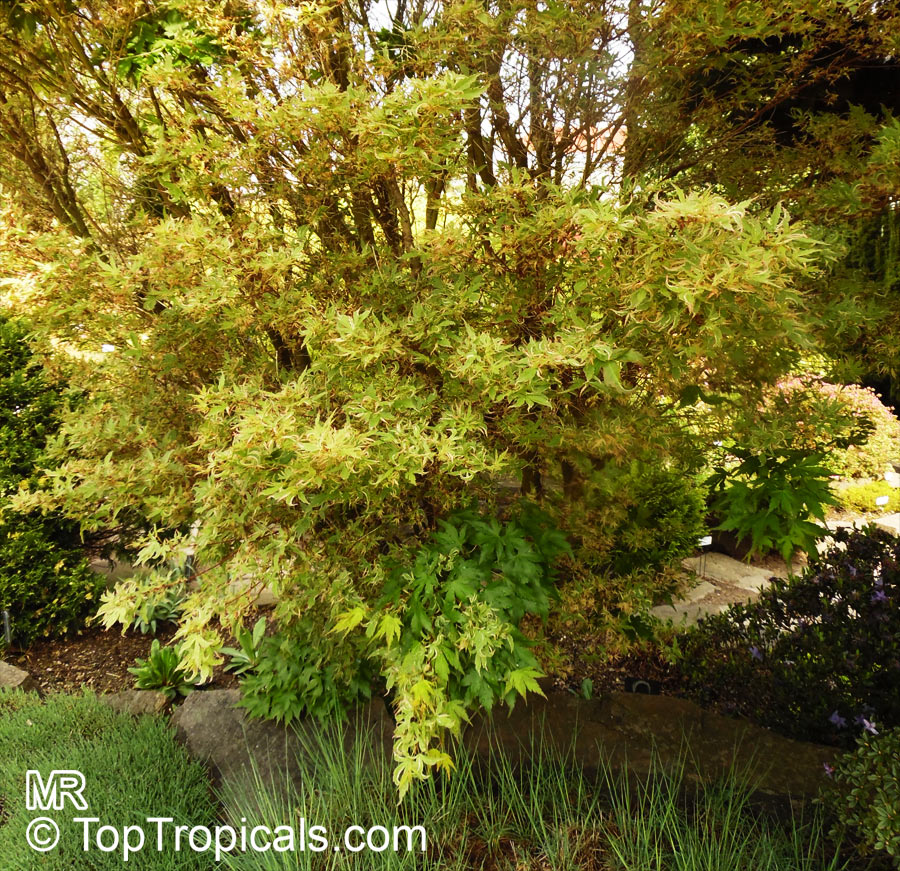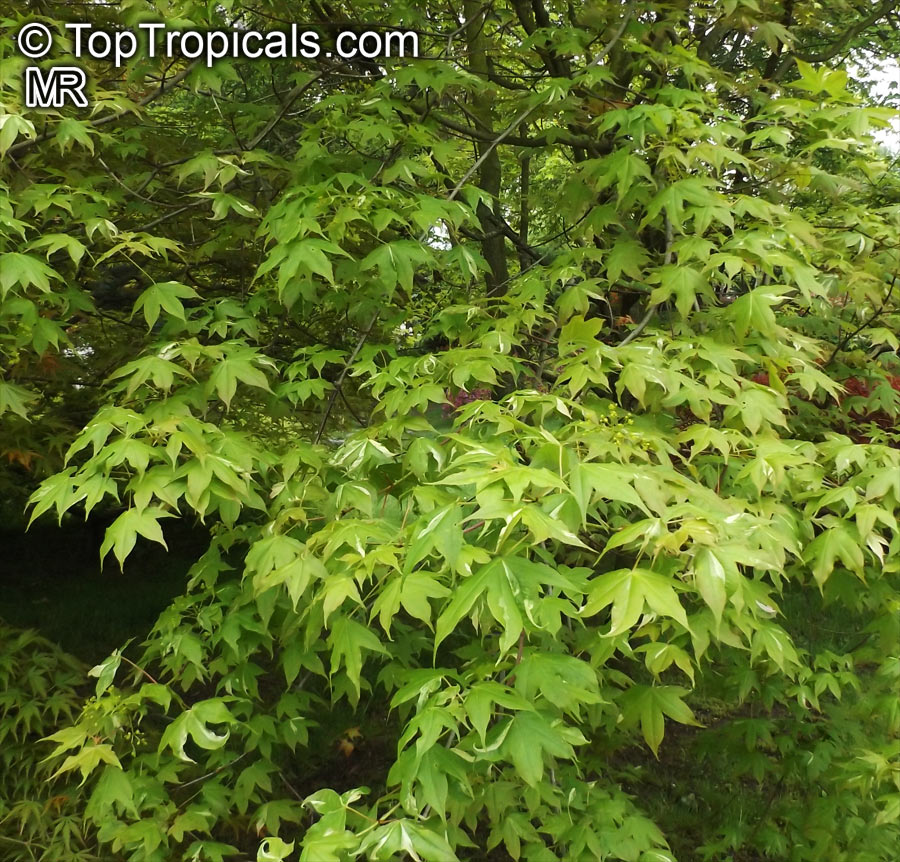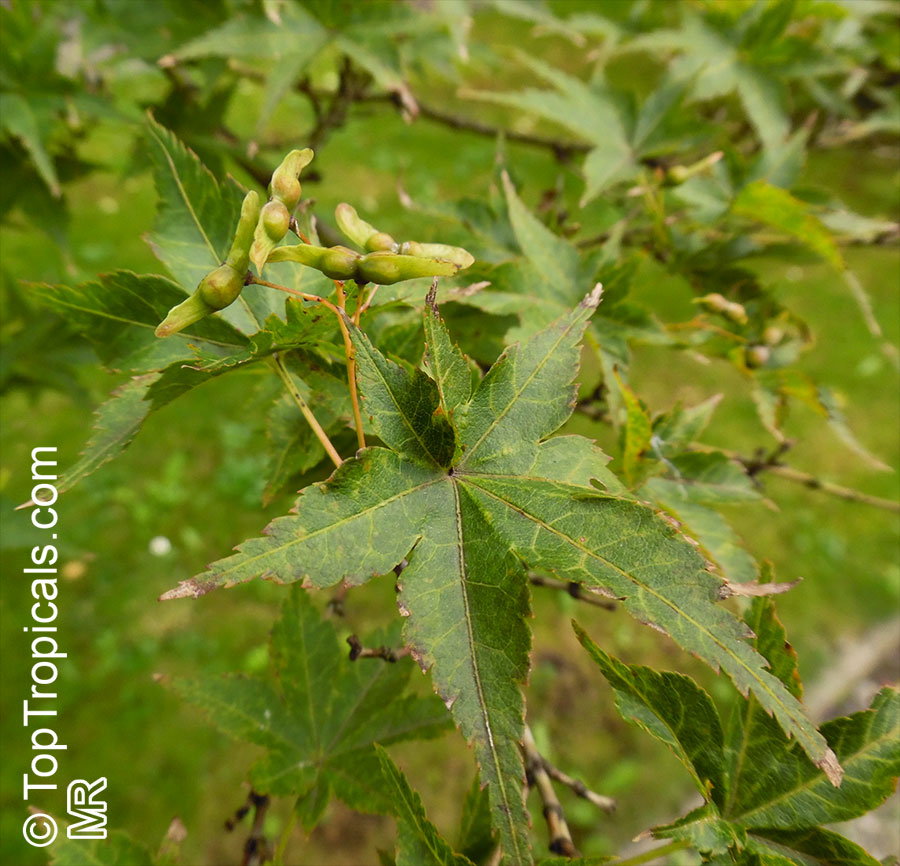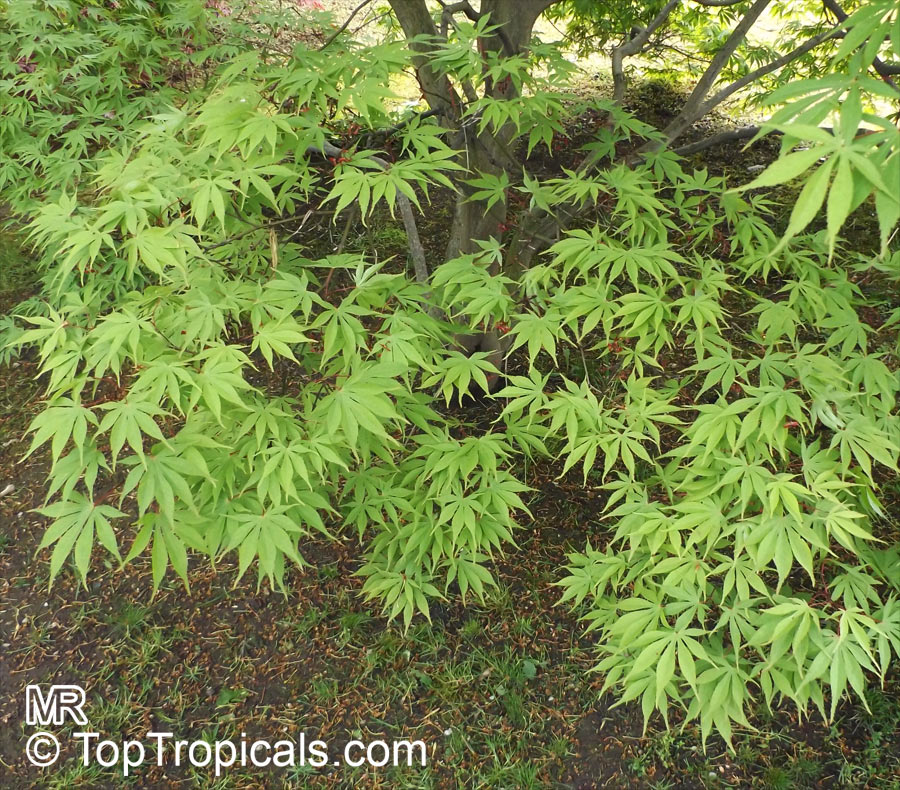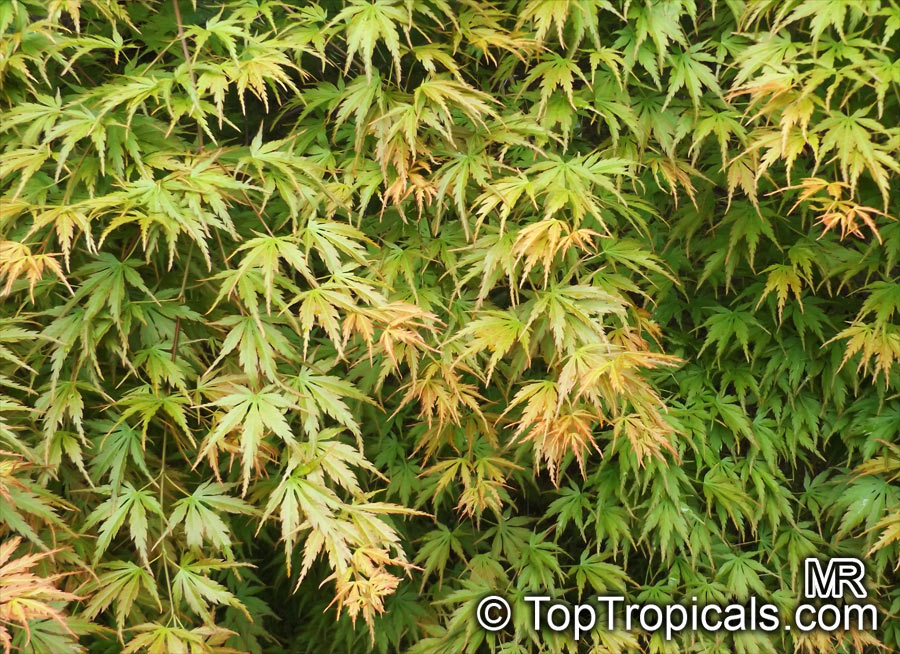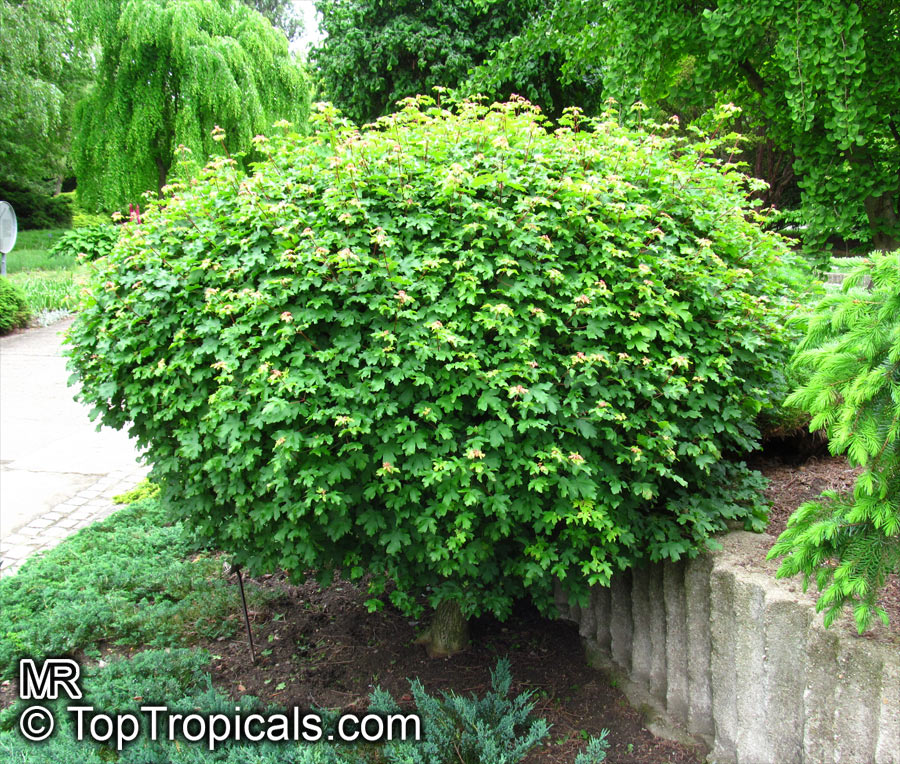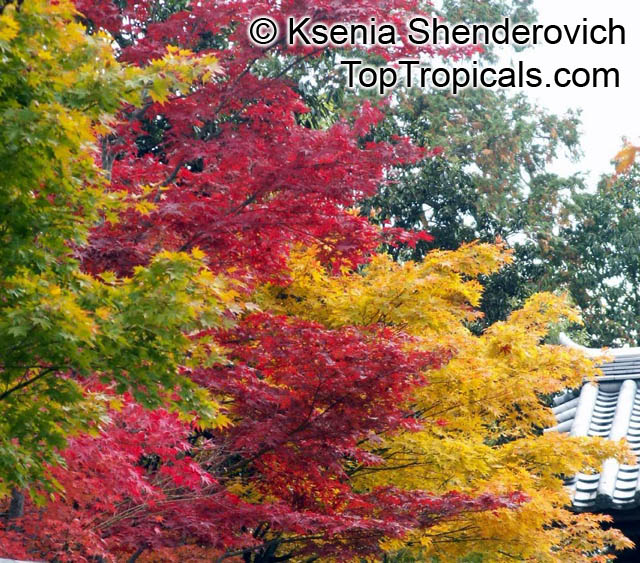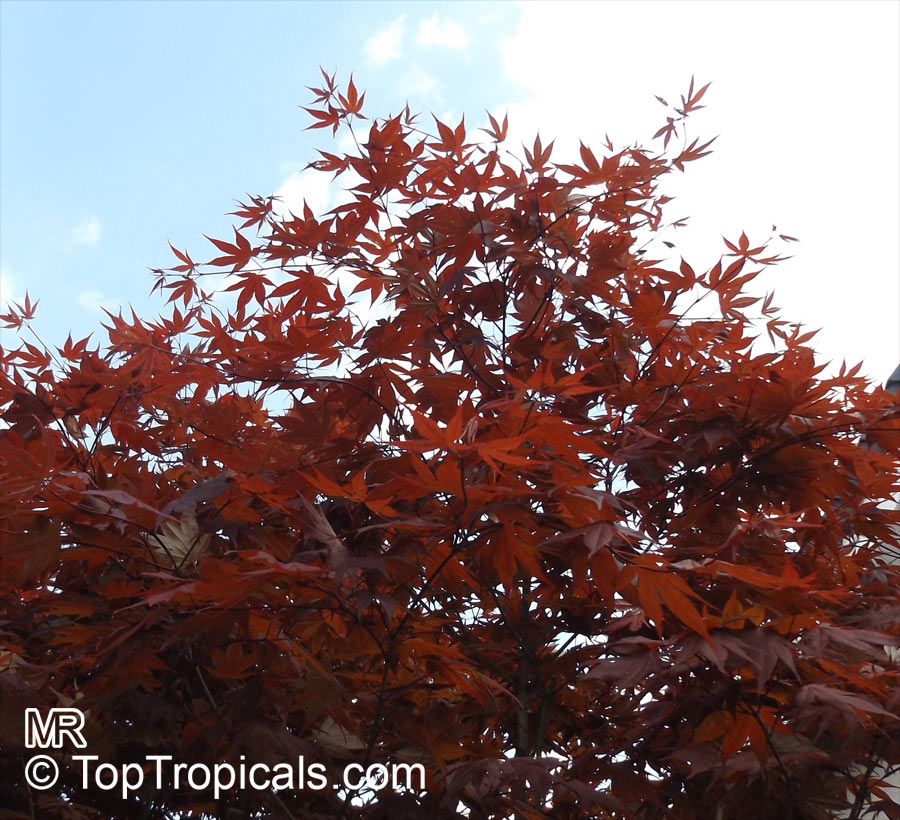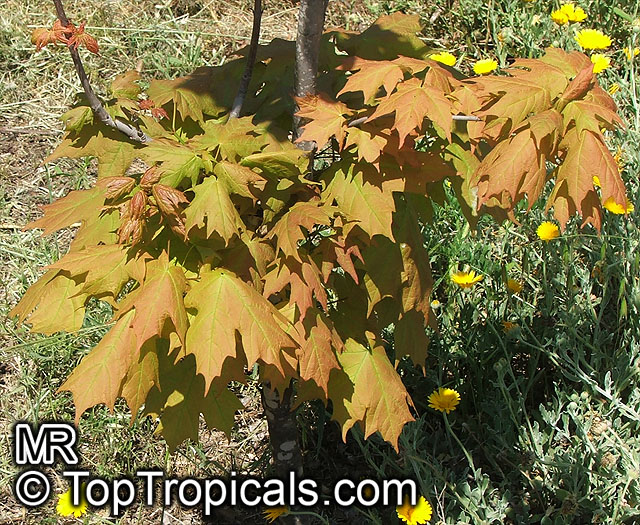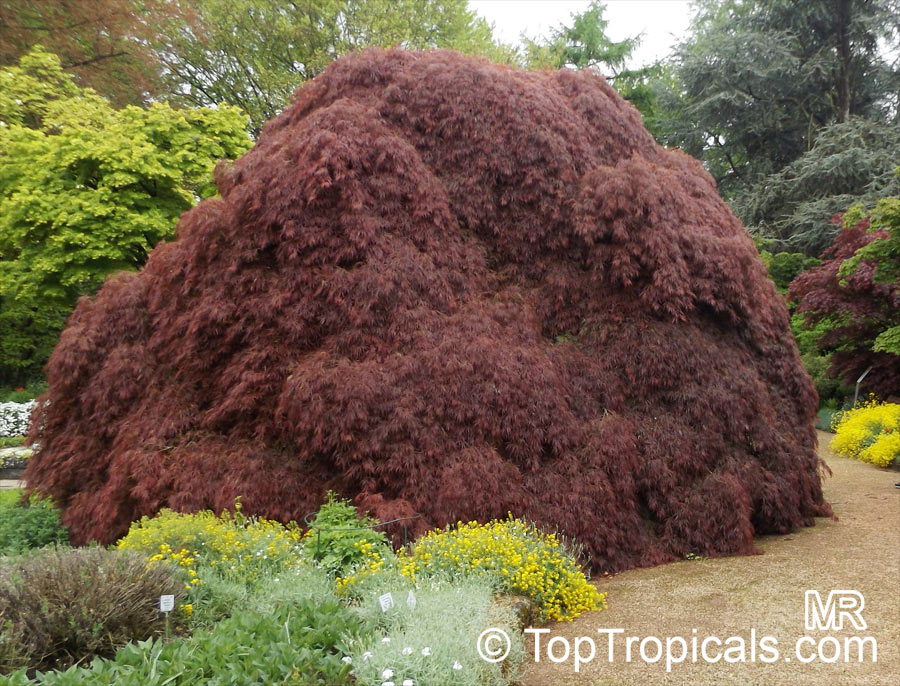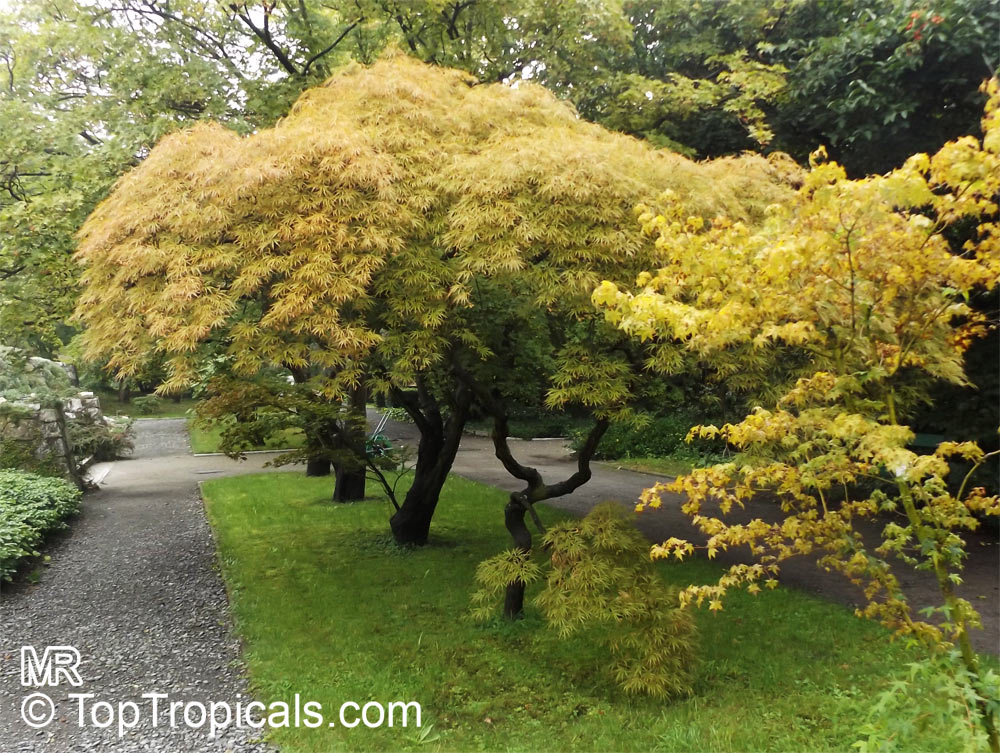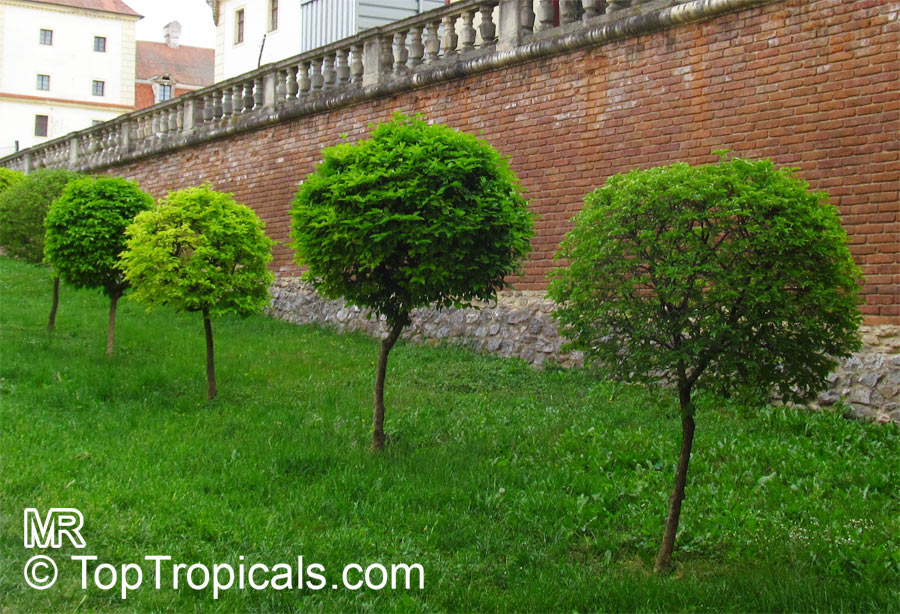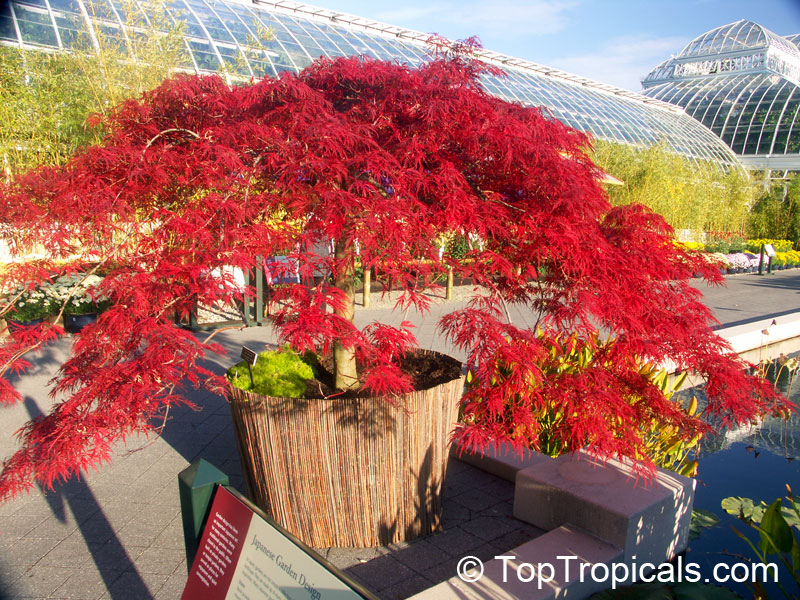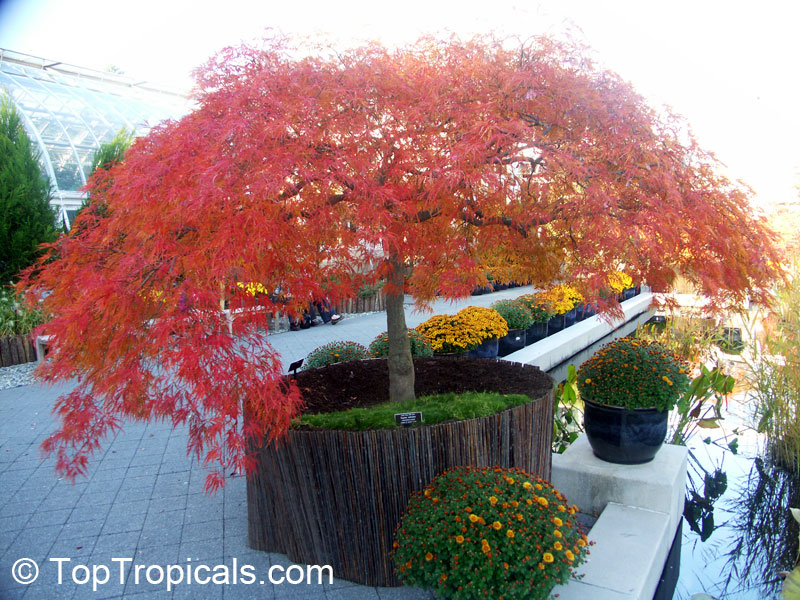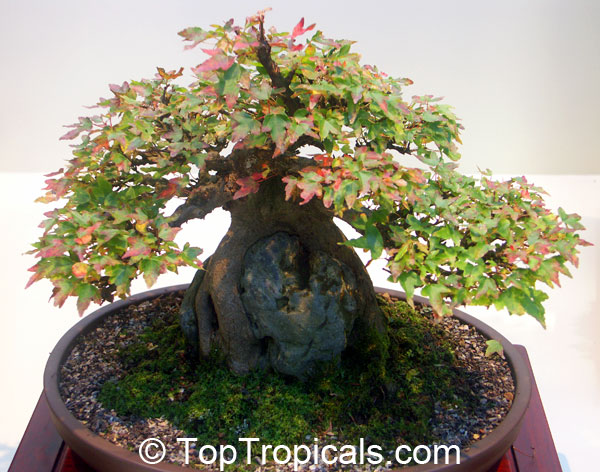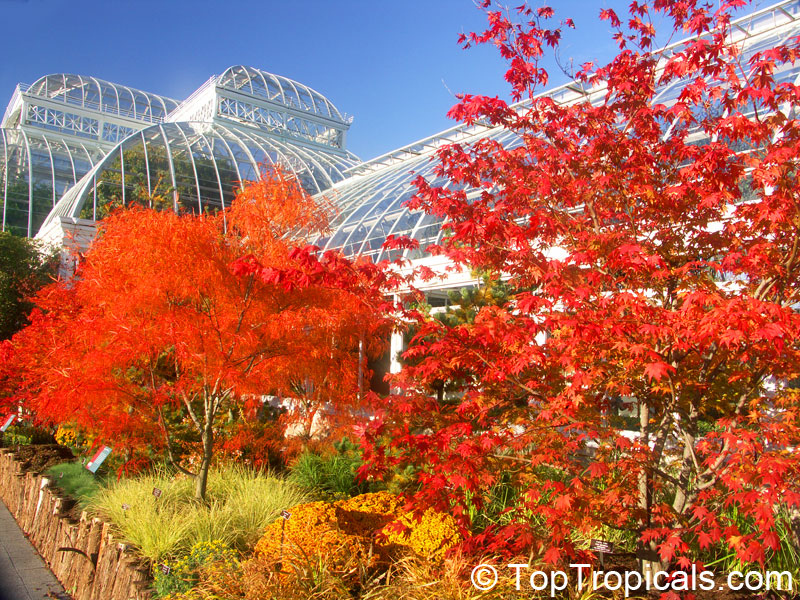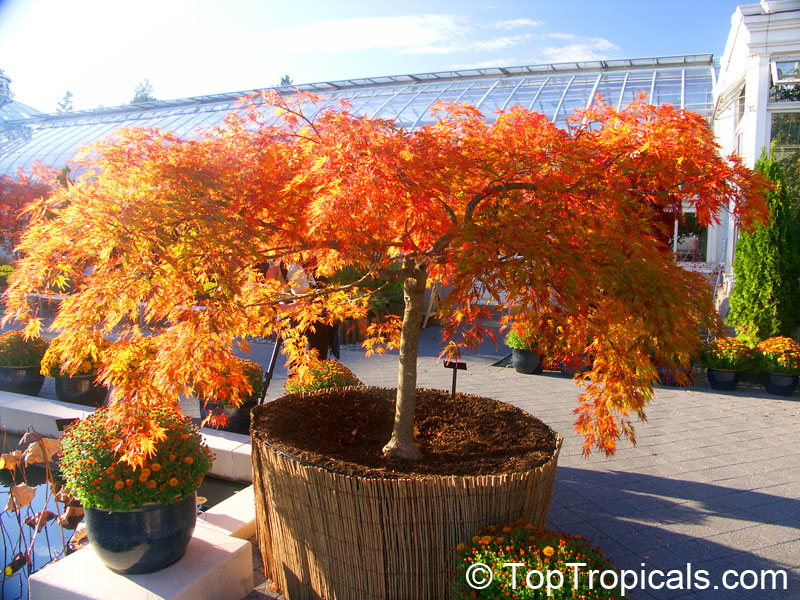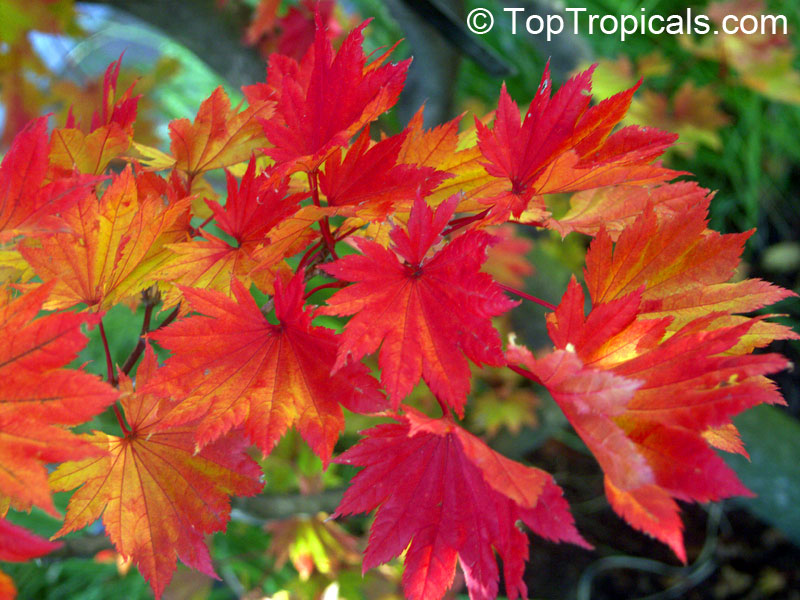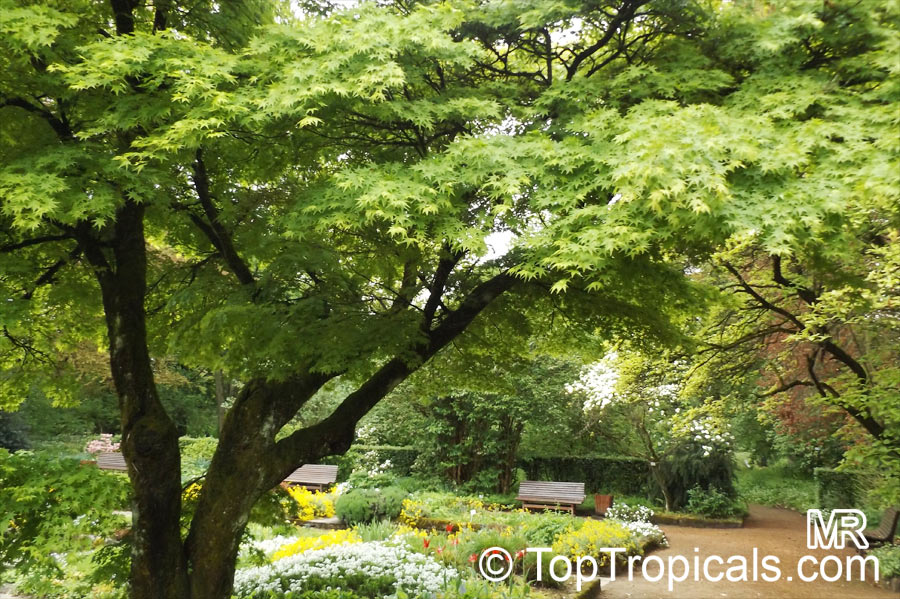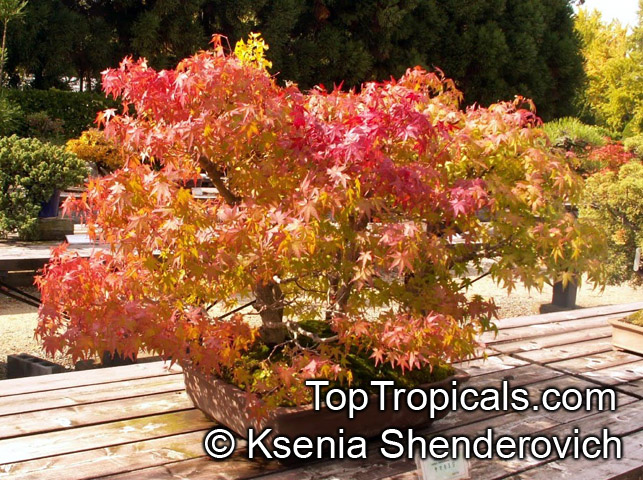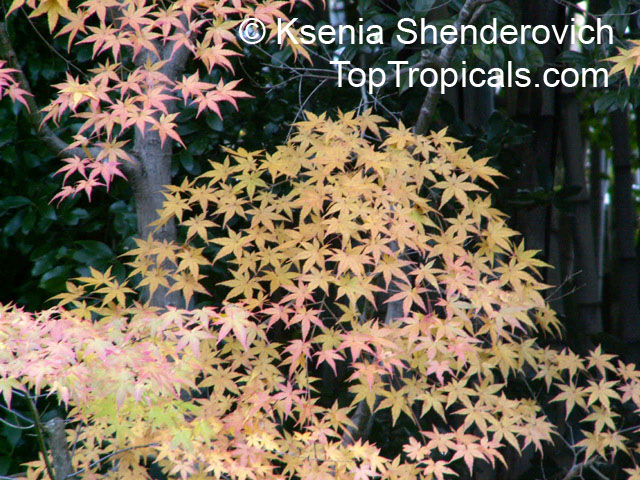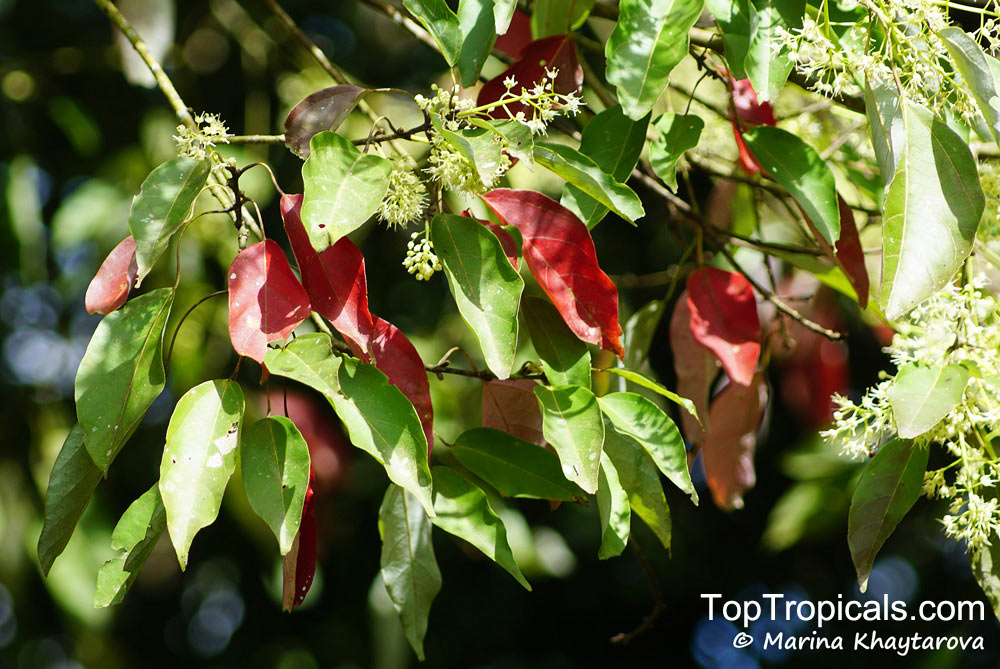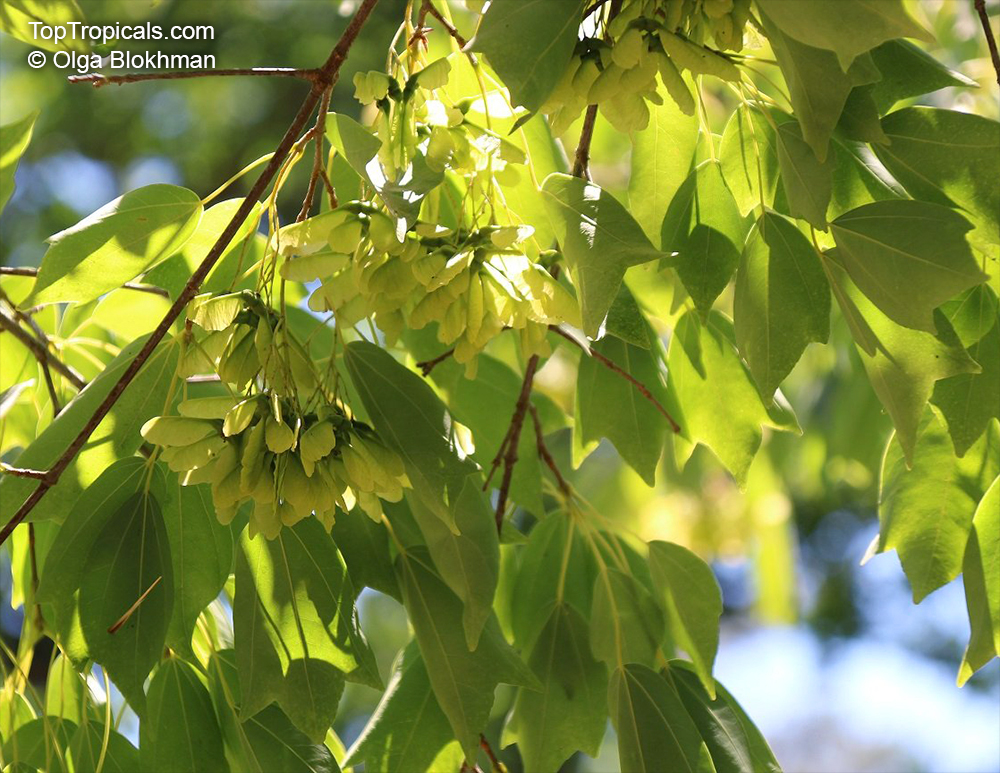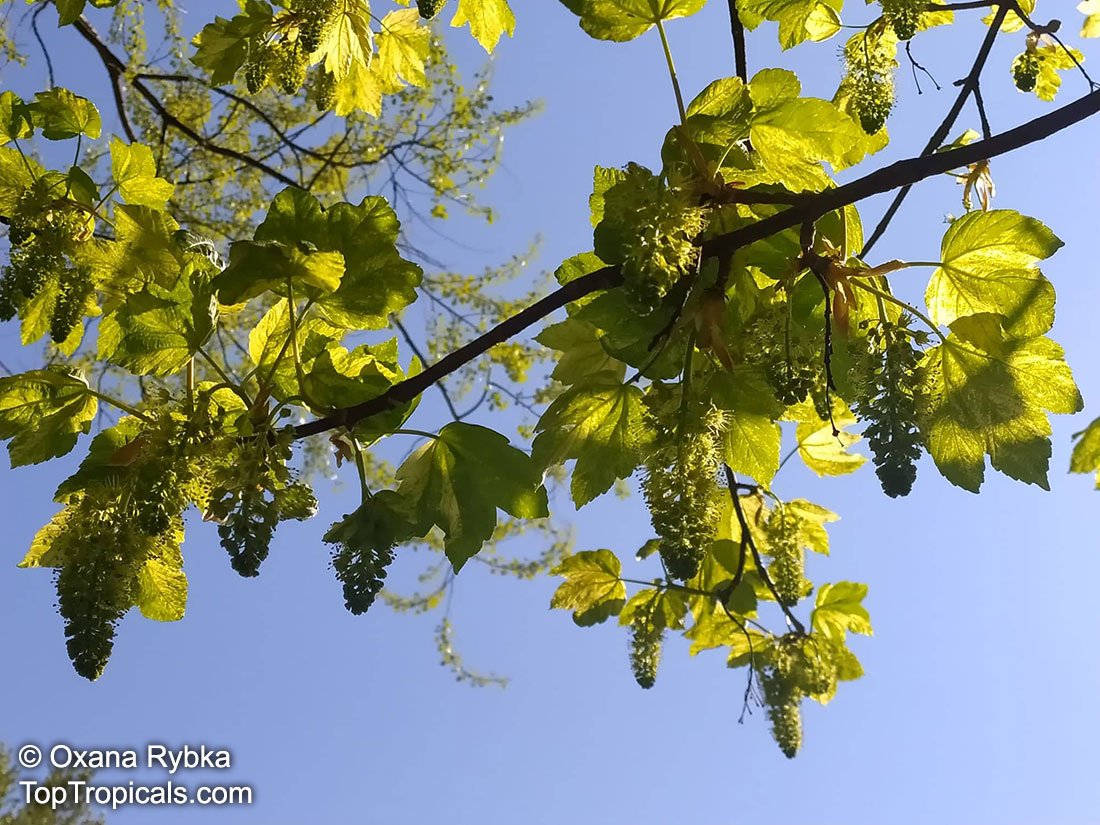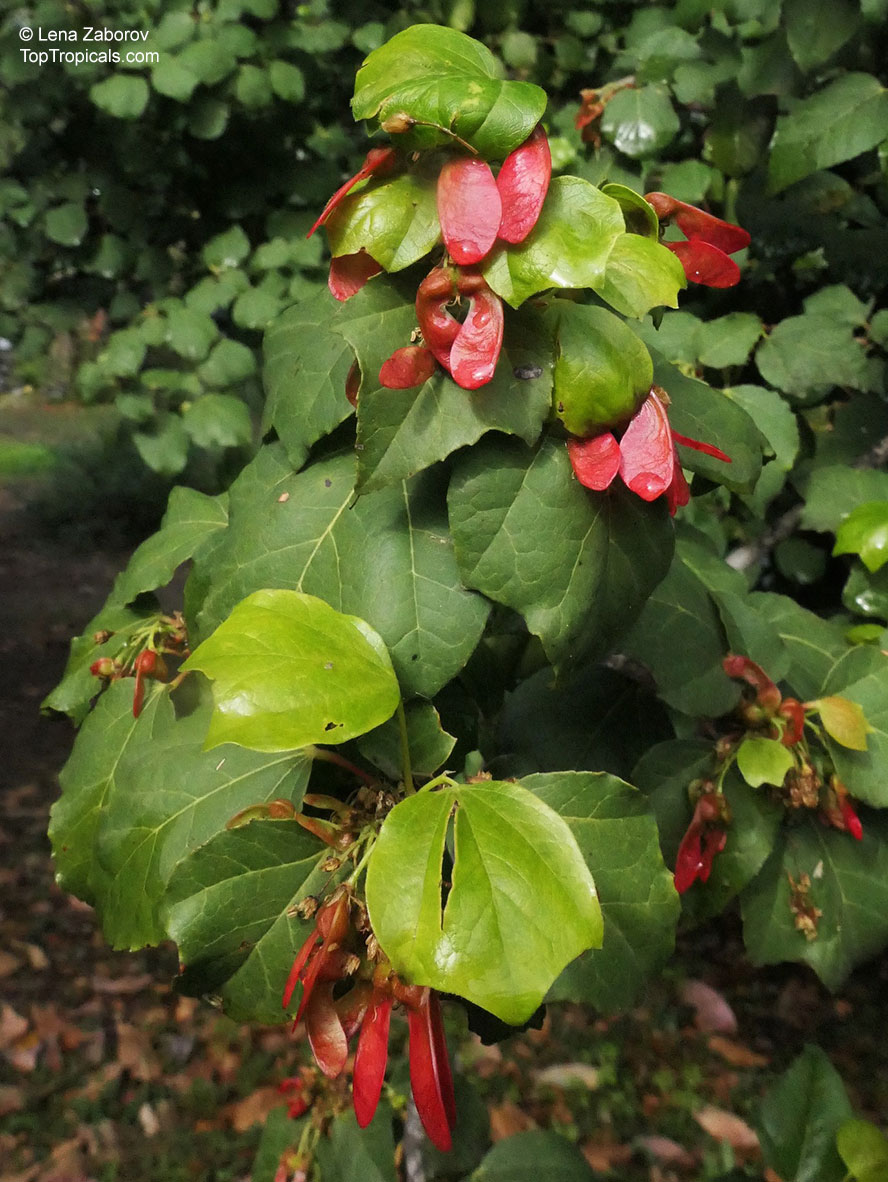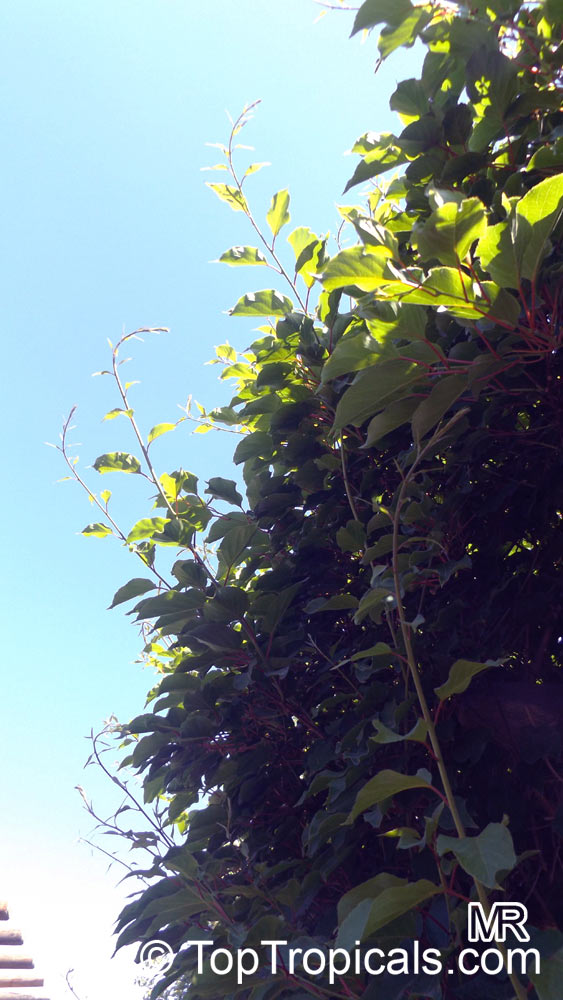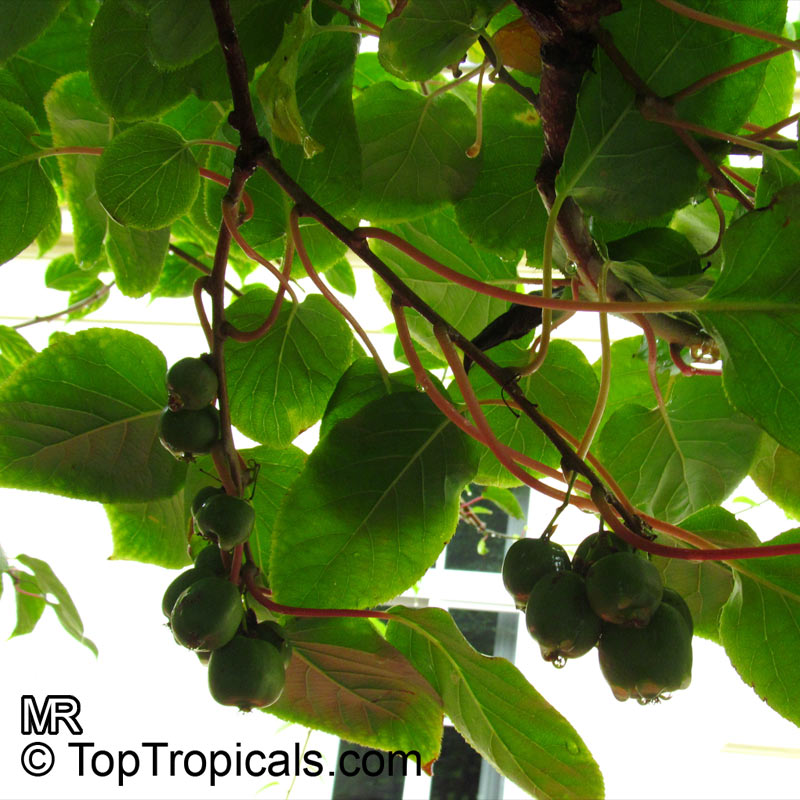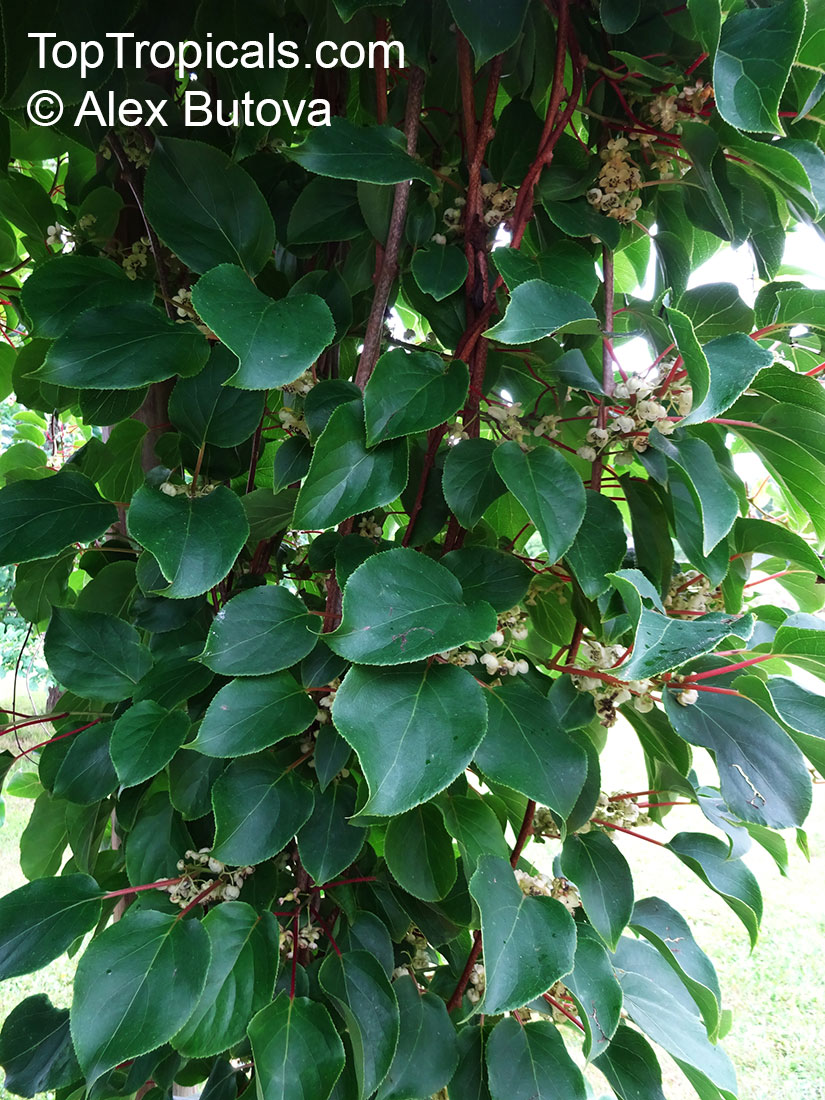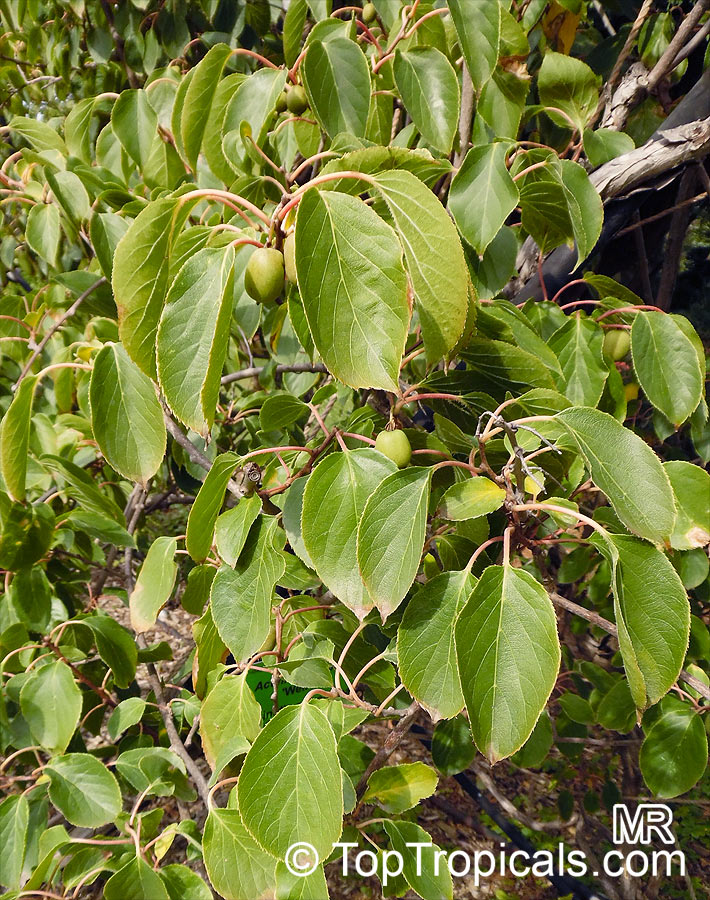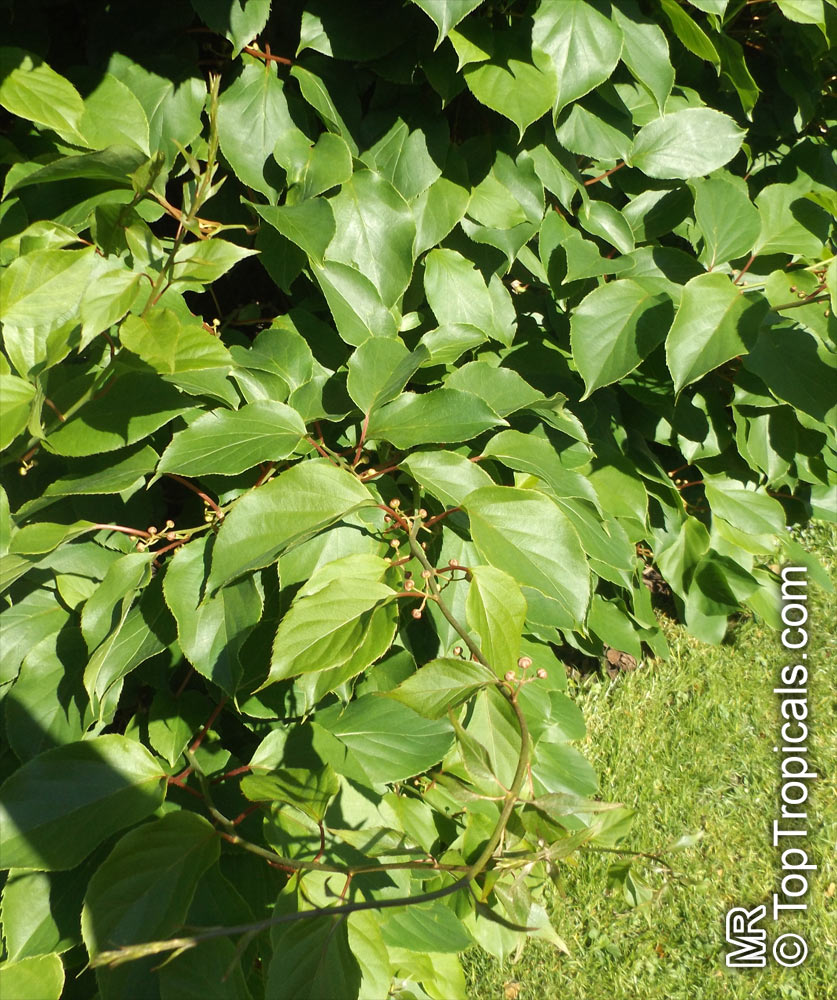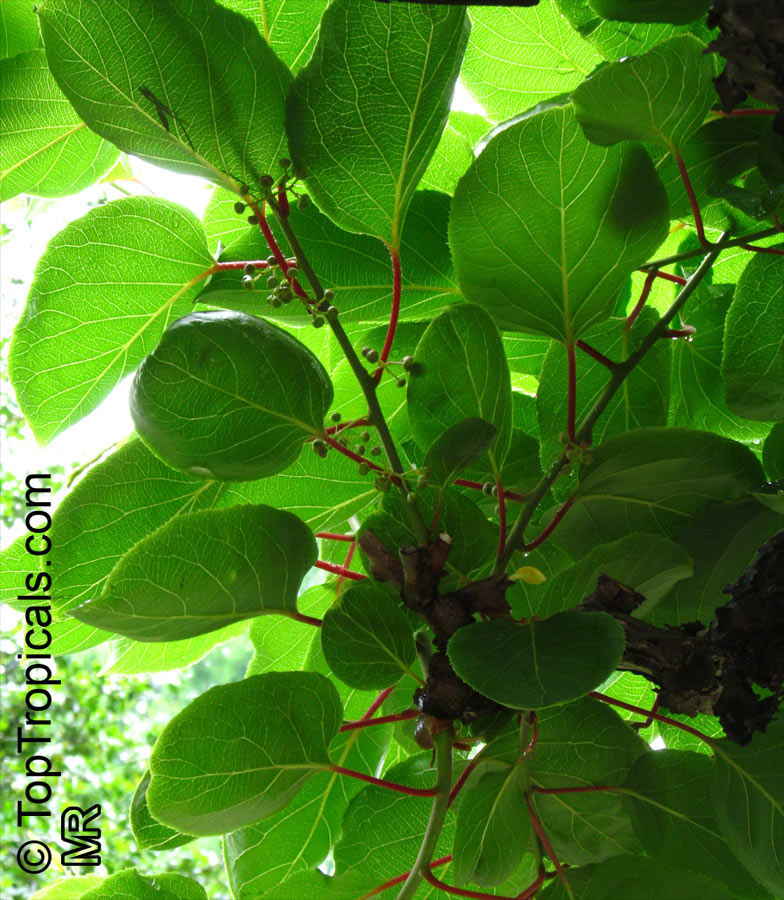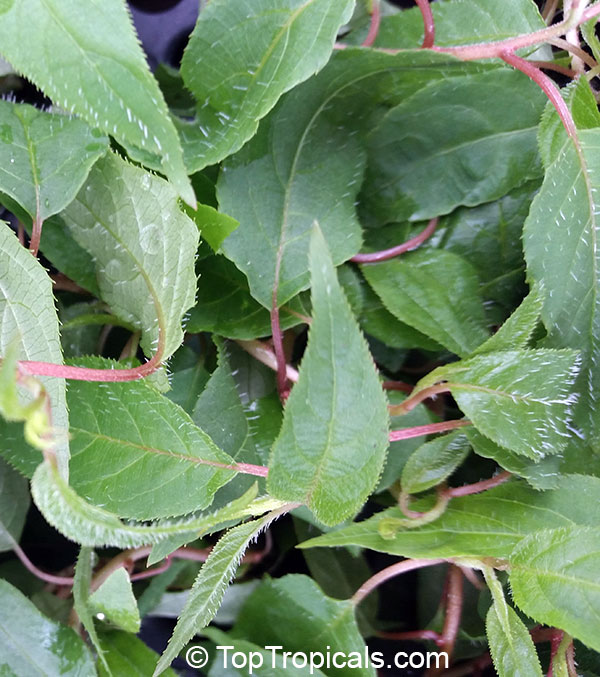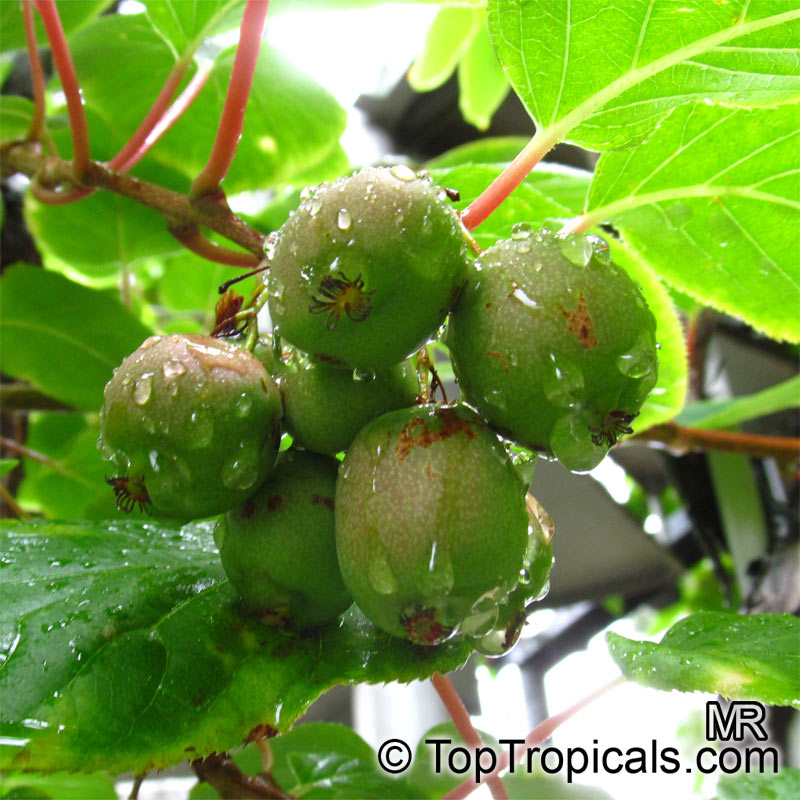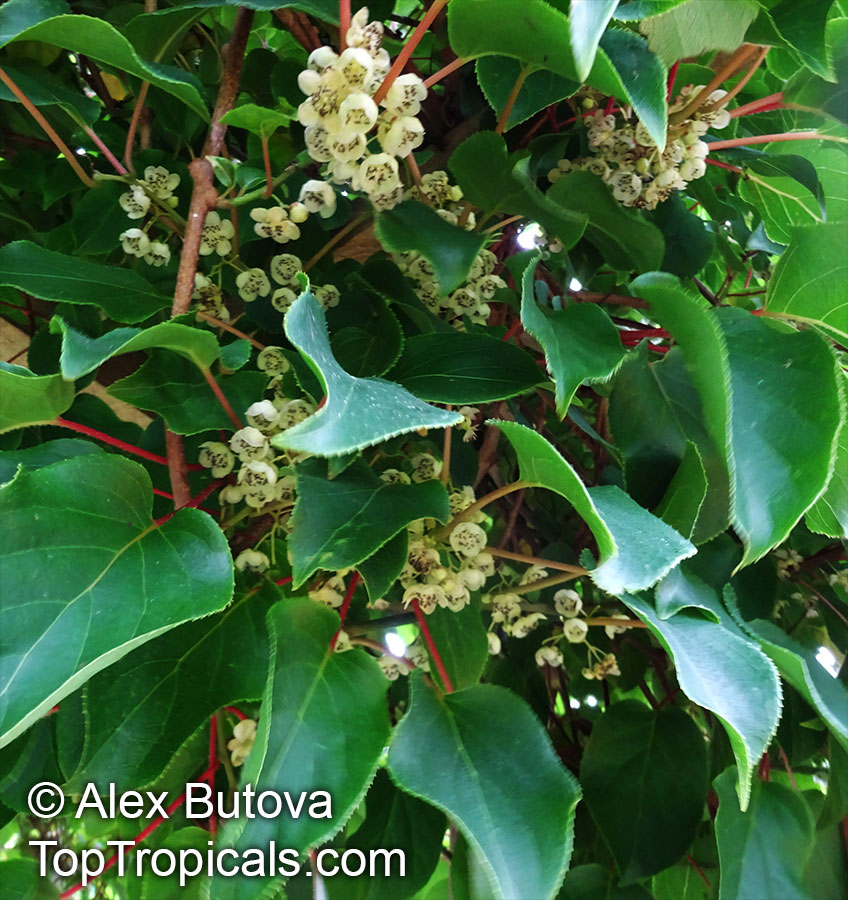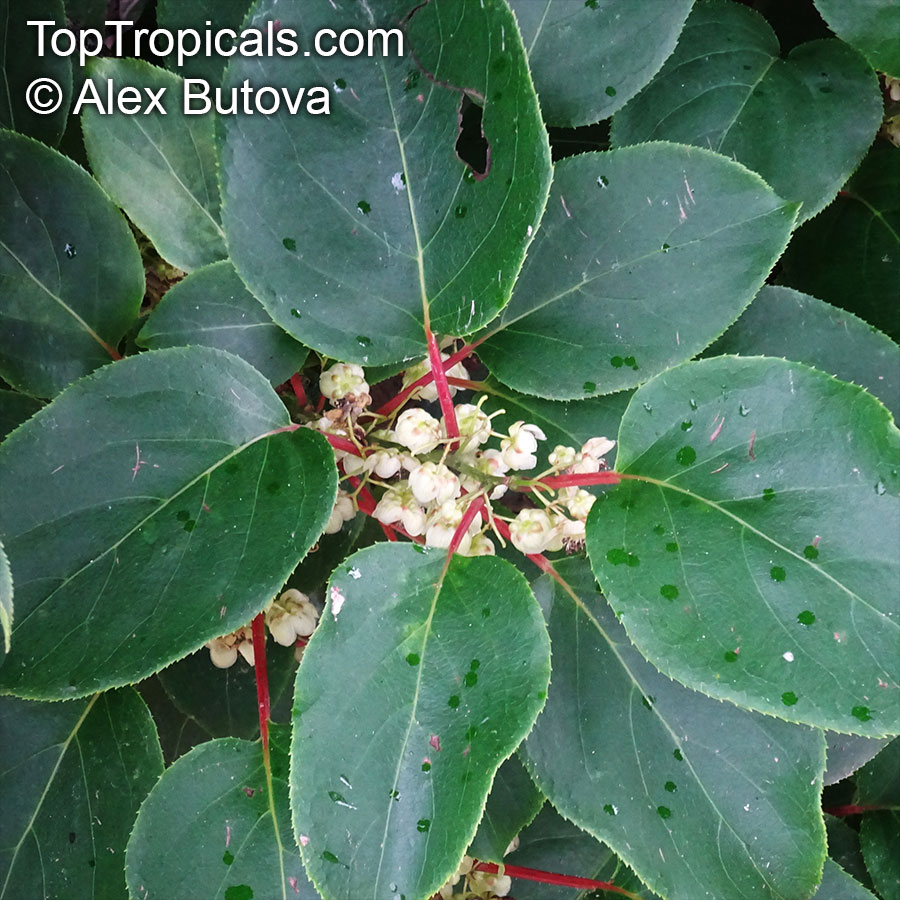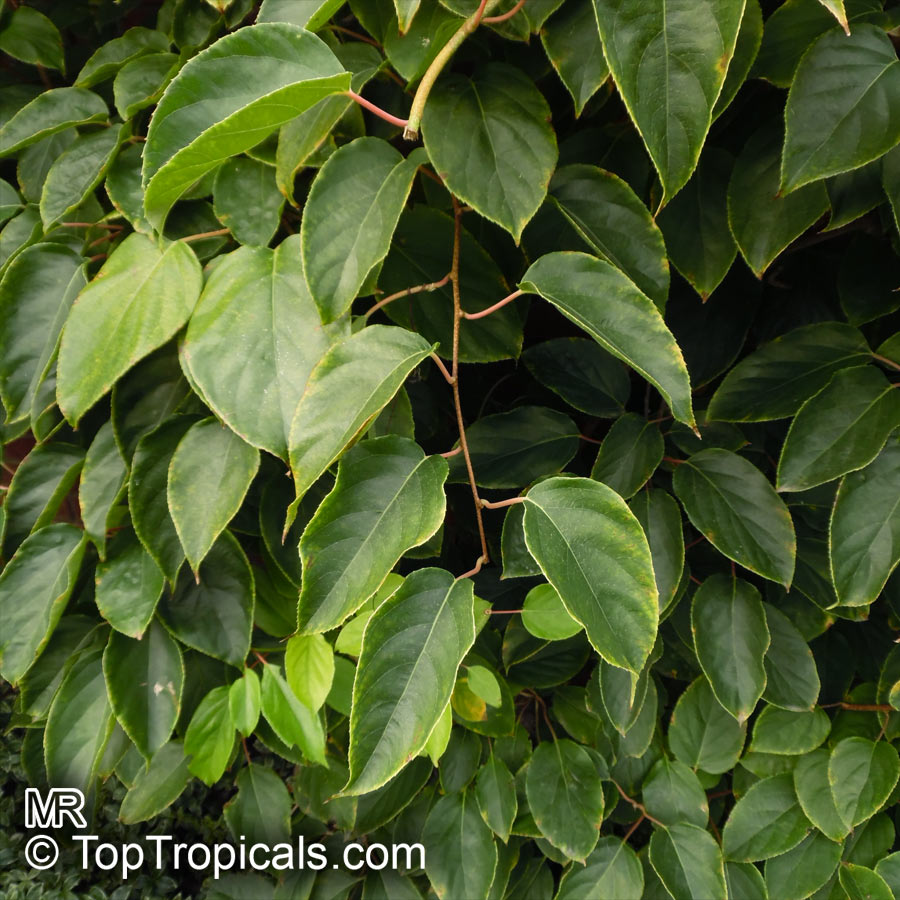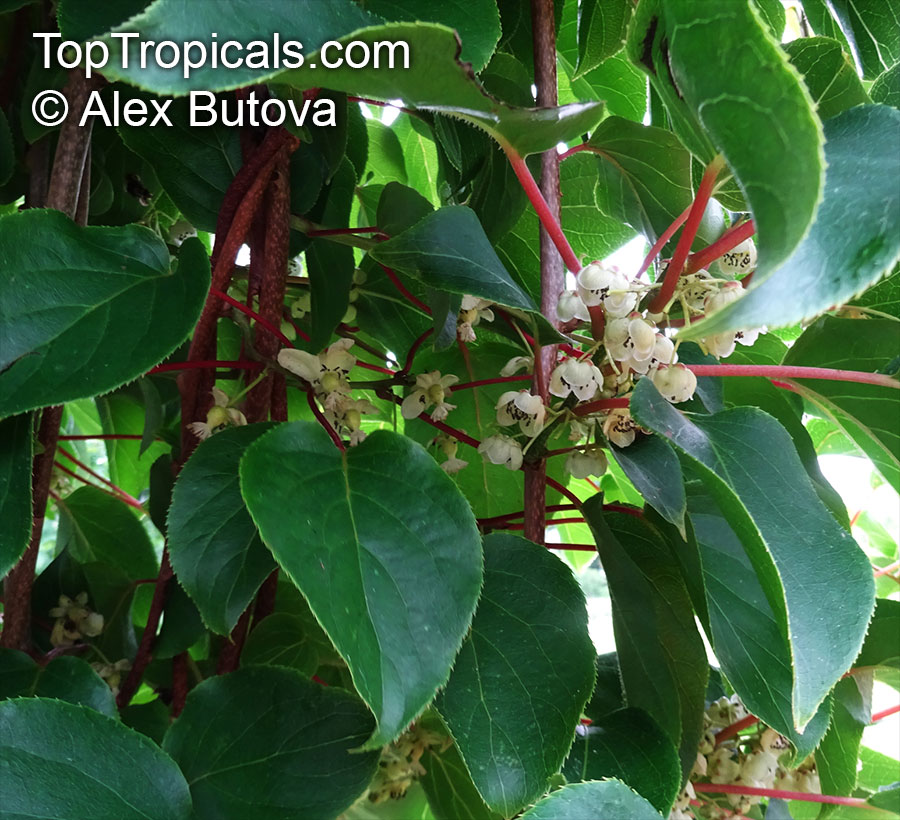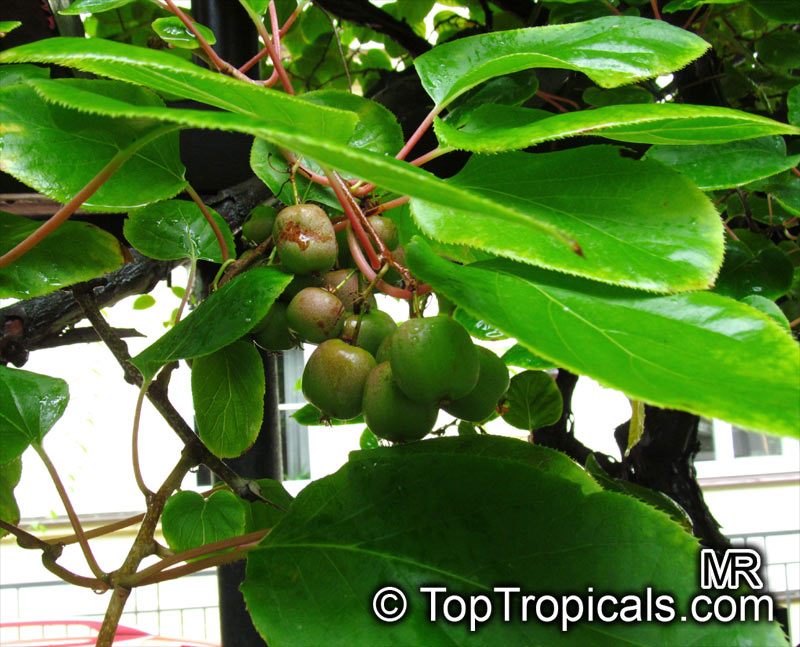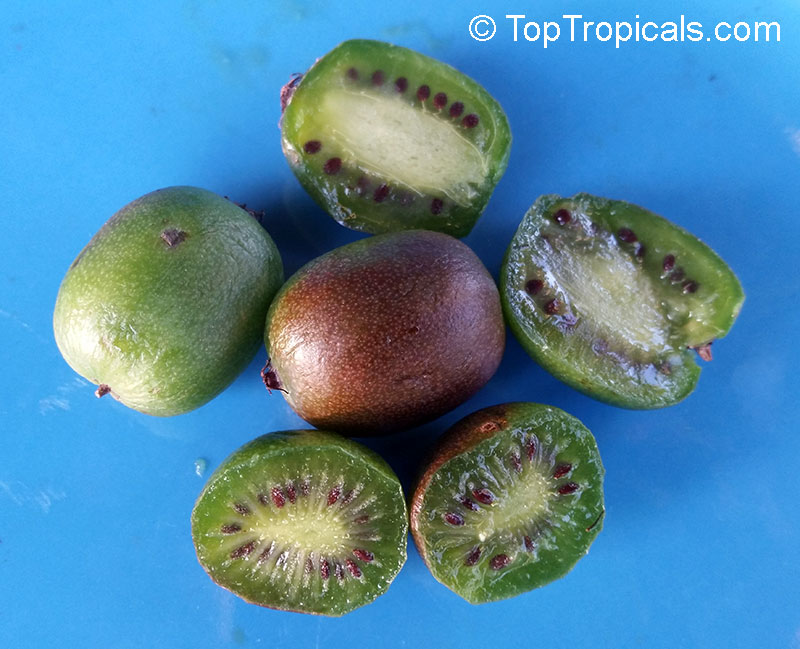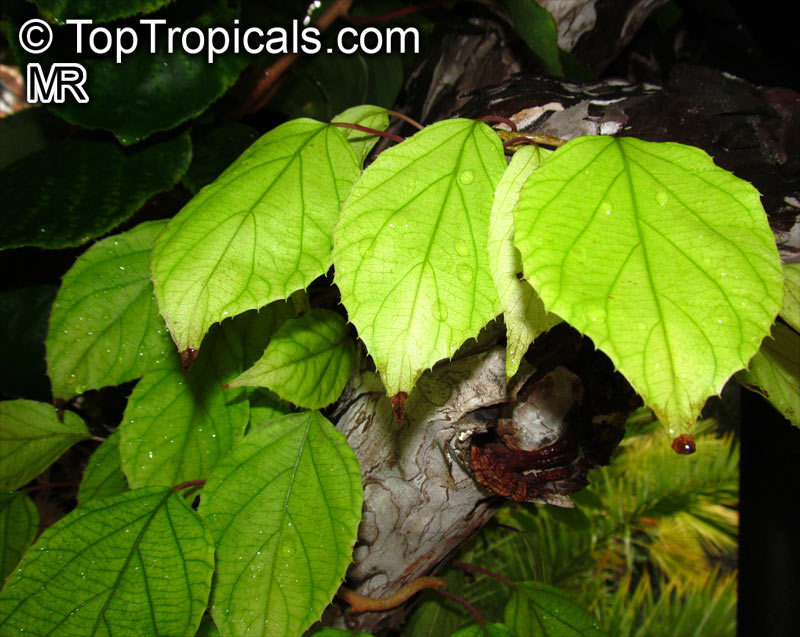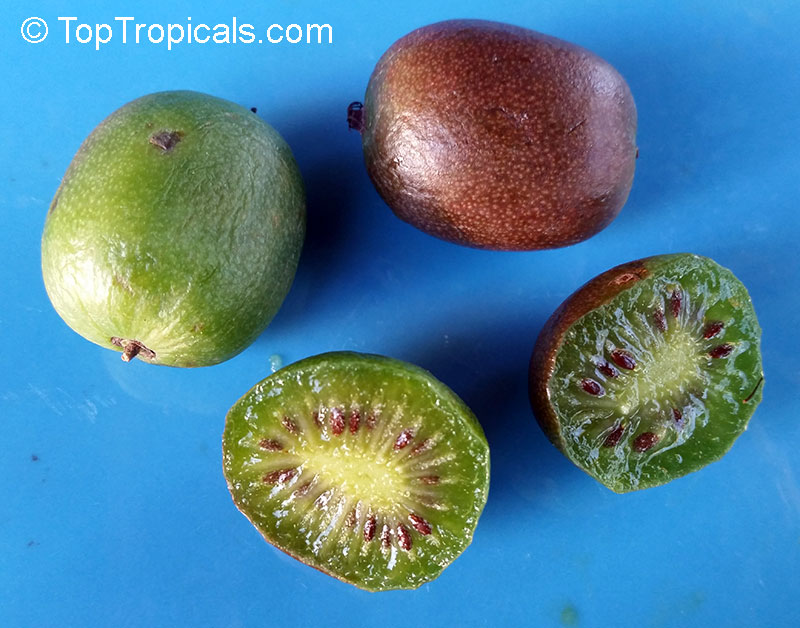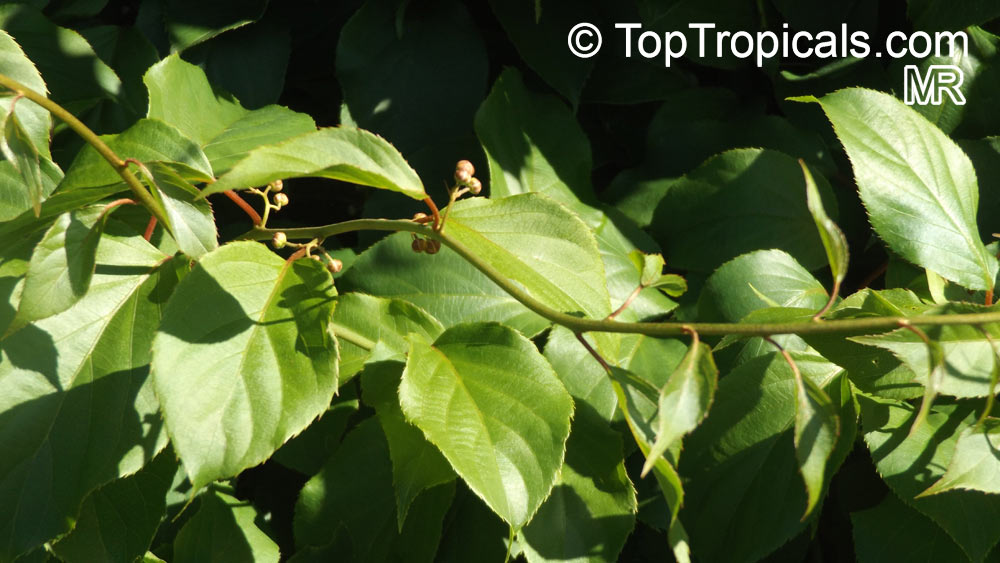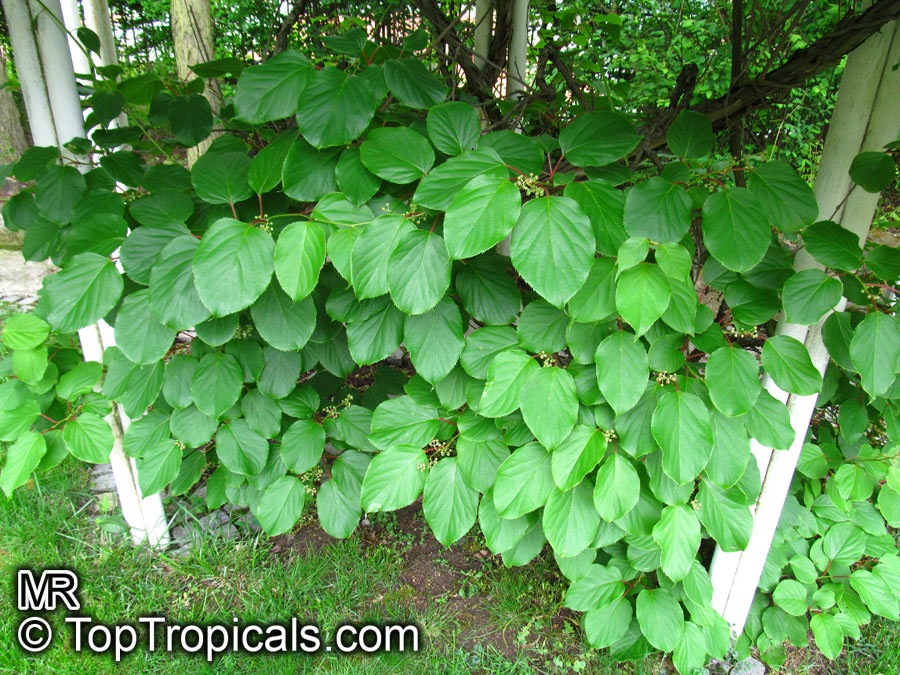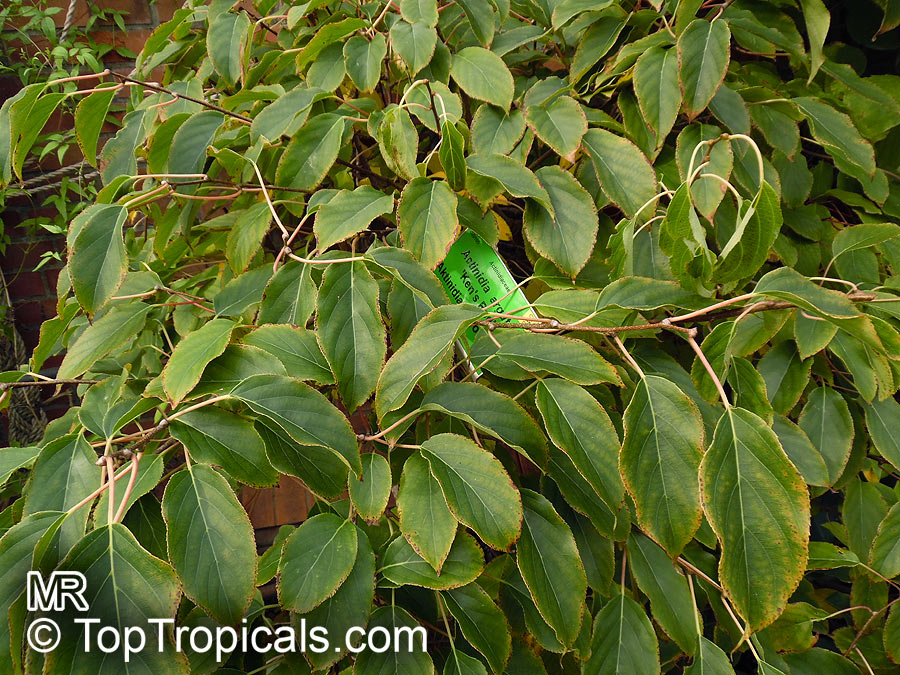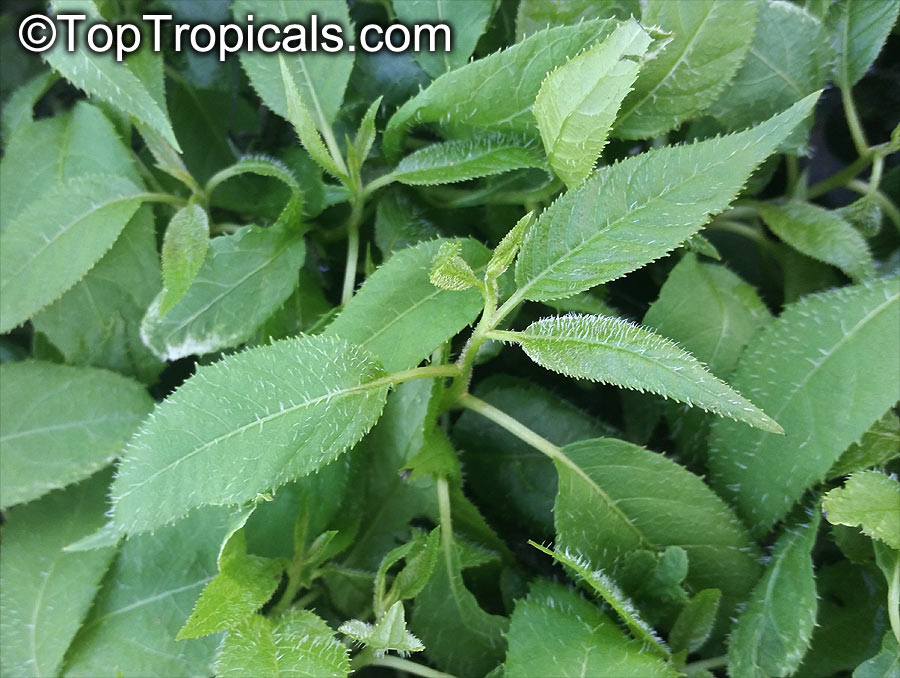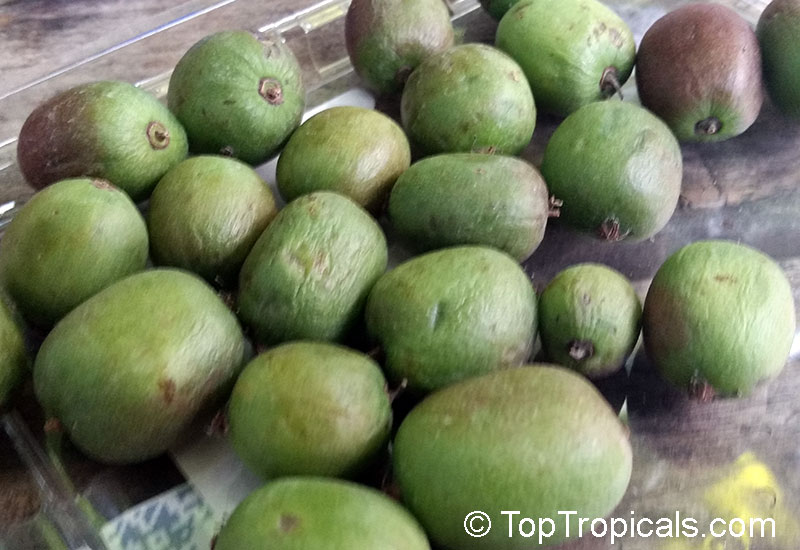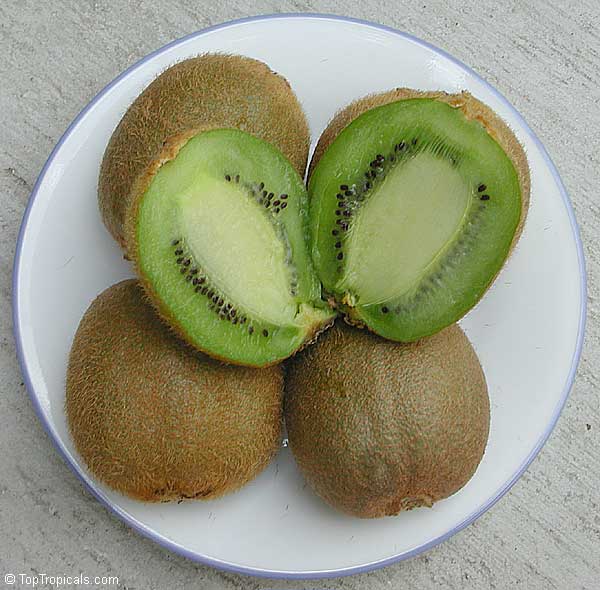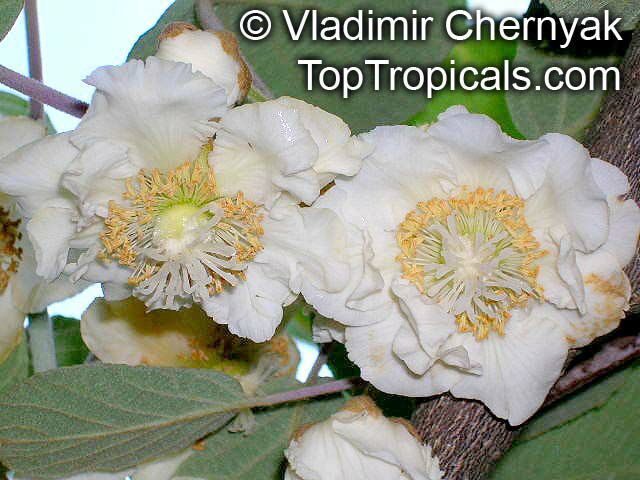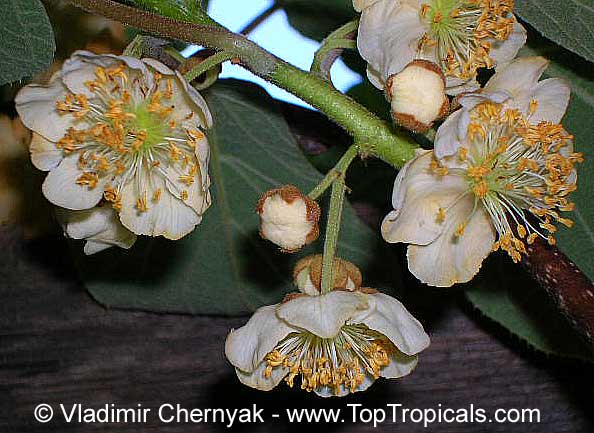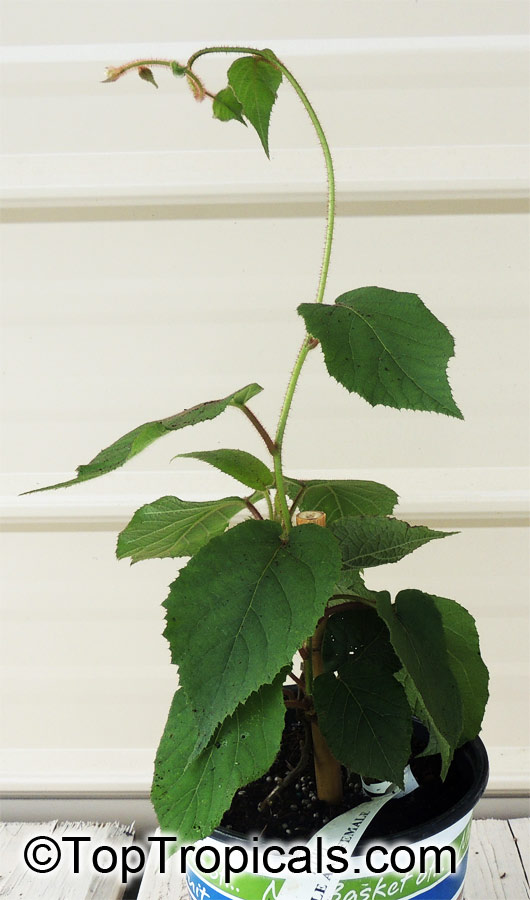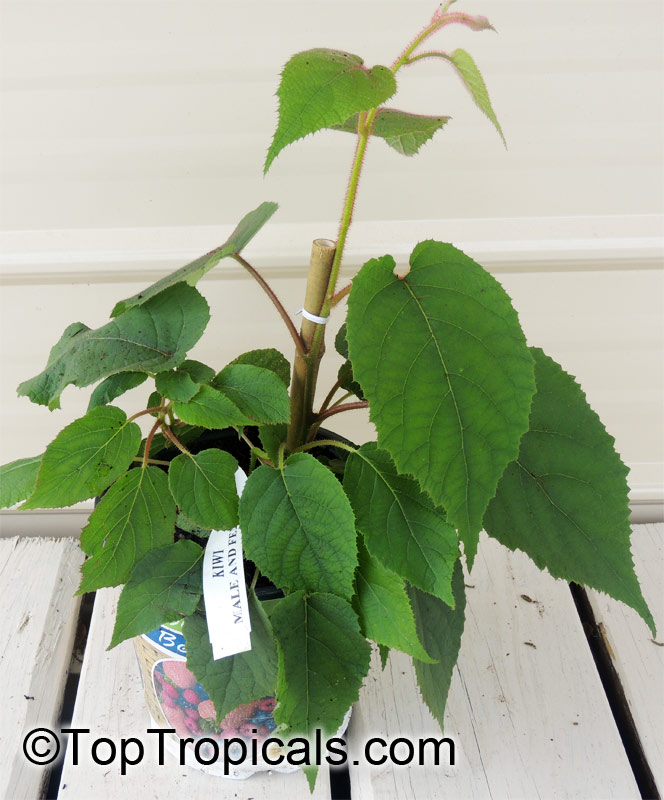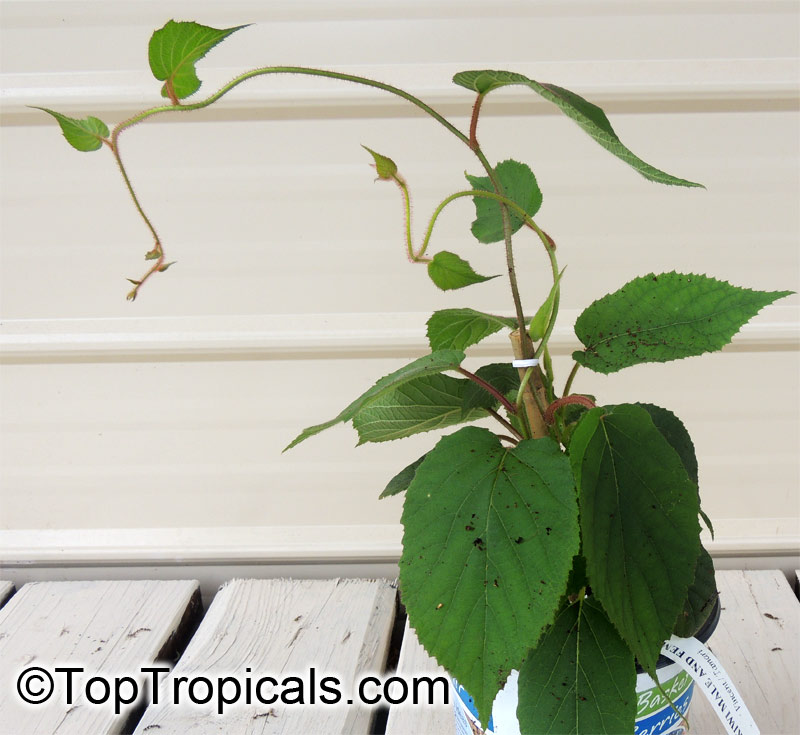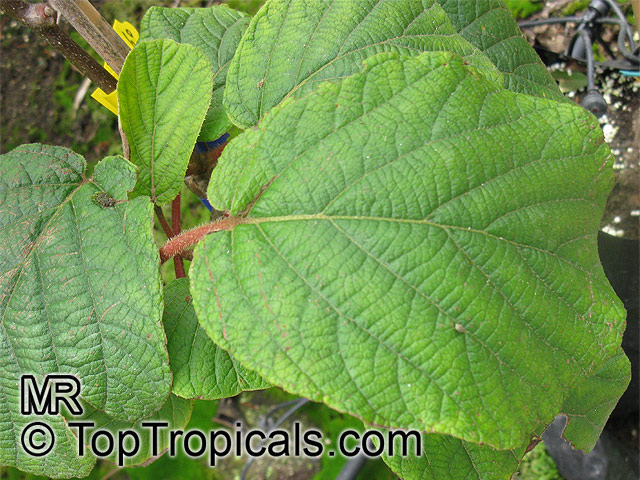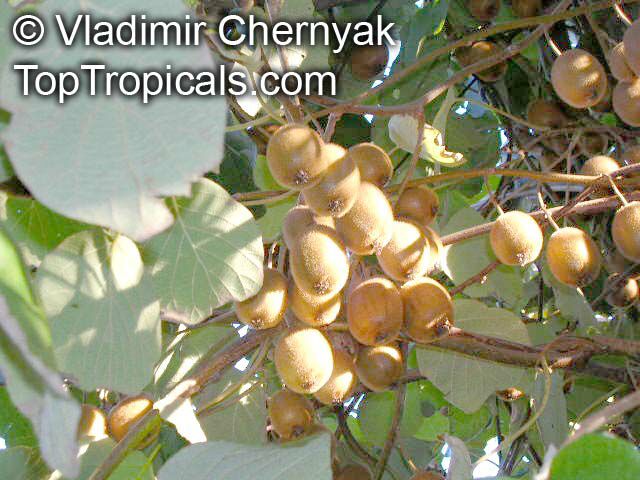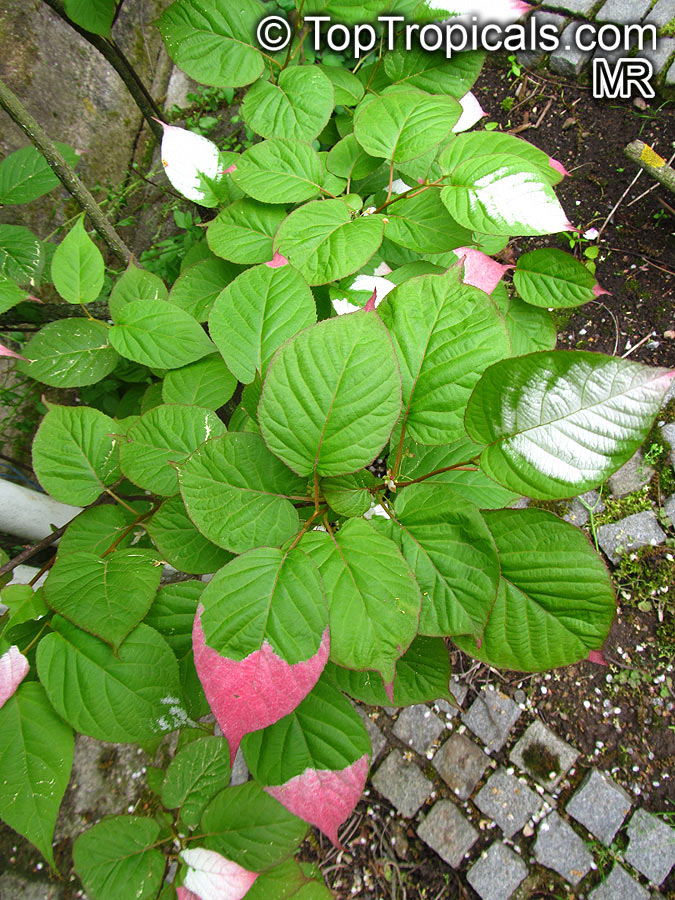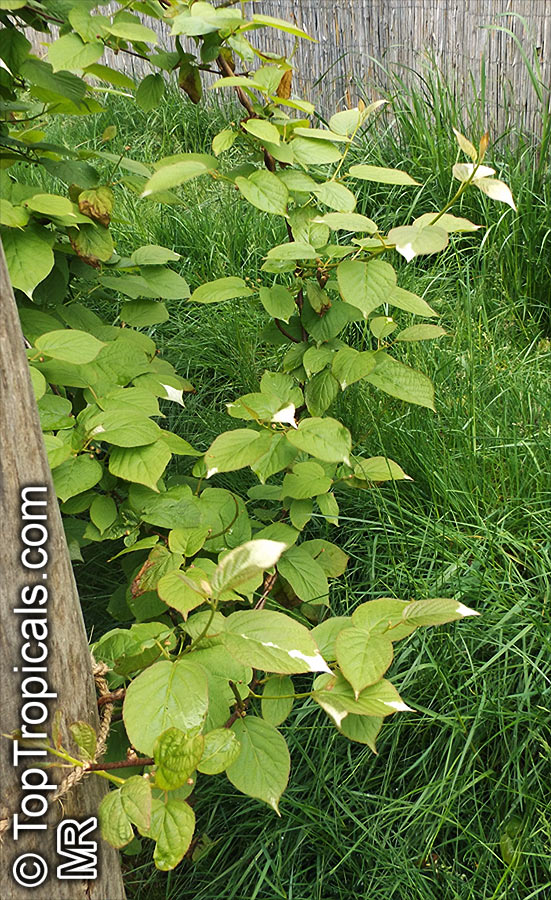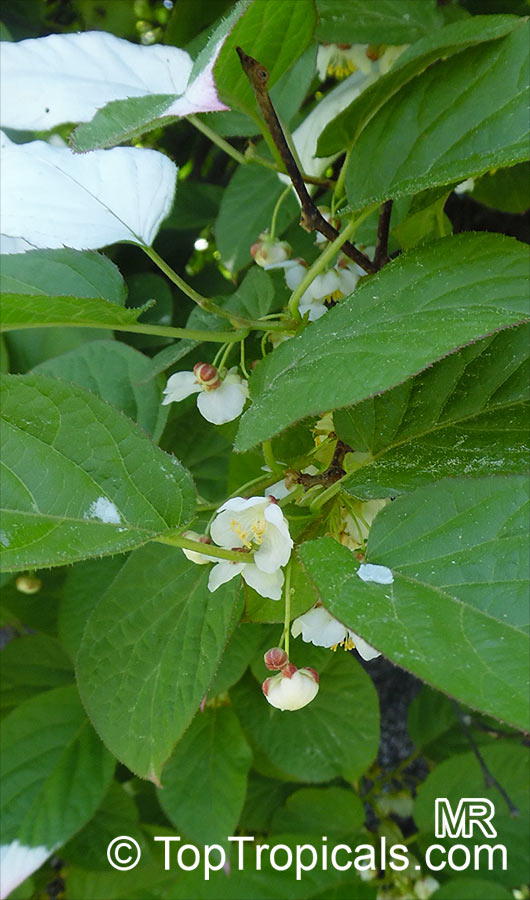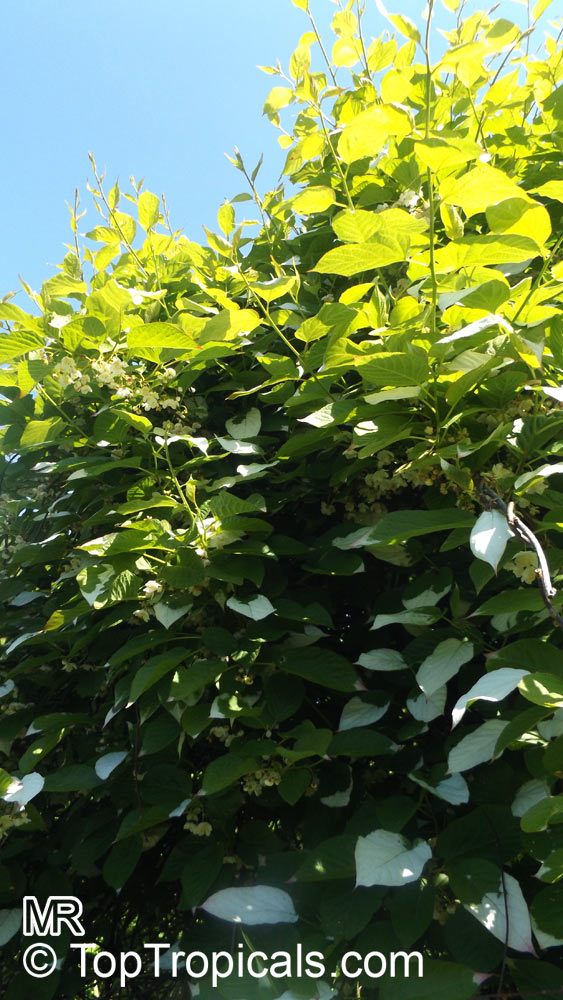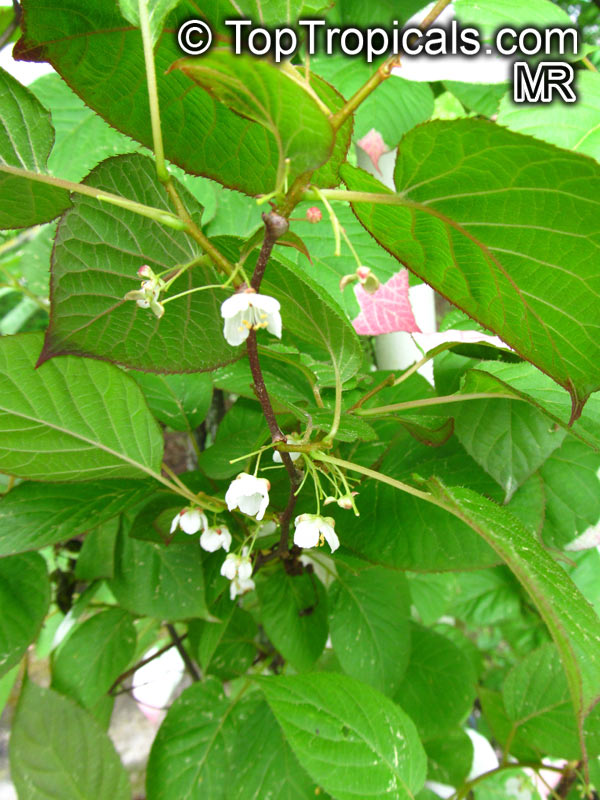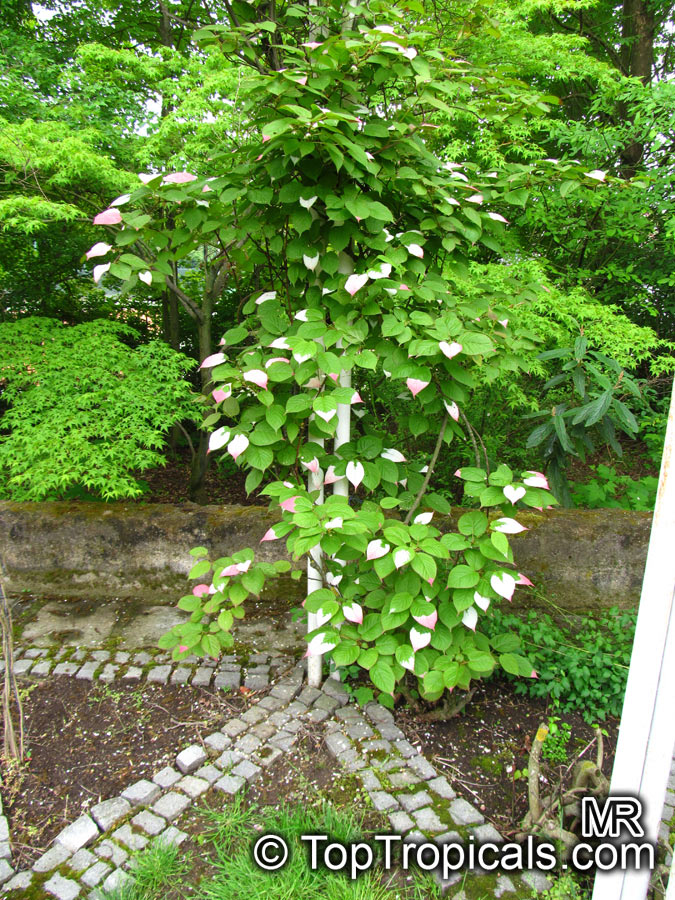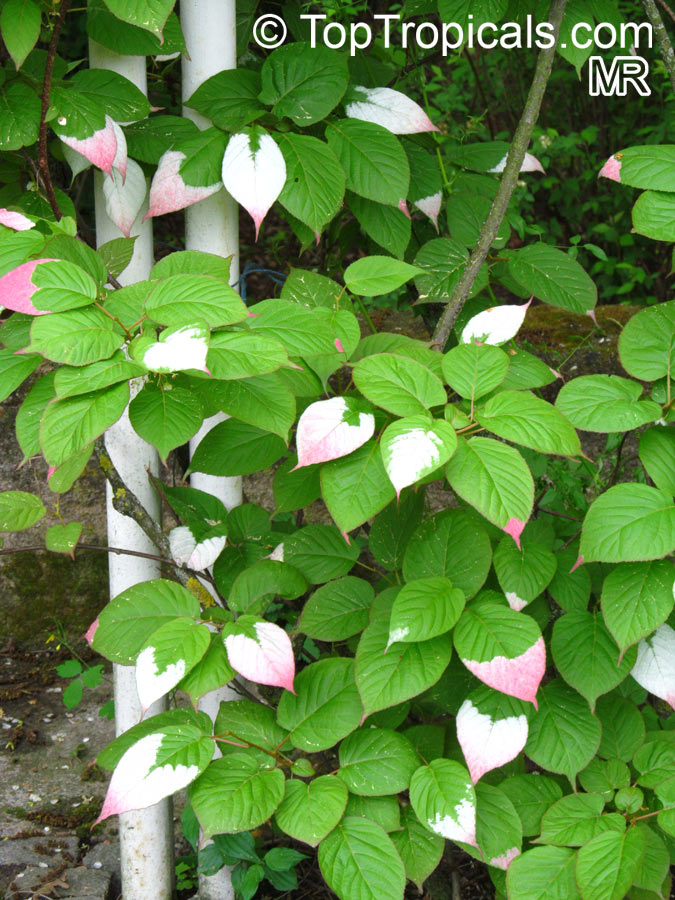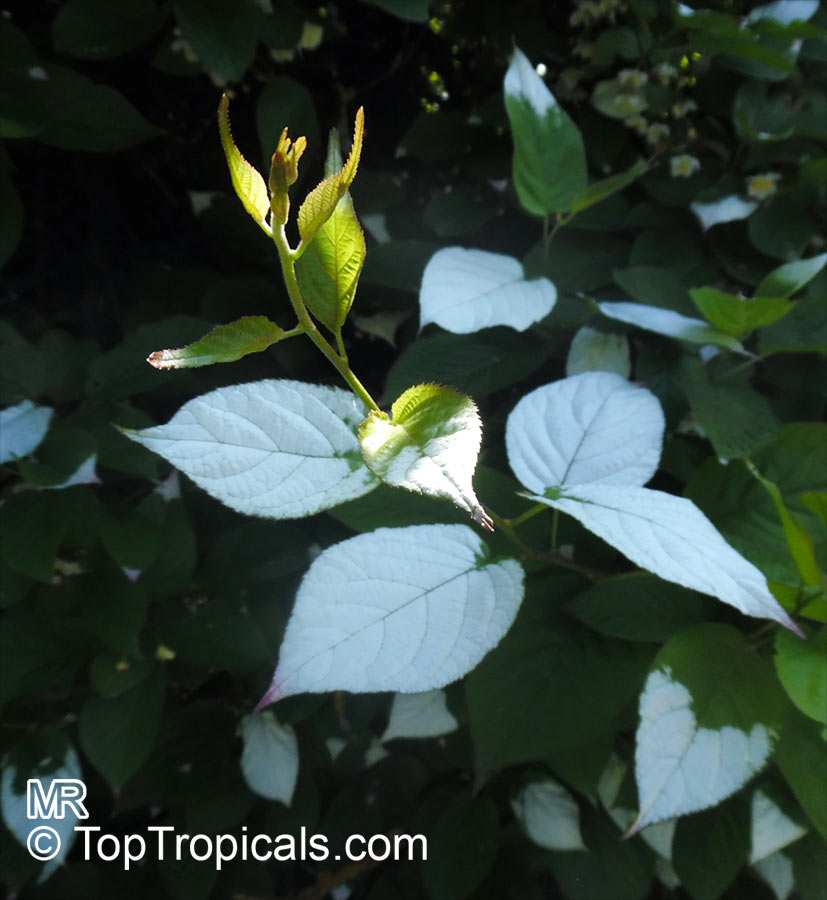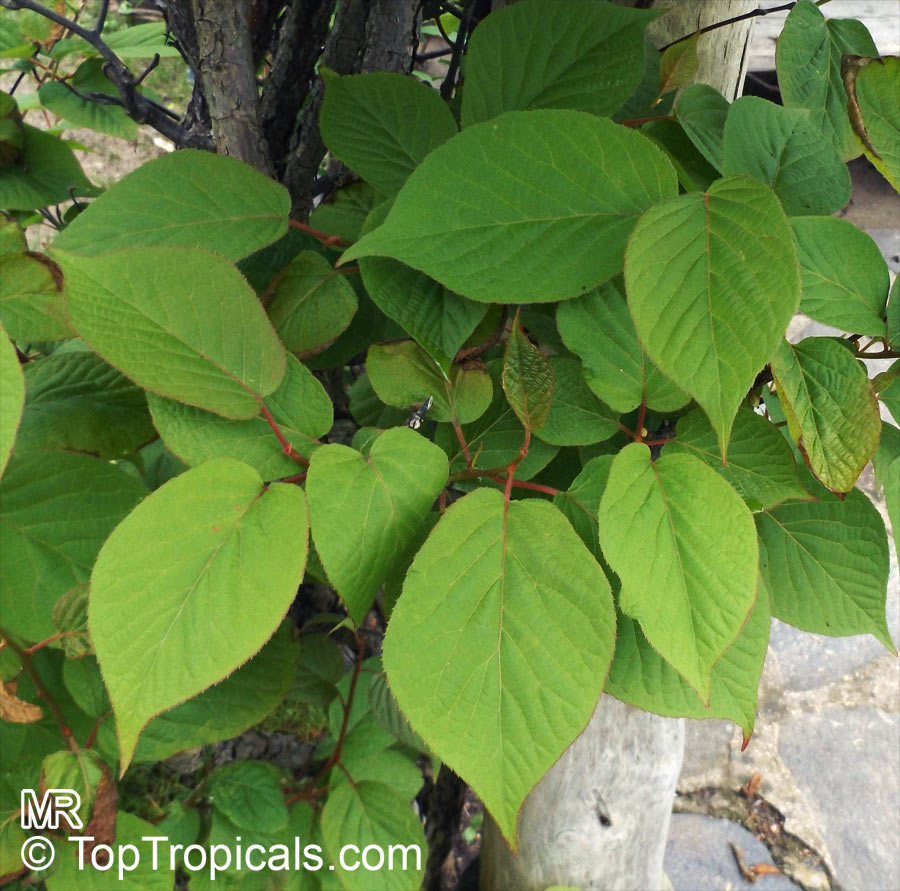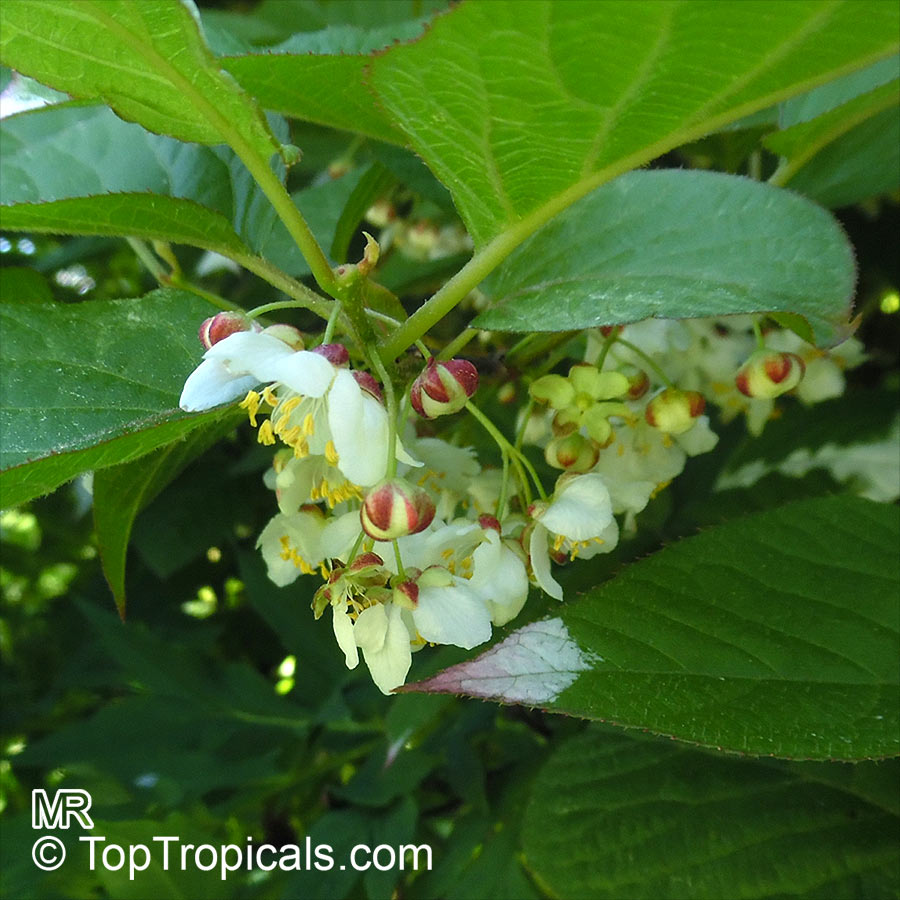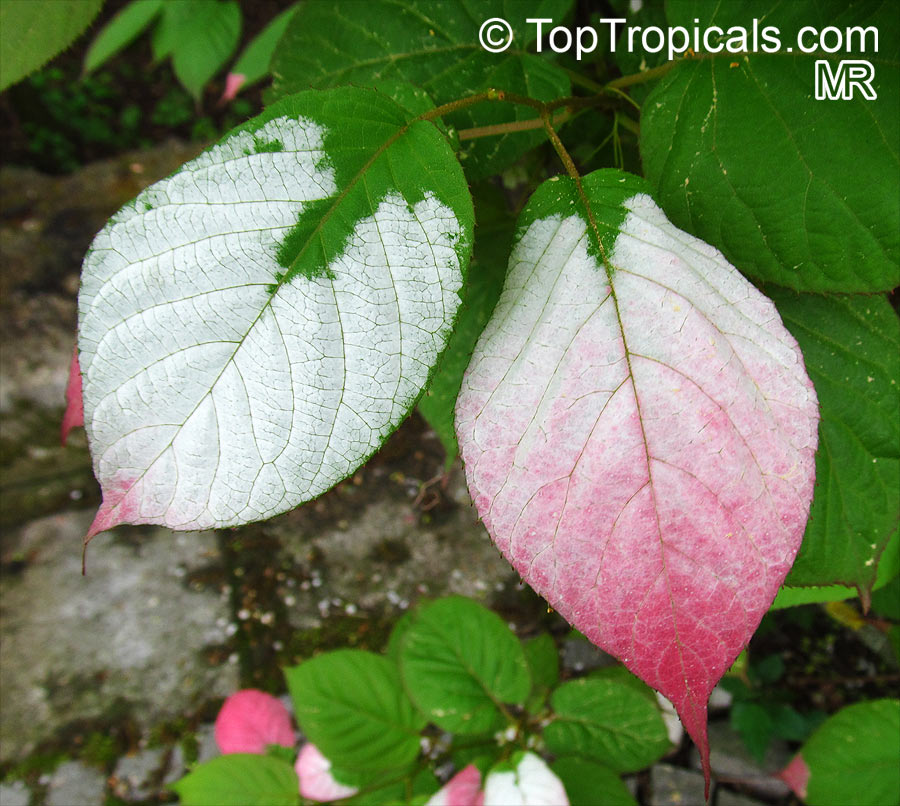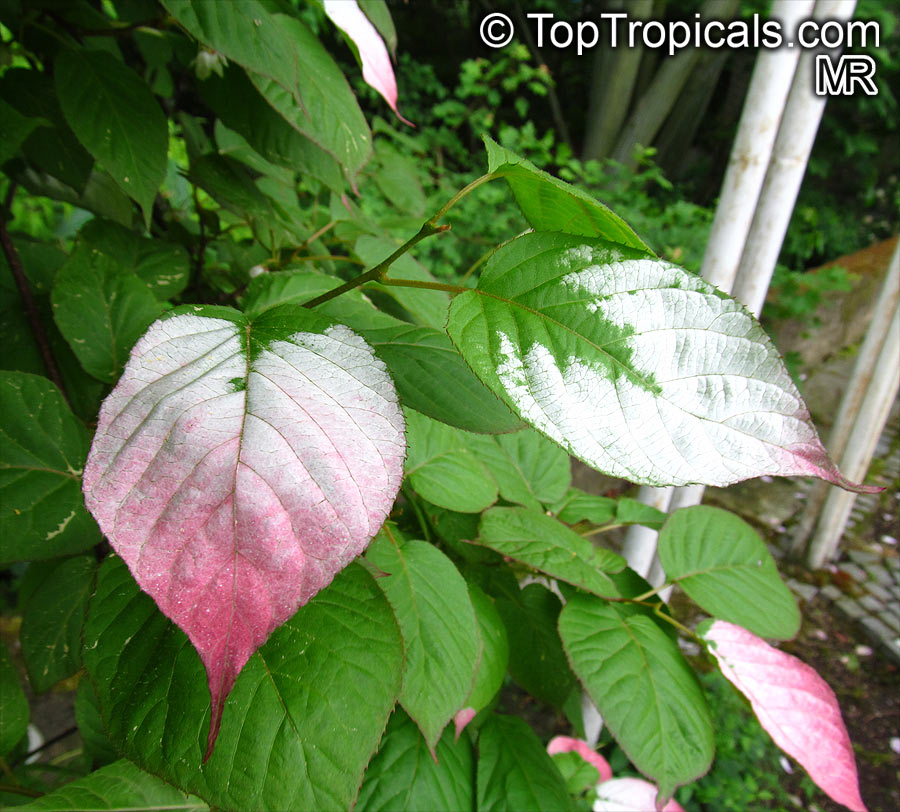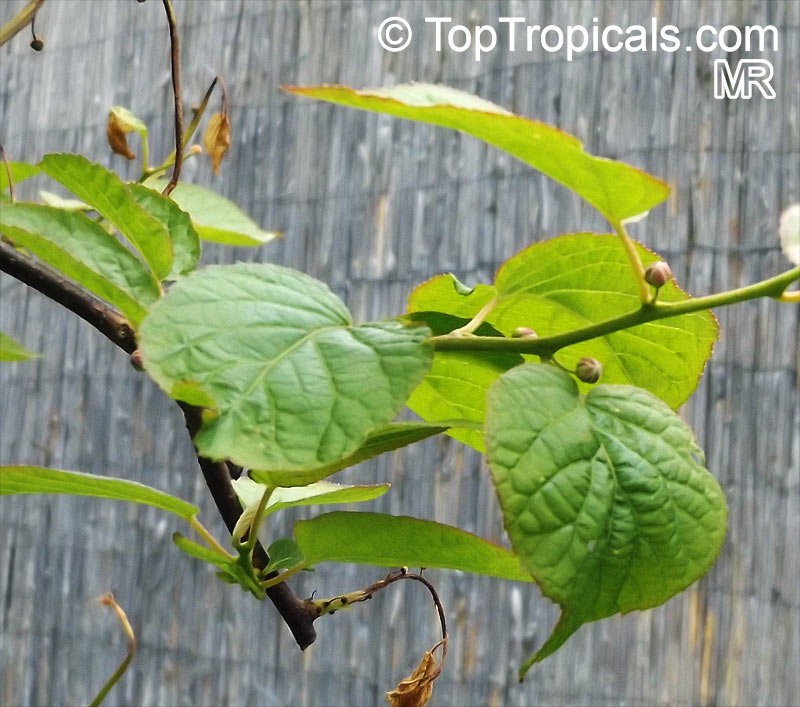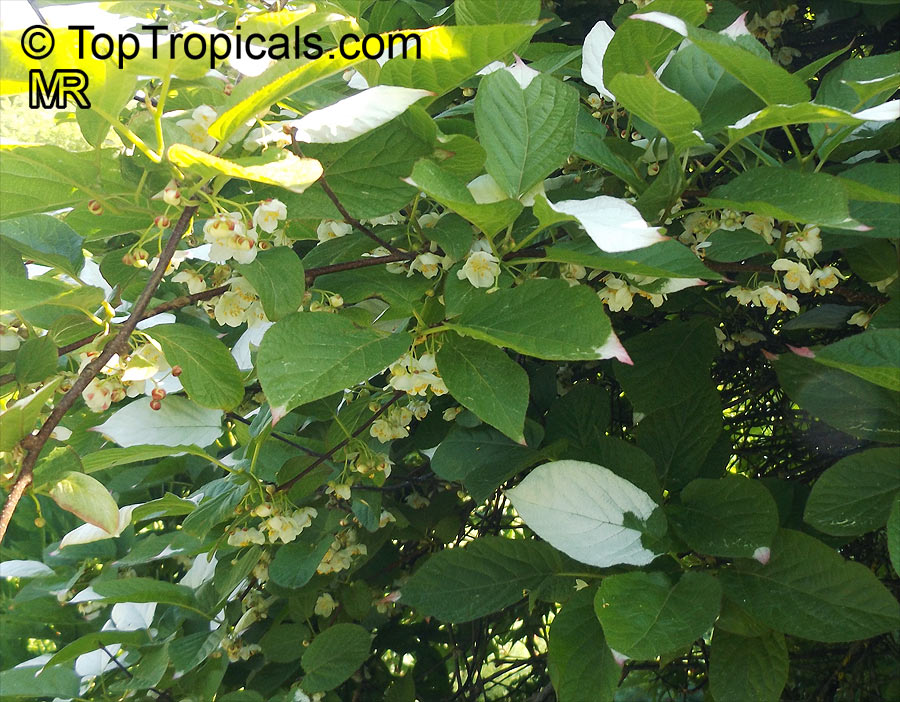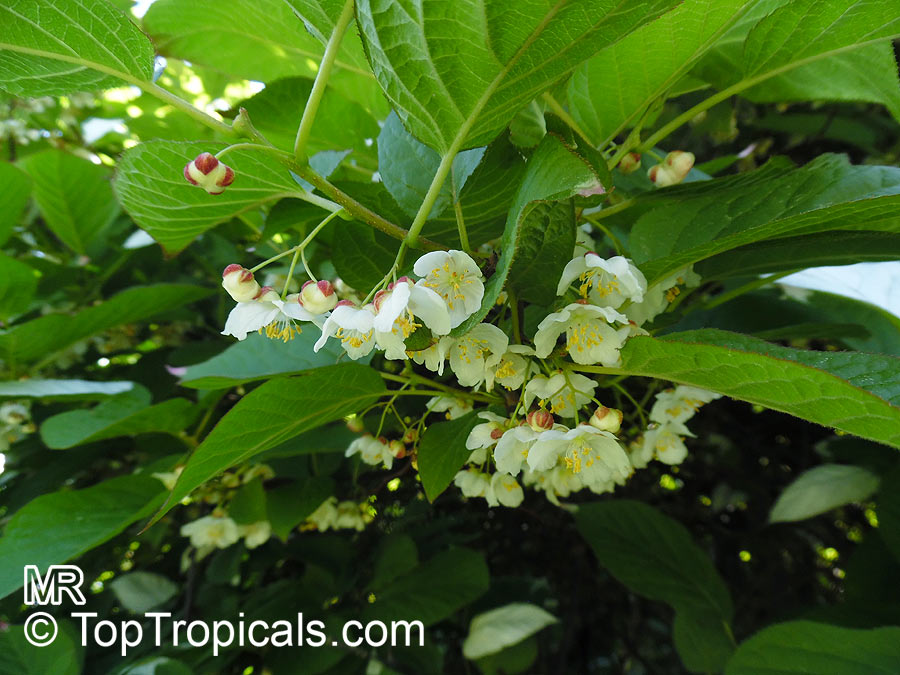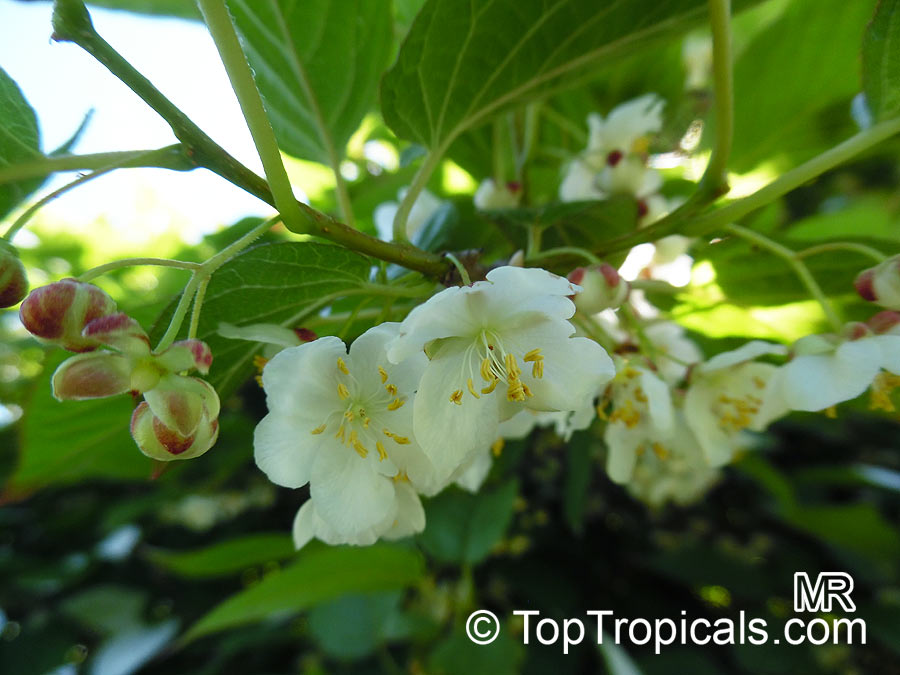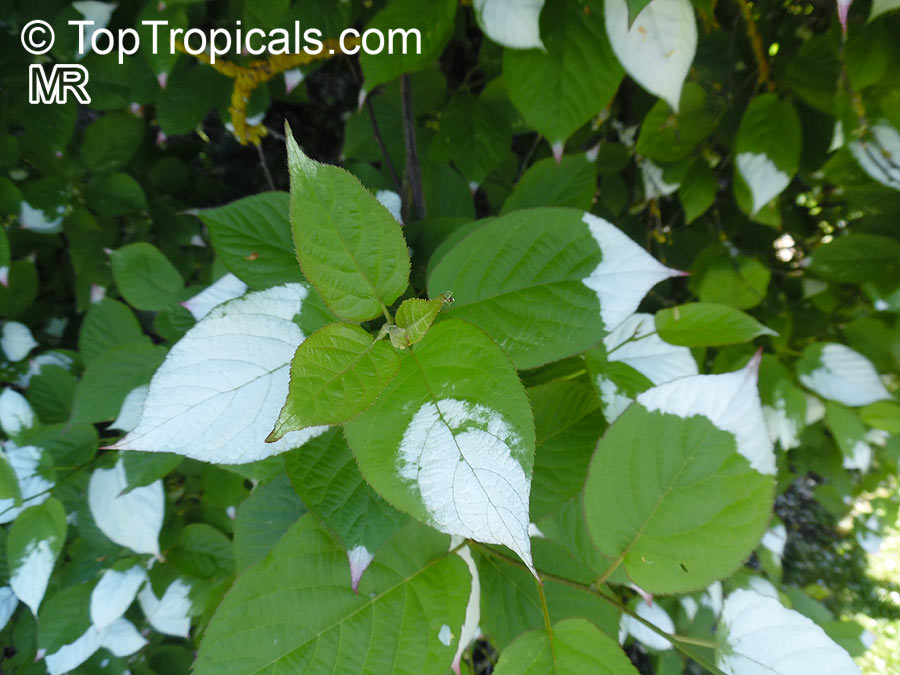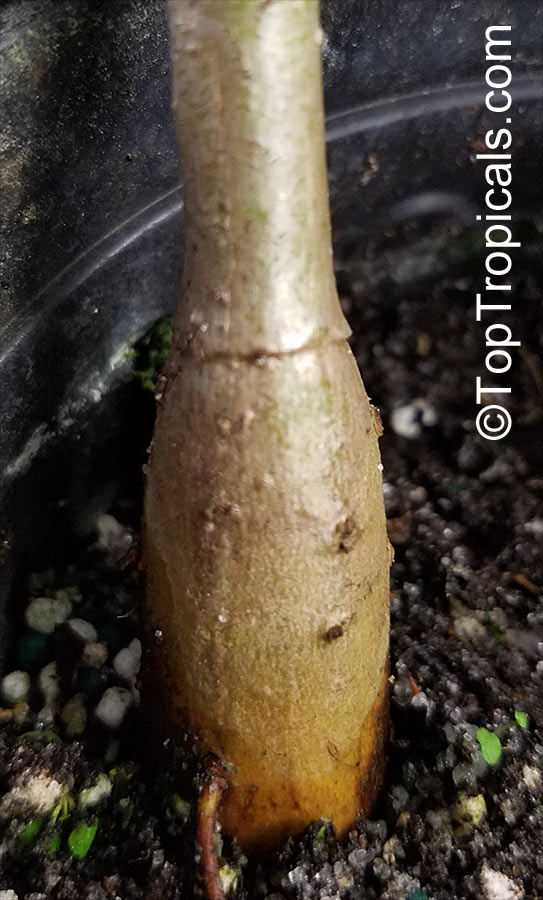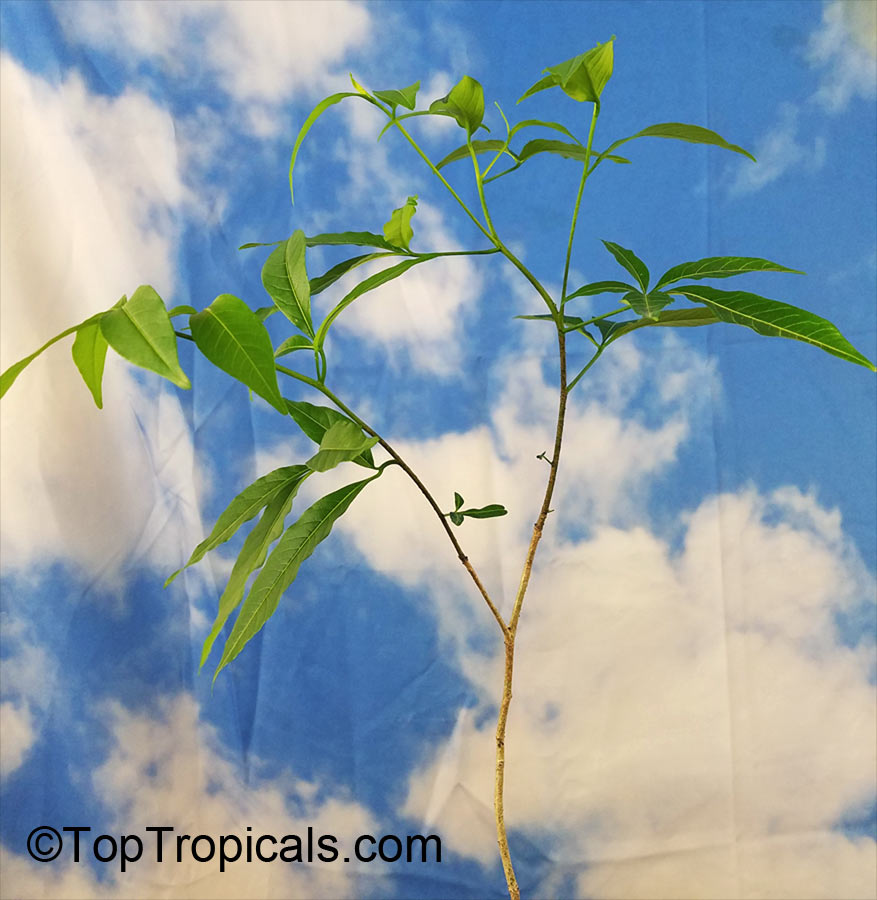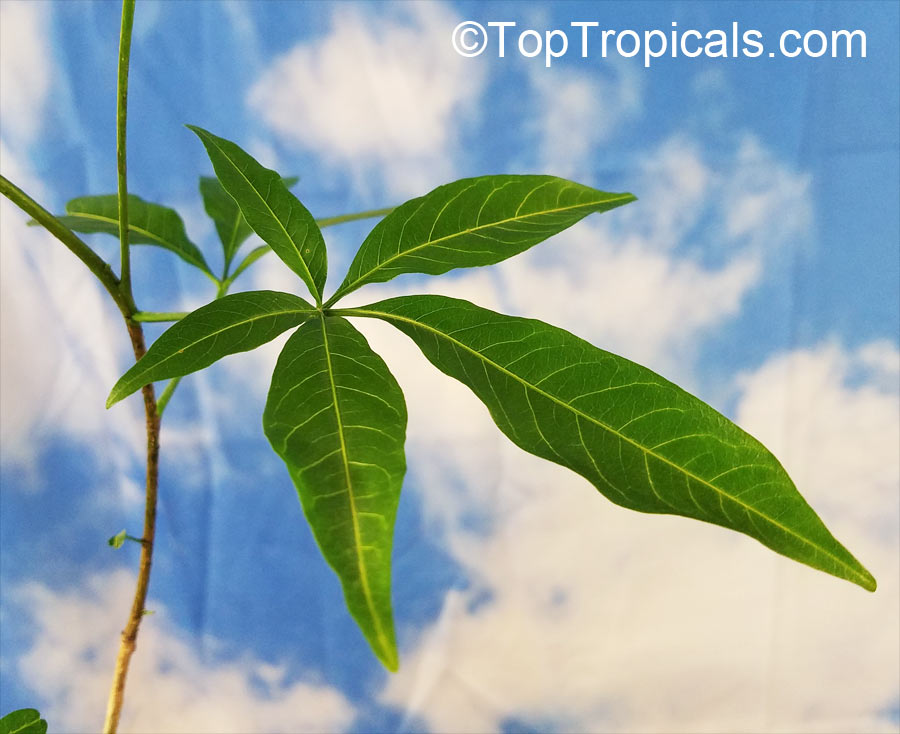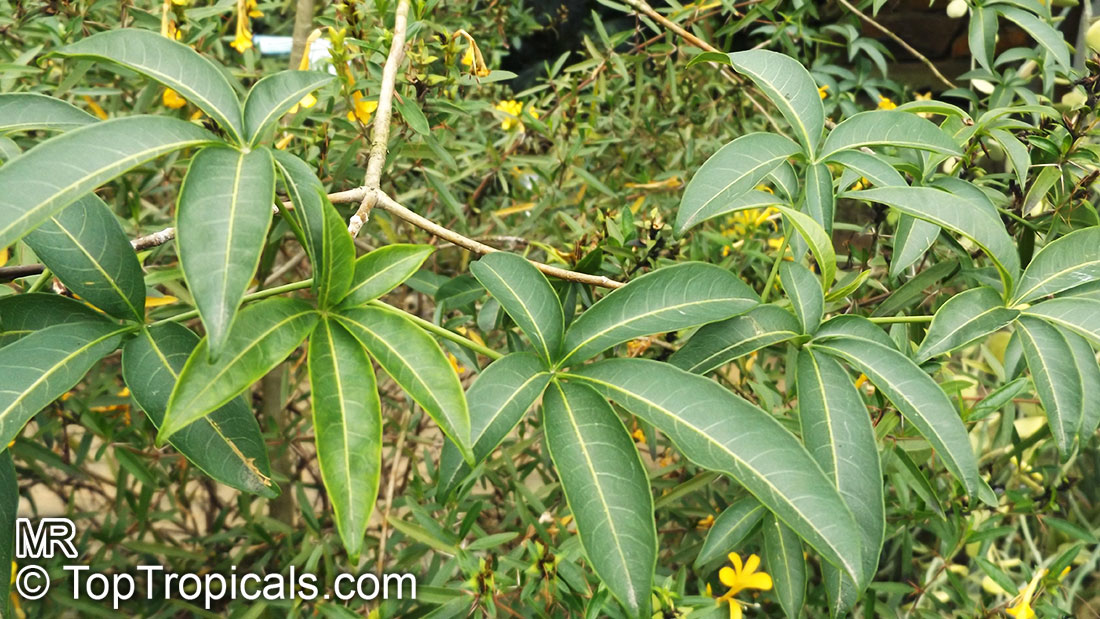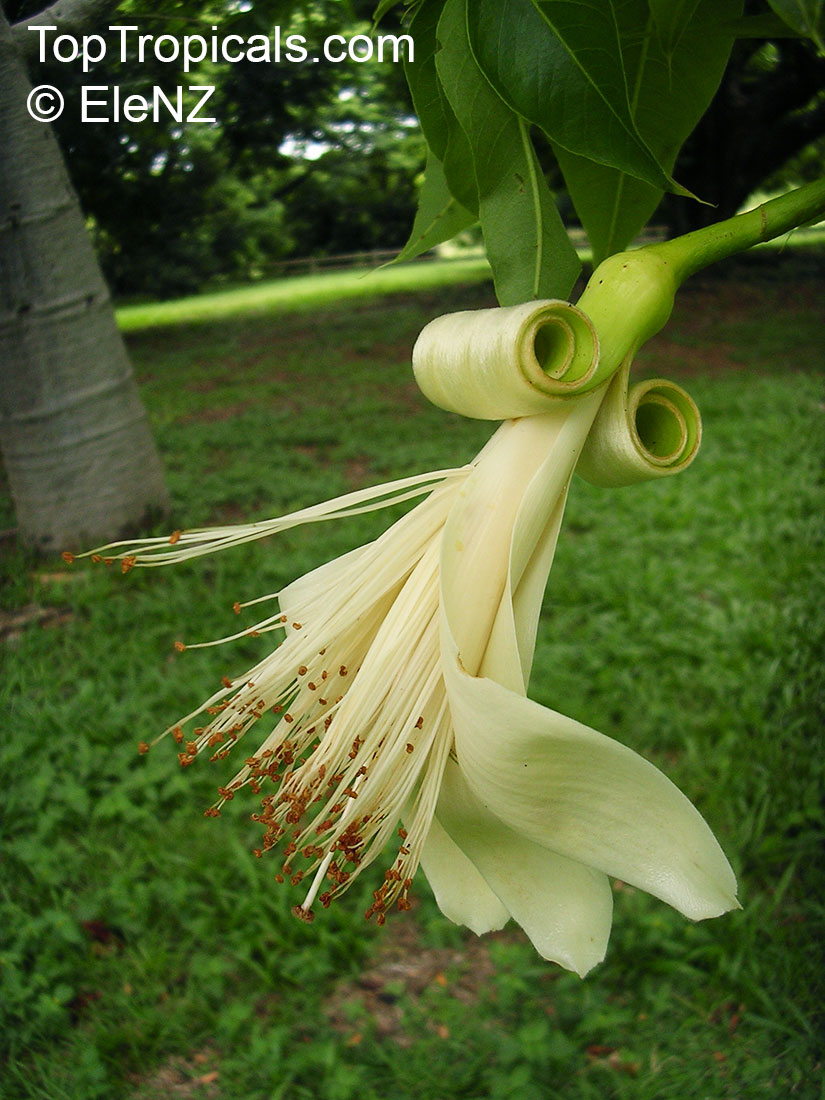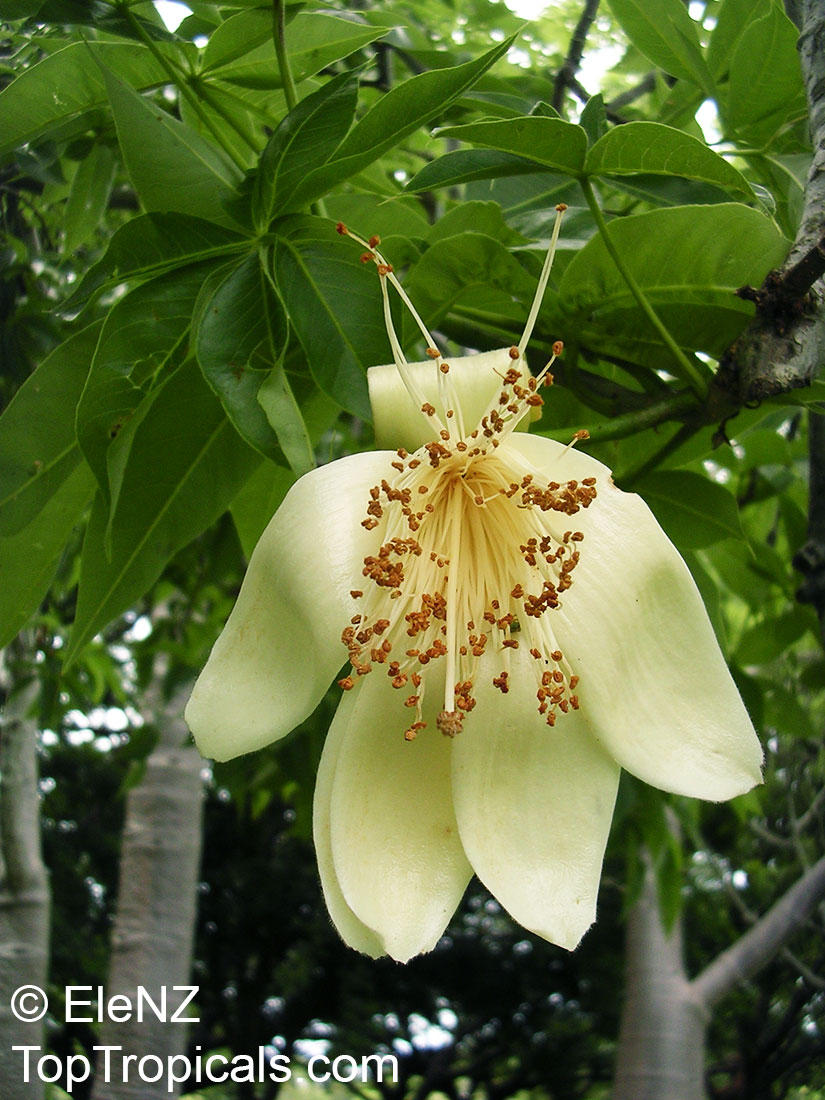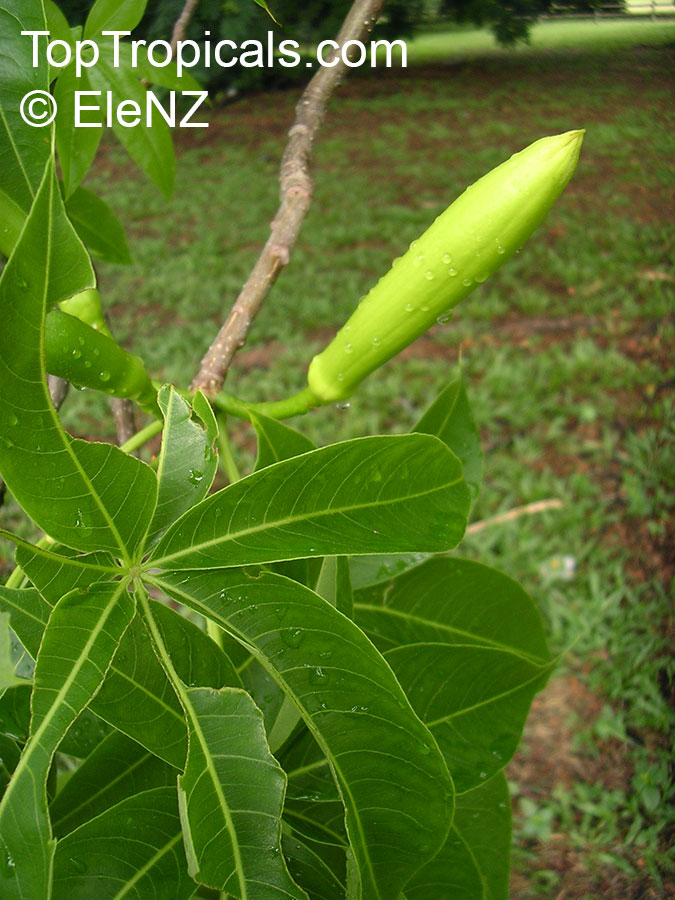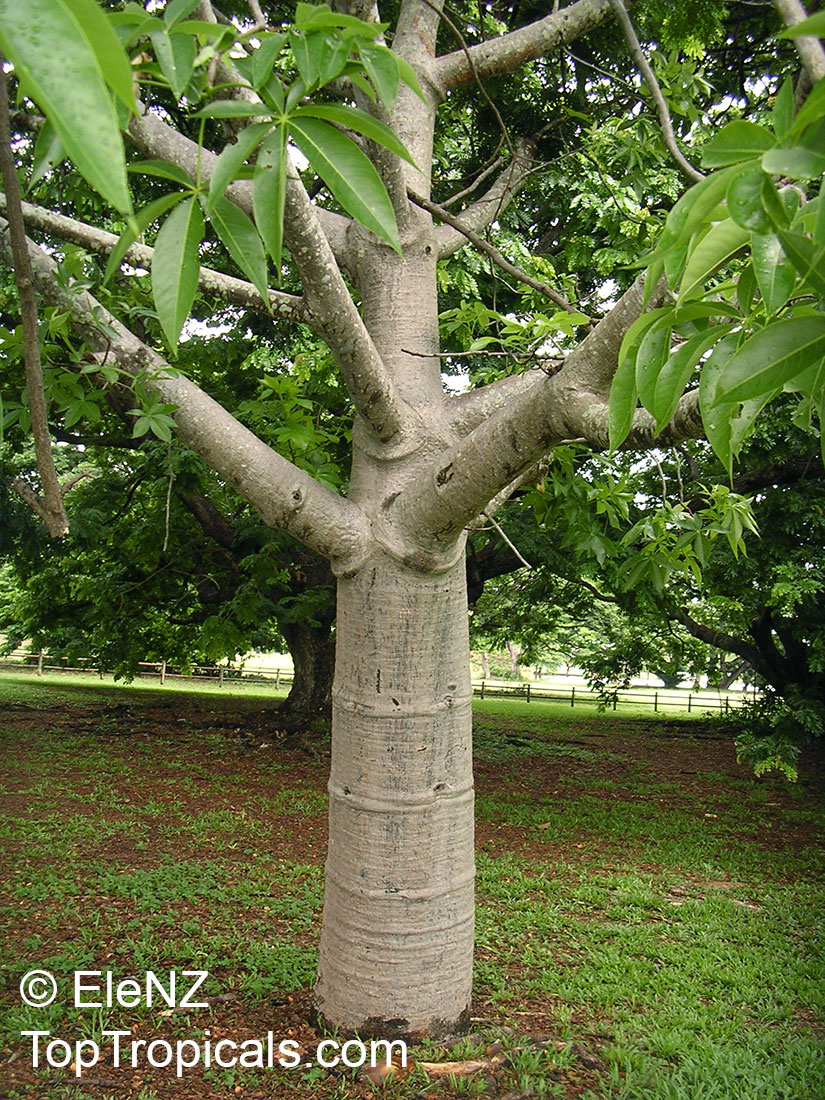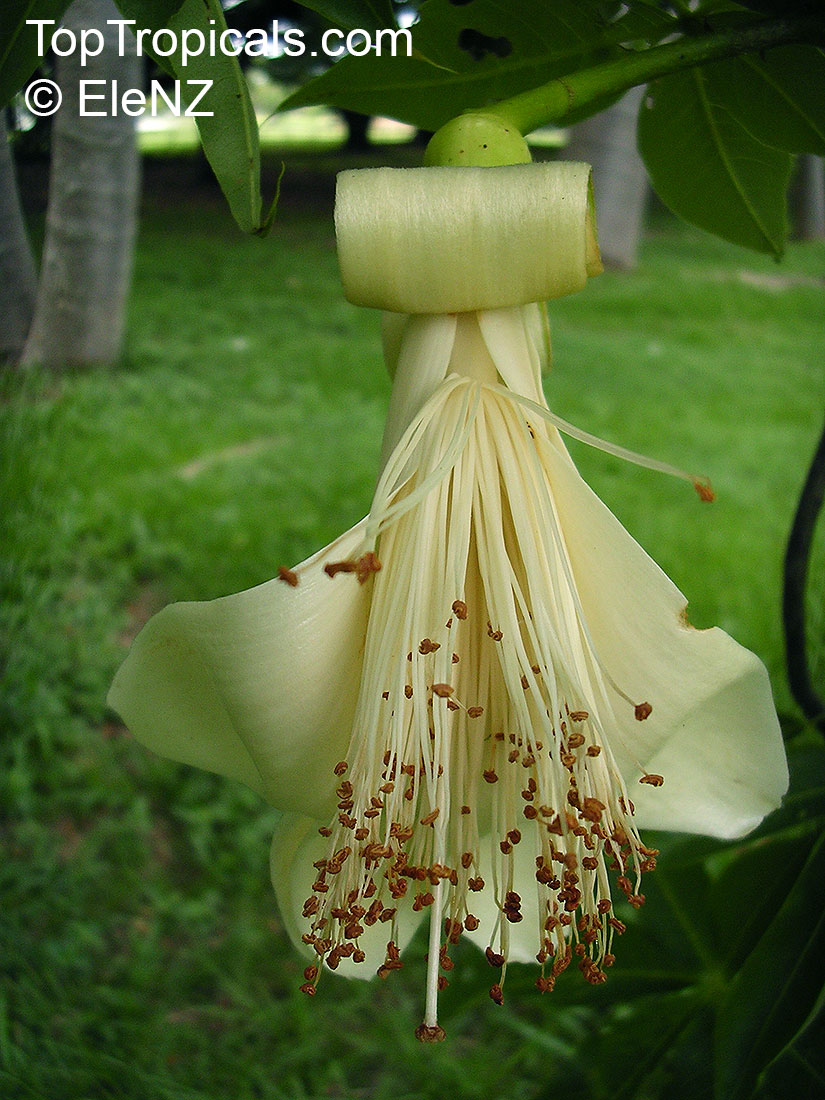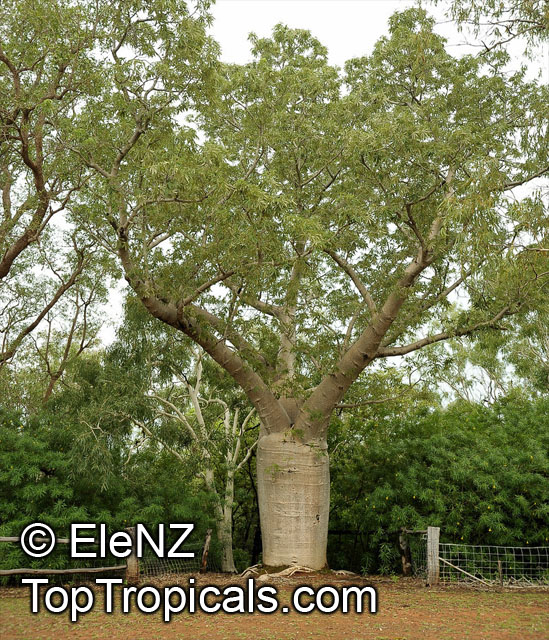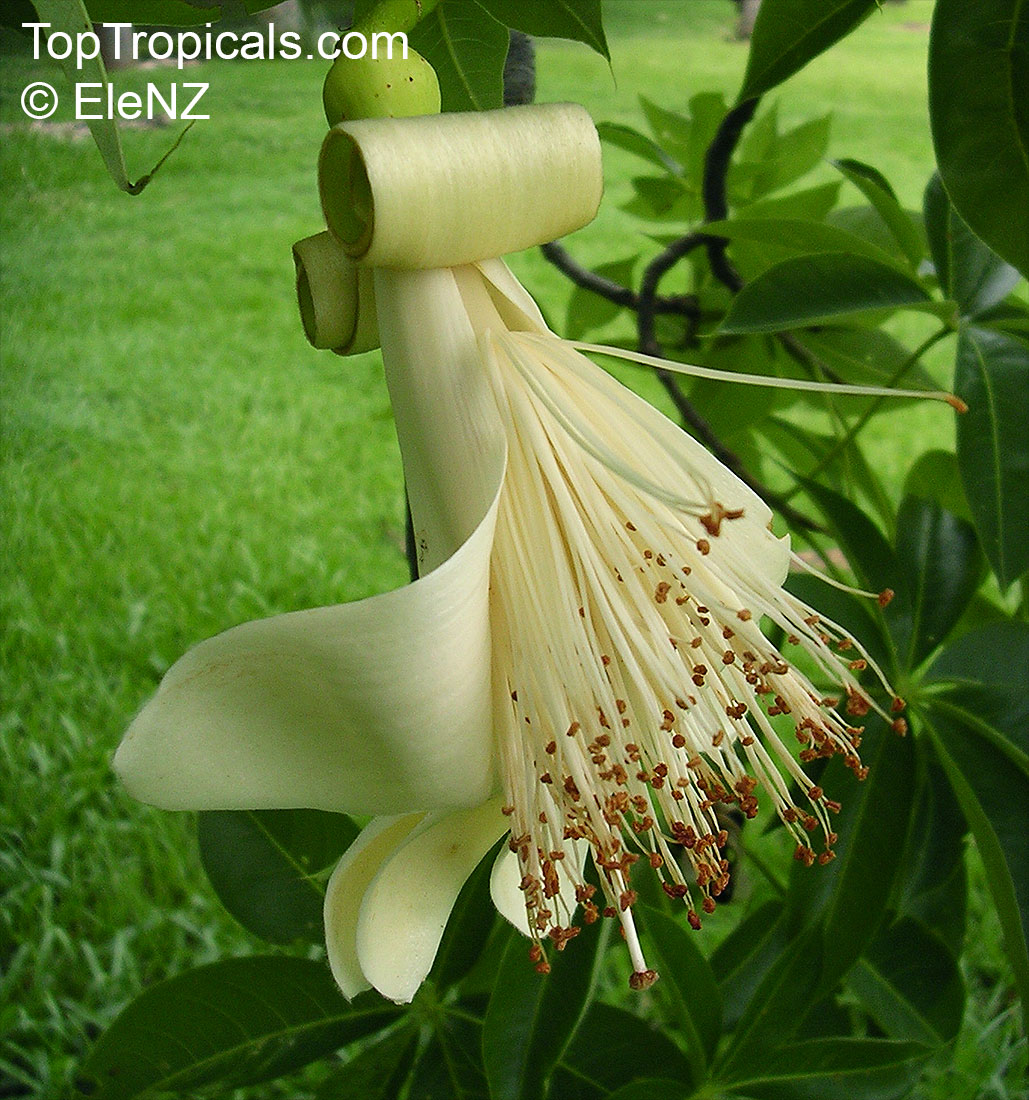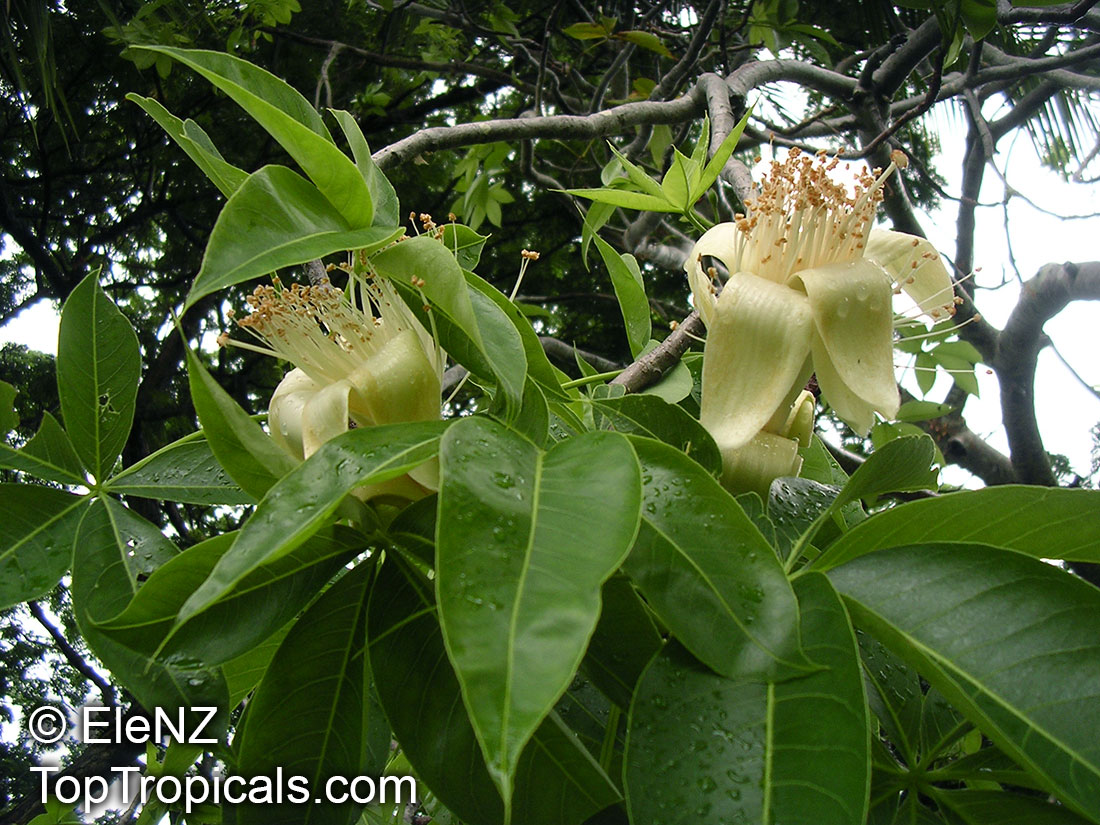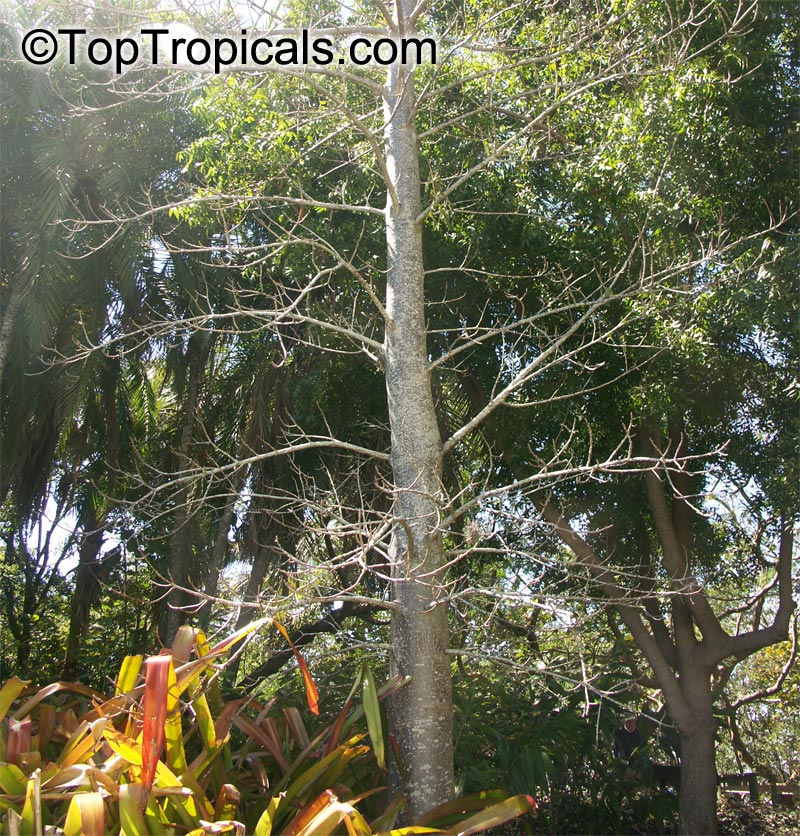Deciduous plant - Search results
Top Tropicals Plant Encyclopedia
| Number of plants found: 420 | Next | 
|
Go to page: | 1 | 2 | 3 | 4 | 5 | Last |
Botanical name: Acanthus sp.
Common names: Acanthus, Bear's Breeches, Mountain Thistle, Alligator Plant
Family: Acanthaceae
Origin: Mediterranean Basin, Asia










Acanthus sp., also known as Acanthus, Bear's Breeches, grows in full sun to partial shade and will thrive in most soils, provided they are well-drained. It is a thinly branched unusual perennial with interesting foliage, basal clusters of oblong to lance-shaped glossy, dark green leaves reaching up to 12 inches long. The leaves have silver marks and wavy margins. It produces showy pink flowers in the summer to fall.
The plant needs regular watering, but should not be over watered, as this can lead to root rot. It is a deciduous plant so it will lose its leaves during the winter months. It is a somewhat spiny, but attractive plant. For colder regions, it is recommended to grow Acanthus in a pot and move them indoors once it gets too cold to leave the plant outside. In these cases the plant should be placed in a south-facing window and watered regularly.
See picture of alligator skin.
Recommended Fertilizer: SUNSHINE Megaflor - Bloom Nutrition Booster
Last one
Botanical name: Acer japonicum
Common names: Amur maple, Downy Japanese maple, Fullmoon maple
Family: Sapindaceae
Origin: Japan









Acer japonicum is a small deciduous tree growing to 5-10 m (rarely 15 m) tall, with a trunk up to 40 cm in diameter. In cultivation, it is often only a shrubby tree with multiple trunks joining at ground-level. In autumn, the leaves turn bright orange to dark red.
Botanical name: Acer palmatum
Common names: Japanese maple, Palmate maple, Smooth Japanese maple
Family: Sapindaceae
Origin: Japan









Acer palmatum includes thousands of named cultivars with a variety of forms, colors, leaf types, sizes, and preferred growing conditions. Heights of mature specimens range from 0.5 to 25 m (1.5 to 82 ft), depending on type.
Botanical name: Acer sp.
Common names: Red Maple, Soft Maple
Family: Sapindaceae









Maple is a widespread deciduous tree popular in eastern North America.
Many of its features, especially its leaves, are quite variable in form. Among these features it is best known for its brilliant deep scarlet foliage in autumn. Red Maple is adaptable to a very wide range of site conditions. It can be found growing in swamps, on poor dry soils, and most anywhere in between. Elevation is also not a limiting factor in its range. Due to its attractive fall foliage and pleasing form, it is often used as a shade tree for landscapes. It is used commercially on a small scale for maple syrup production as well as for its medium to high quality lumber. It is the State Tree of Rhode Island. It is very cold hardy.
Maple is a very popular plant in Japan and a subject for bonsai. Autumn in Japan is celebrated with colorful autumn leaves known as momijigari. The foliage of trees light up the Japanese landscape. Scarlet Japanese maples flash against emerald conifers, this is the beauty of momijigari as you view the spectacular colors of changing leaves.
The maples have long been known to be closely related to the family Sapindaceae.
This plant is grown from seed collected in Florida, so it is suited for planting in Florida. It may perform worse up North.
Recommended Fertilizer: SUNSHINE Robusta - Rapid Growth Booster
Botanical name: Actinidia arguta
Common names: Hardy Kiwifruit, Kiwi Berry, Arctic Kiwi, Baby Kiwi, Dessert Kiwi, Grape Kiwi, Northern Kiwi
Family: Actinidiaceae
Origin: Japan, Korea, Northern China










The fast-growing, climbing vine is very hardy, and is capable of surviving slow temperature drops to -34 C (-30 F), although young shoots can be vulnerable to frost in the spring. This vine needs a strong (vines are heavy) support structure on which to grow such as a trellis, arbor, patio overhead, fence or wall.
Botanical name: Actinidia deliciosa
Common names: Kiwi Fruit, Chinese Gooseberry
Family: Actinidiaceae
Origin: China










Actinidia deliciosa (Kiwi Fruit) can grow in full sun and requires regular water. The vine or creeper is deciduous, dropping its leaves in winter. The mature plant is cold hardy in the USDA Zones 7-9. The flowers are white or off-white, and the plant attracts butterflies and hummingbirds. The flowers are fragrant, dioecious or bisexual. Male and female flowers appear on different plants and both sexes have to be planted in close proximity for fruit set.
The fruits can be eaten fresh, juiced, dried, or preserved. The health benefits of Kiwifruit are immense. It is a very good source of dietary fiber, vitamin C, vitamin K, potassium and copper. It also contains vitamins A and E, folate, and some omega-3 fatty acids. One kiwifruit contains about 46 calories and provides 13 percent of the daily Recommended Dietary Allowance (RDA) of vitamin C and, 9 percent of the RDA of dietary fiber. Actinidia deliciosa has the potential to produce hundreds of fruit if planted with another compatible and cross-pollinated variety. The plants may take 3-4 years to bear fruit, but when it matures it can produce great quantities of kiwifruit. The fruit can be harvested when the fruit turns a golden-brown color, and when it is easily plucked from the vine.
Botanical name: Actinidia kolomikta
Common name: Kiwi
Family: Actinidiaceae
Origin: East Asia








Actinidia kolomikta is a vine or creeper from the Actinidiaceae family, originating from East Asia. It has decorative foliage, with leaves turning red, pink and white in the fall. The leaves are green and creamy white and can be up to 4 inches long. It is a deciduous plant, which means it loses its leaves in the winter.
Actinidia kolomikta prefers semi-shade and regular water, but can tolerate moderate water. It is a fast growing plant, reaching up to 30 ft. It requires support to grow and climb, however it will not produce fruit without both a male and female plant. It is grown in USDA Zone 4-9.
The fruit of the Actinidia kolomikta is sweet and grape-sized, with a yellow or light orange skin. The green, juicy flesh has a light, sour flavor. It can be eaten fresh or cooked, and is a good source of Vitamin C, Vitamin A, and dietary fibers. The fruit can also be used to make jams and jellies. A mature plant can produce up to 100 fruits per season, depending on the care and conditions.
Actinidia kolomikta is an edible, ornamental plant that is easy to care for and can provide a good harvest of sweet, juicy fruit.
Botanical name: Adansonia grandidieri
Common names: Grandidier's Baobab, Giant Baobab
Family: Malvaceae (Formerly:Bombacaceae)
Subfamily: Bombacoideae
Origin: Madagascar







Native to Madagascar and growing with a massive, cylindrical bole, Grandidier's Baobab, Adansonia grandidieri, can be a large tree, reaching up to 80 ft tall. The tree is mostly found in a restricted area, threatening its survival due to habitat destruction and regeneration. Despite being threatened, Grandidier's Baobab remains very versatile and is popular among bonsai enthusiasts.
Grandidier's Baobab can prosper in full sun, or on rare occasions in partial shade, and needs moderate watering. If grown in cold regions, pots should be elevated to ensure better drainage and should be sheltered during winter. It has a flat-topped, light crown with few branches, and white to off-white flowers. It produces edible fruits, with oil-rich seeds, making it a valuable source of food and fiber for thatching.
Grandidier's Baobab can produce hundreds of fruits, depending on the age and weather conditions, each fruit weighing about 250g. The fruits are orange and oval-shaped with a pulp containing a few large seeds. It has a pleasant taste and can be used to make refreshing drinks, jams, salads, and other desserts. Grandidier's Baobab is also rich in vitamins, minerals and antioxidants such as vitamin C, phosphorus, and fiber, providing healthy benefits and being an important component of the Malagasy diet.
Botanical name: Adansonia gregorii
Common names: Boab, Baobab, Australian Bottle Tree
Family: Malvaceae (Formerly:Bombacaceae)
Subfamily: Bombacoideae
Origin: Northern Territory, West Australia






Adansonia gregorii is native to the northern parts of Western Australia and the Northern Territory. Once appropriate conditions are provided, it thrives in USDA zoning 9-11, and can reach up to 20 feet tall. It prefers a full sun location and regular watering, usually around 1-2 times a week. The swallow-shaped trunk, in combination with its light green leaves, gives the plant an interesting texture and an overall rounded-look.
The flowers are the showpieces of the Adansonia gregorii, ranging from off-white to white in color and bell-like in shape. They are known to attract butterflies and hummingbirds which adds a whimsical, airy feel to the garden.
The Boab tree is deciduous and sheds its leaves during the winter and spring months. Once it goes dormant in the late summer or early autumn, it is best to preserve the existing moisture level.
Adansonia gregorii is best grown in pots in colder regions. Loamy soil is preferred and watering once a week is more than enough. Depending on the climate and indoor location and temperature, the Boab tree may benefit from careful pruning to reduce its growth so it can comfortably fit in its container. Keeping the moisture level during its dormant season is essential to prevent any damage to the plant.
Botanical name: Adansonia madagascariensis
Common name: Madagascar Baobab
Family: Malvaceae (Formerly:Bombacaceae)
Subfamily: Bombacoideae
Origin: Madagascar






This tree has a unique, swollen bottle-like trunk. This deciduous tree bears large, red flowers and ball-like fruits.
| Next |  |
Use link to repeat this search:
https://toptropicals.com/cgi-bin/garden_catalog/cat.cgi?search_op=and&keyword_op=and&language=e&number=10&no_change_lang=1
&v1=dds&user=tt&sale=1&first=0
